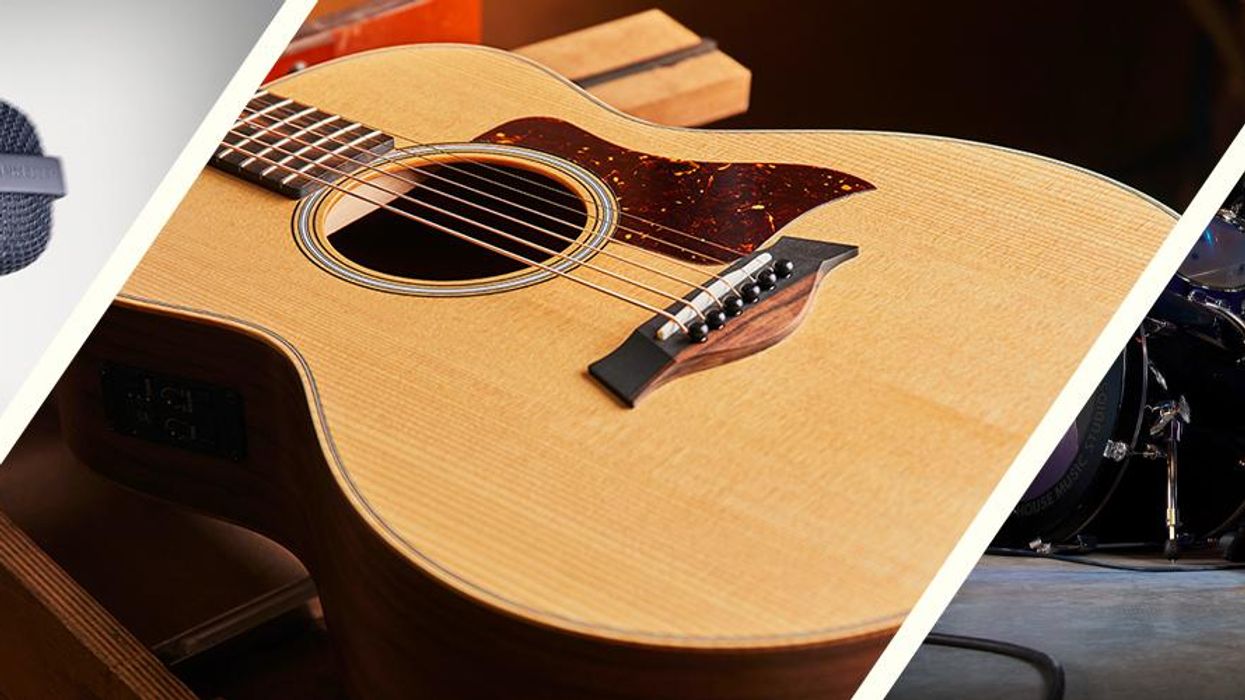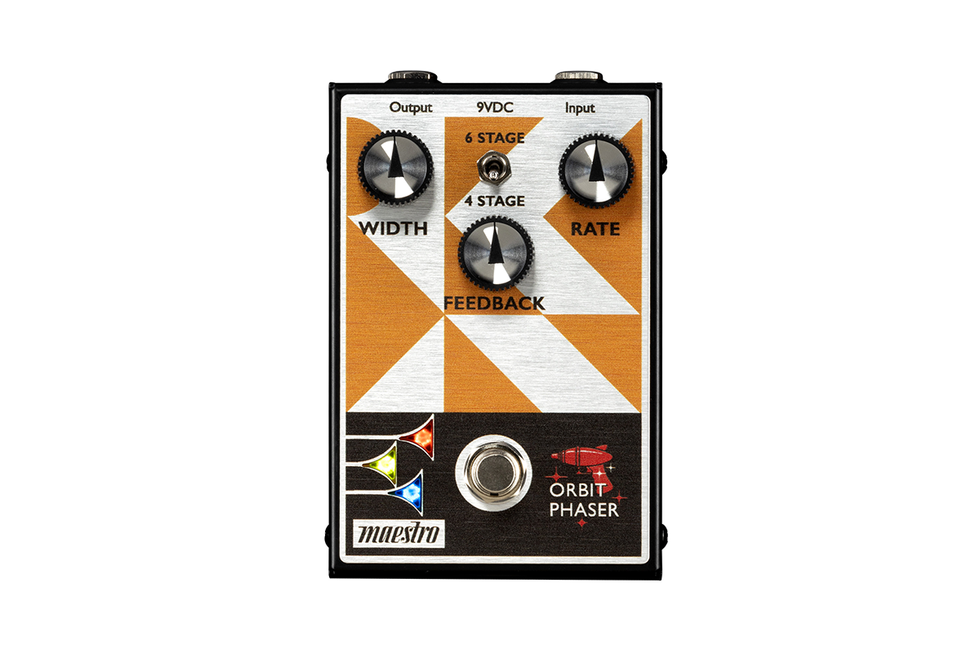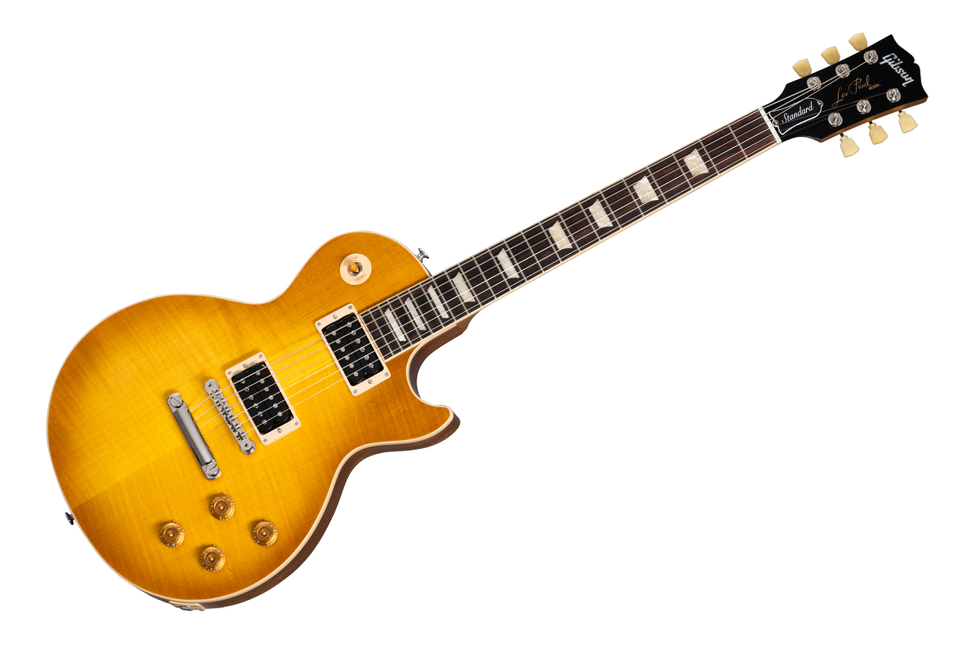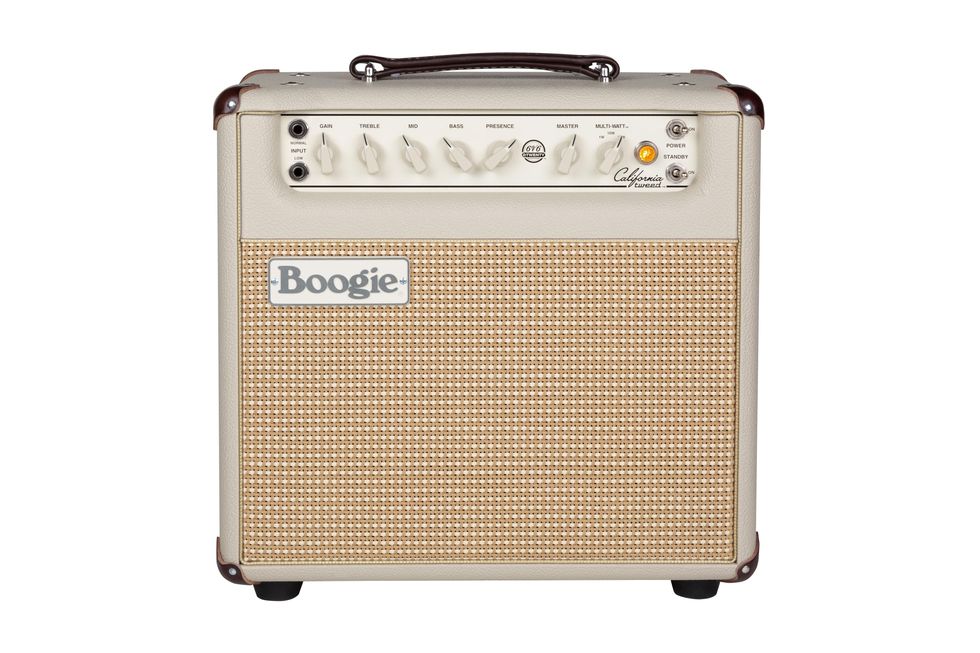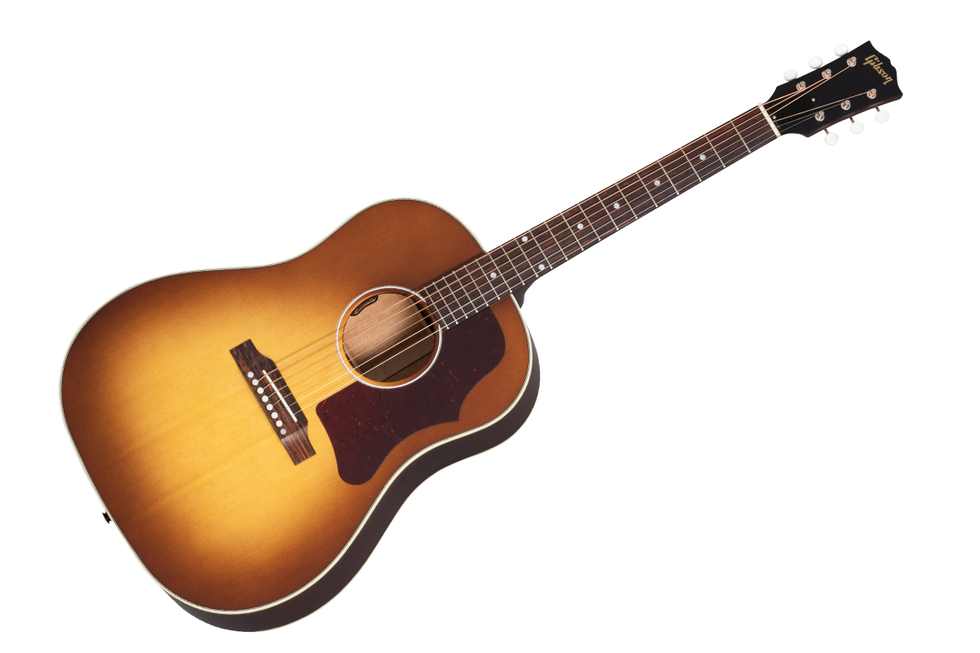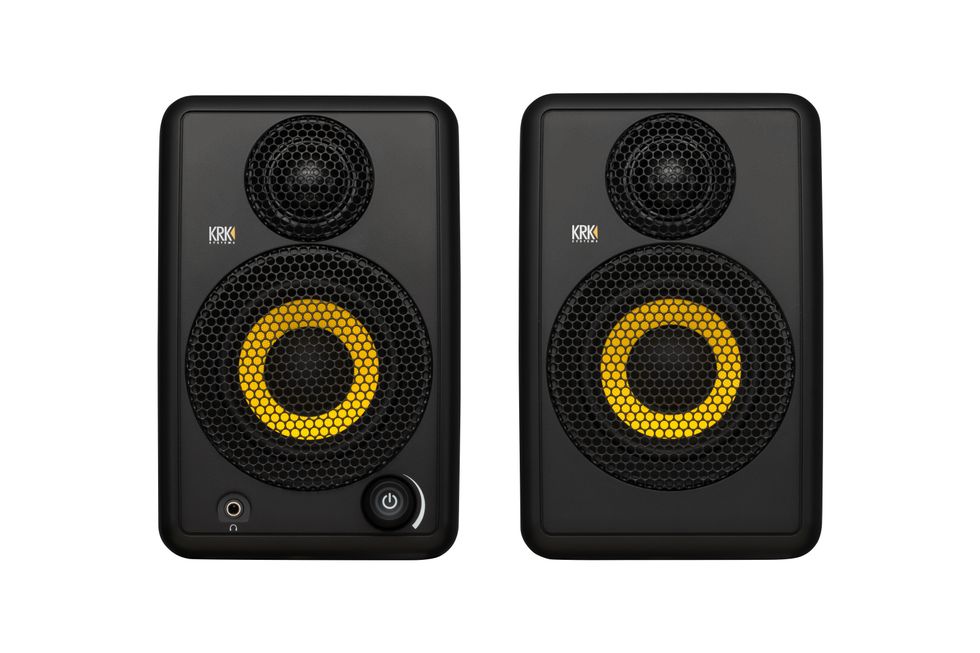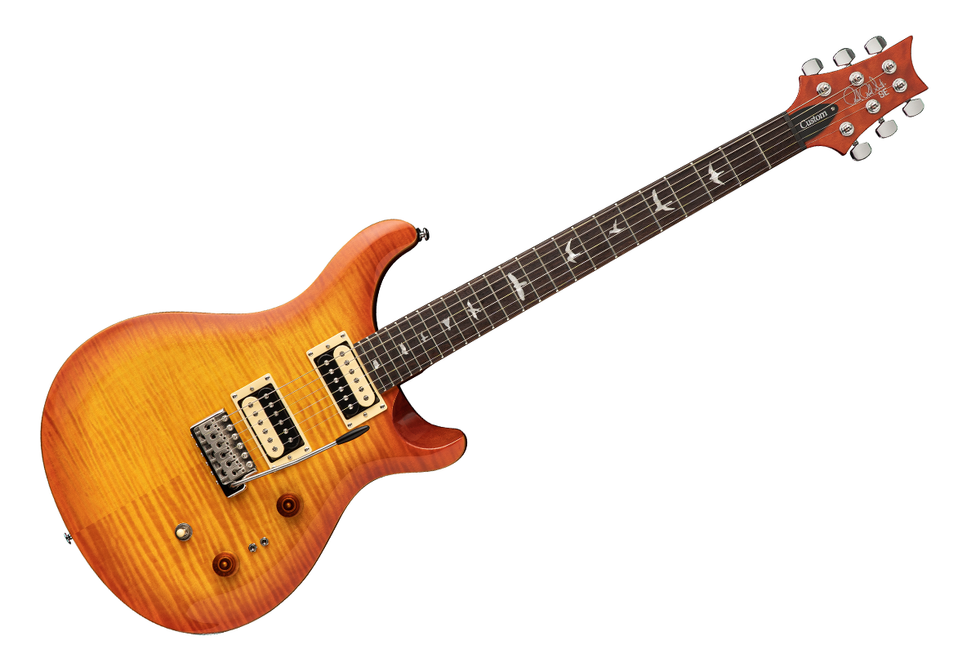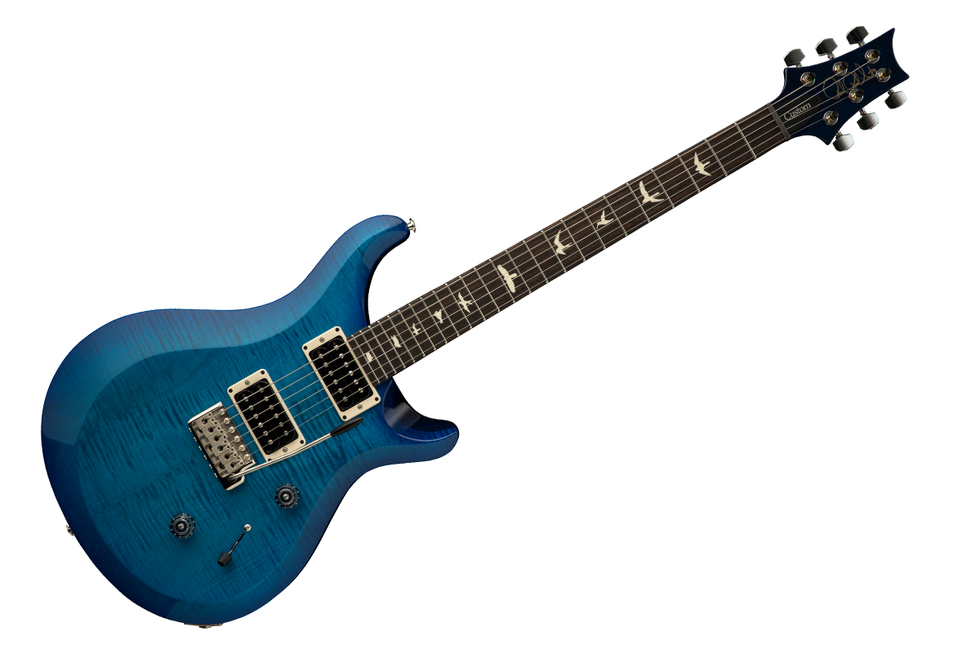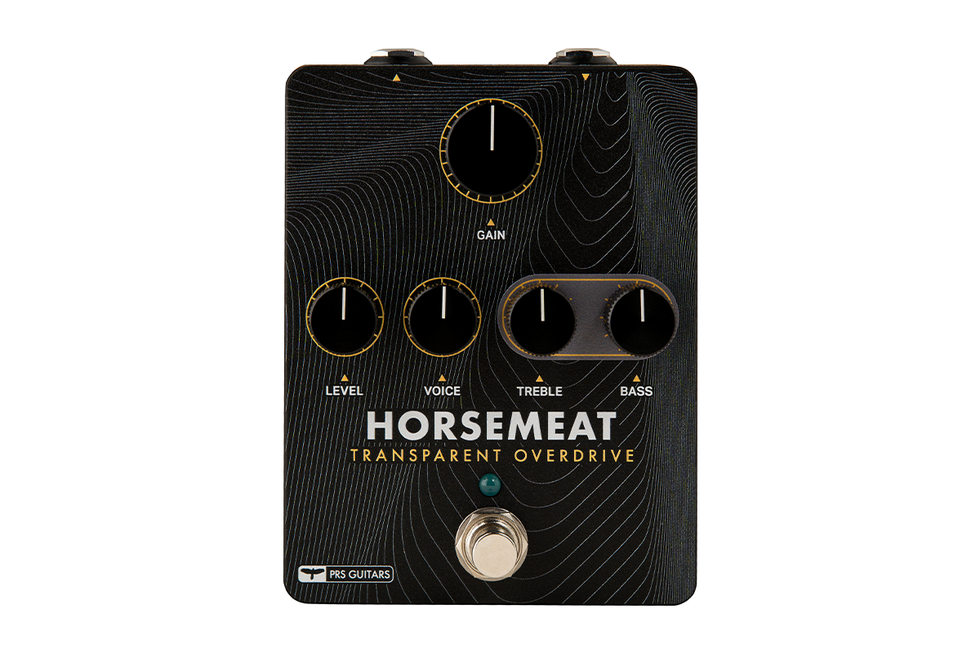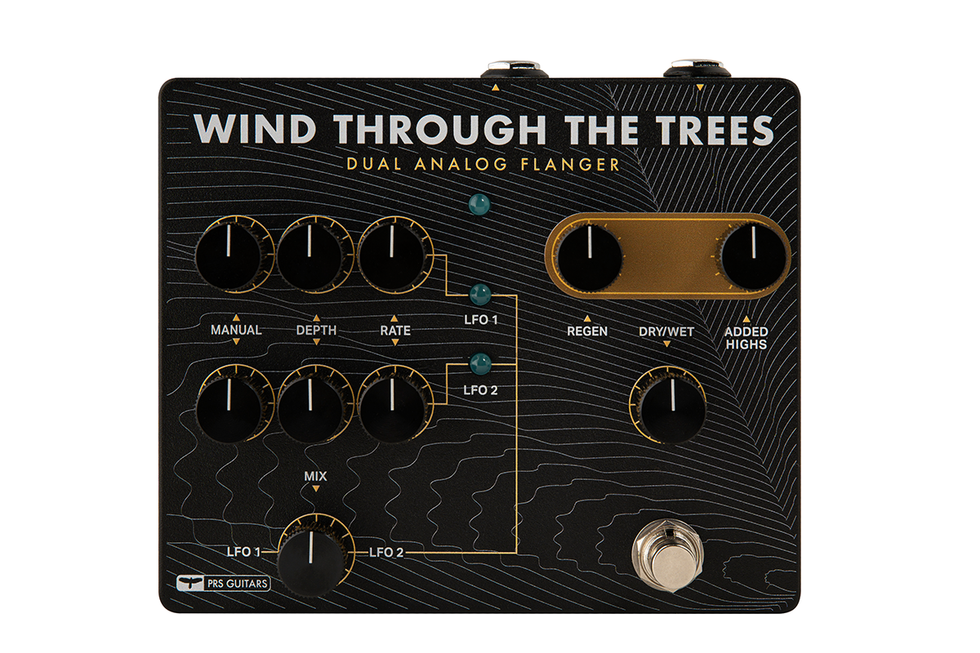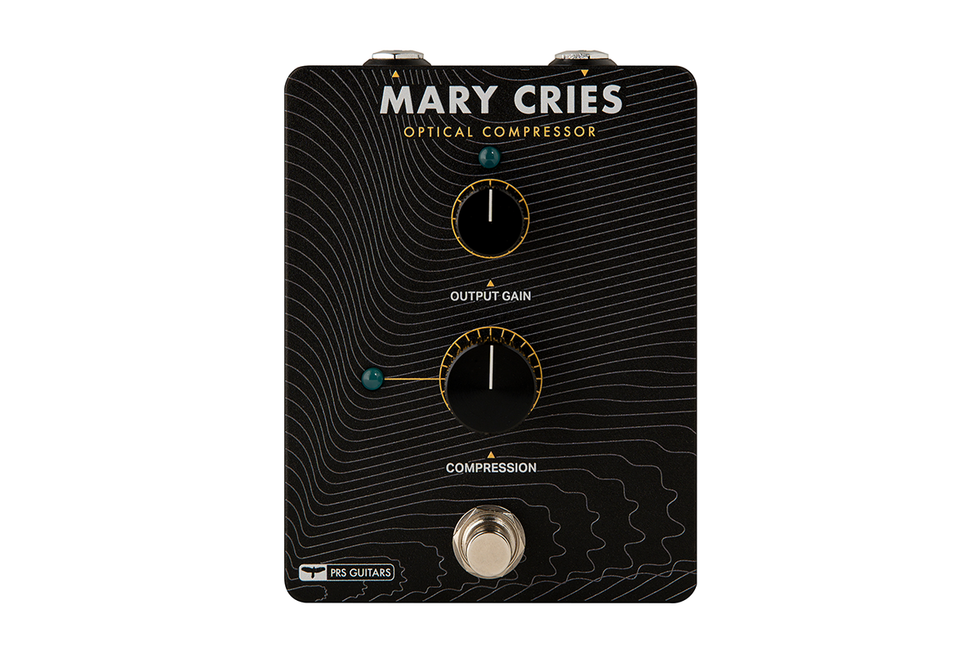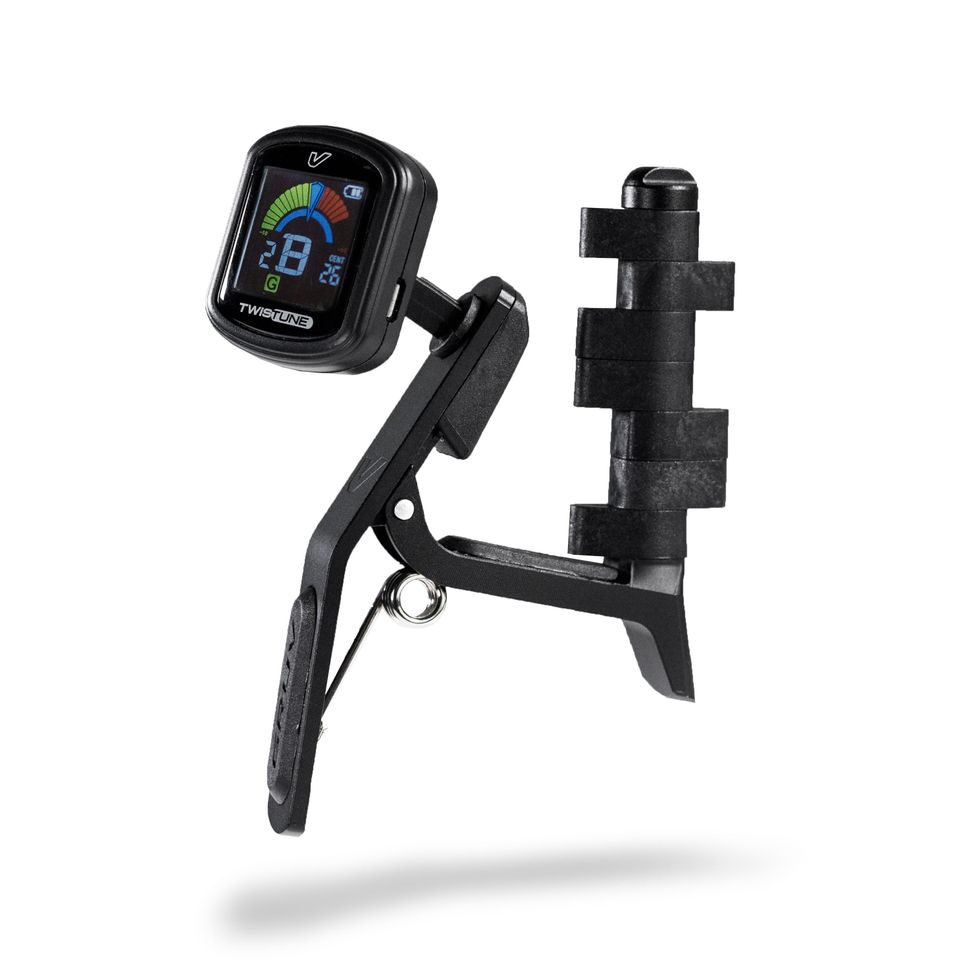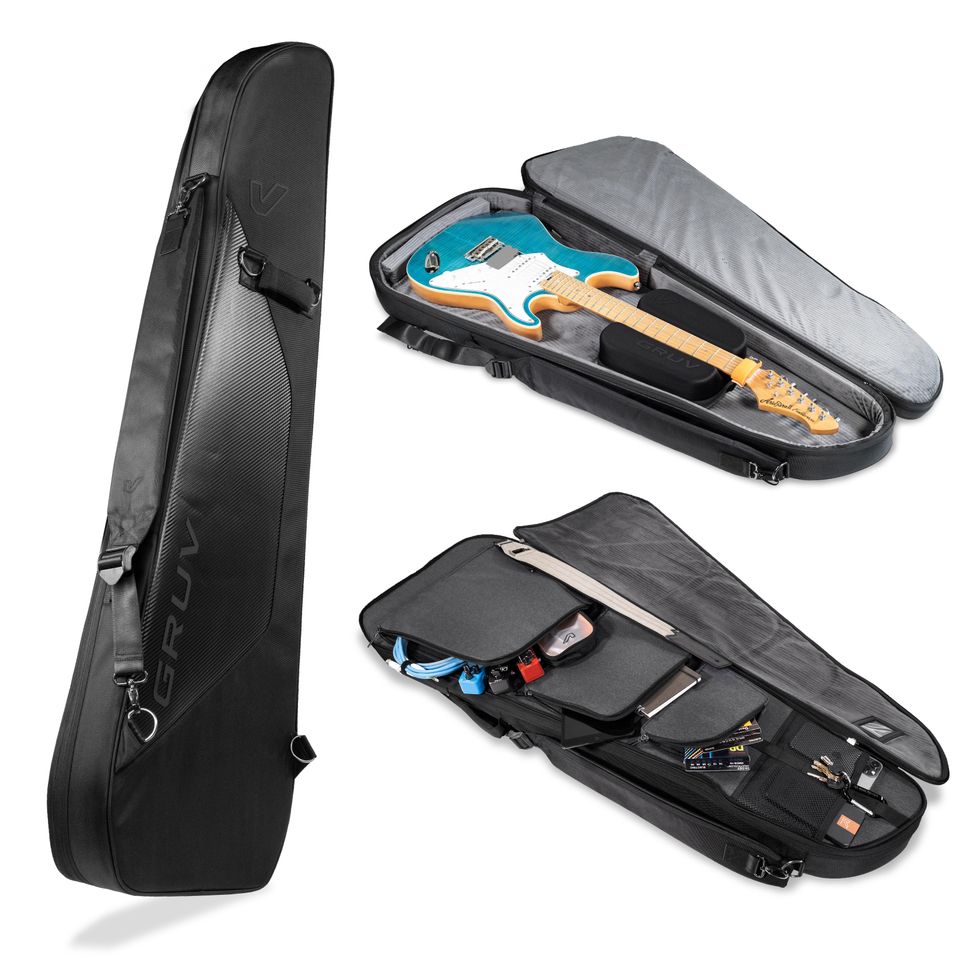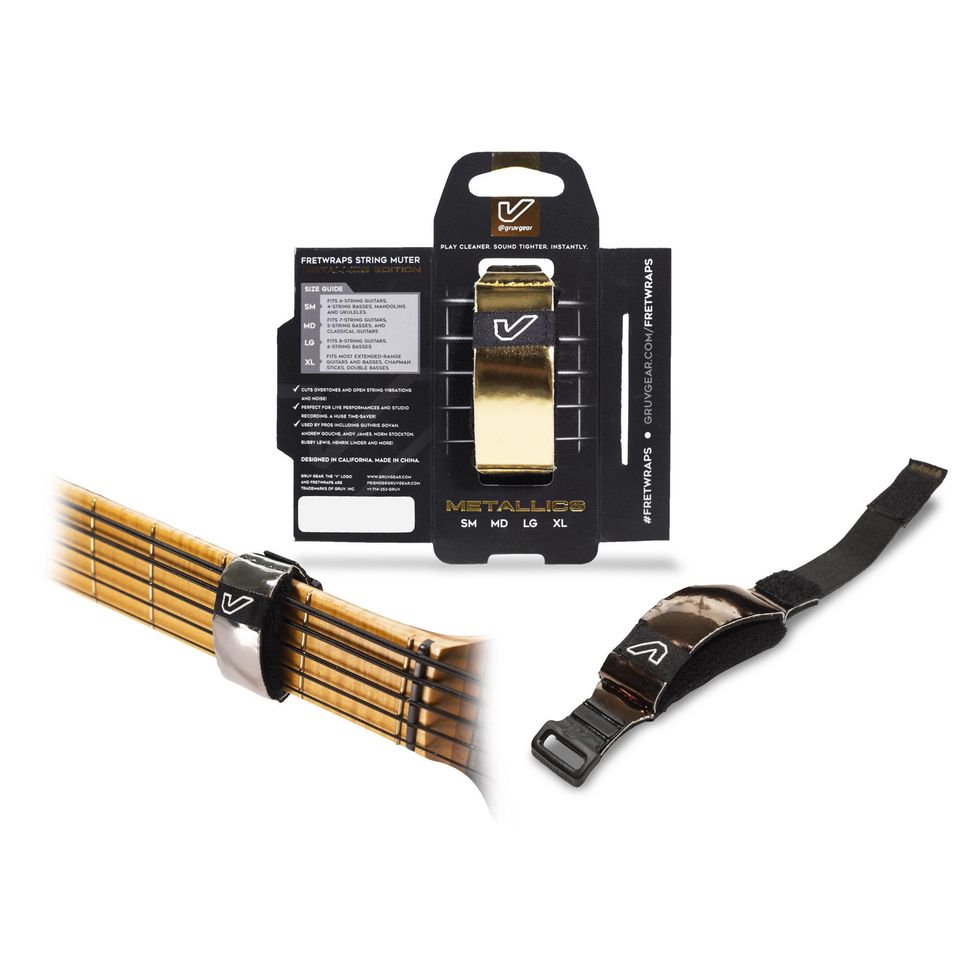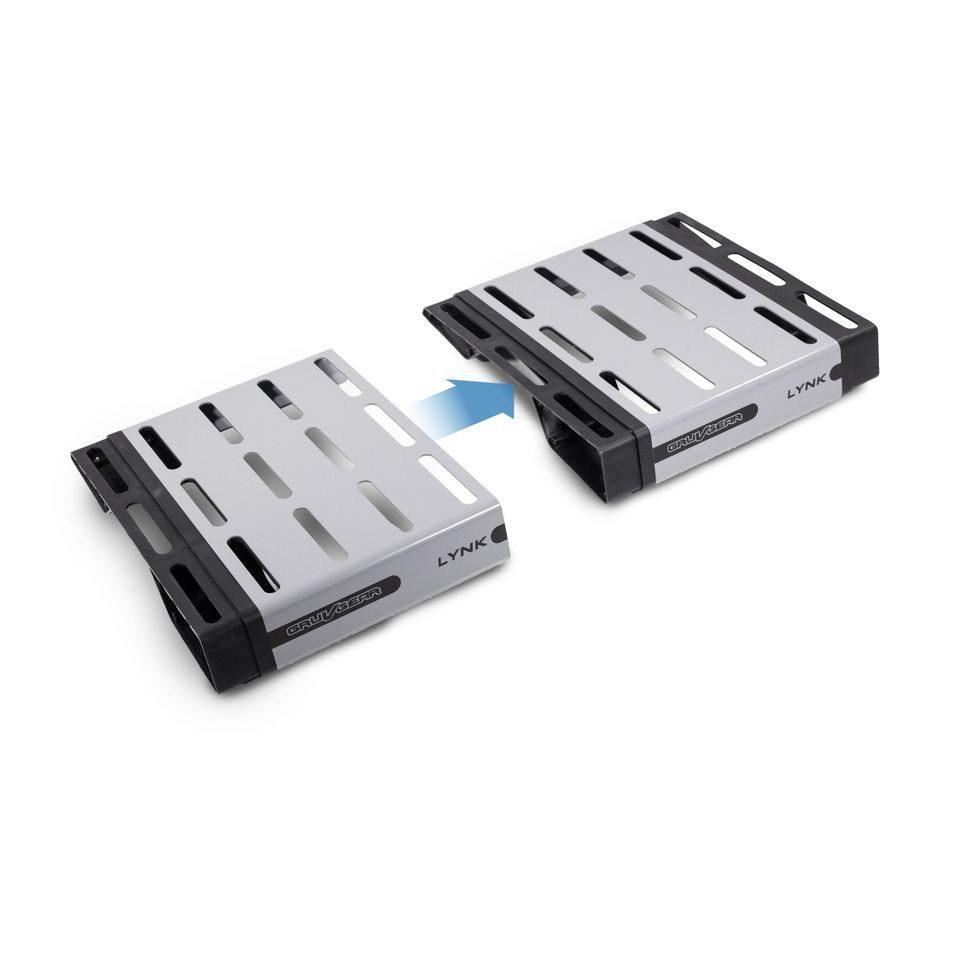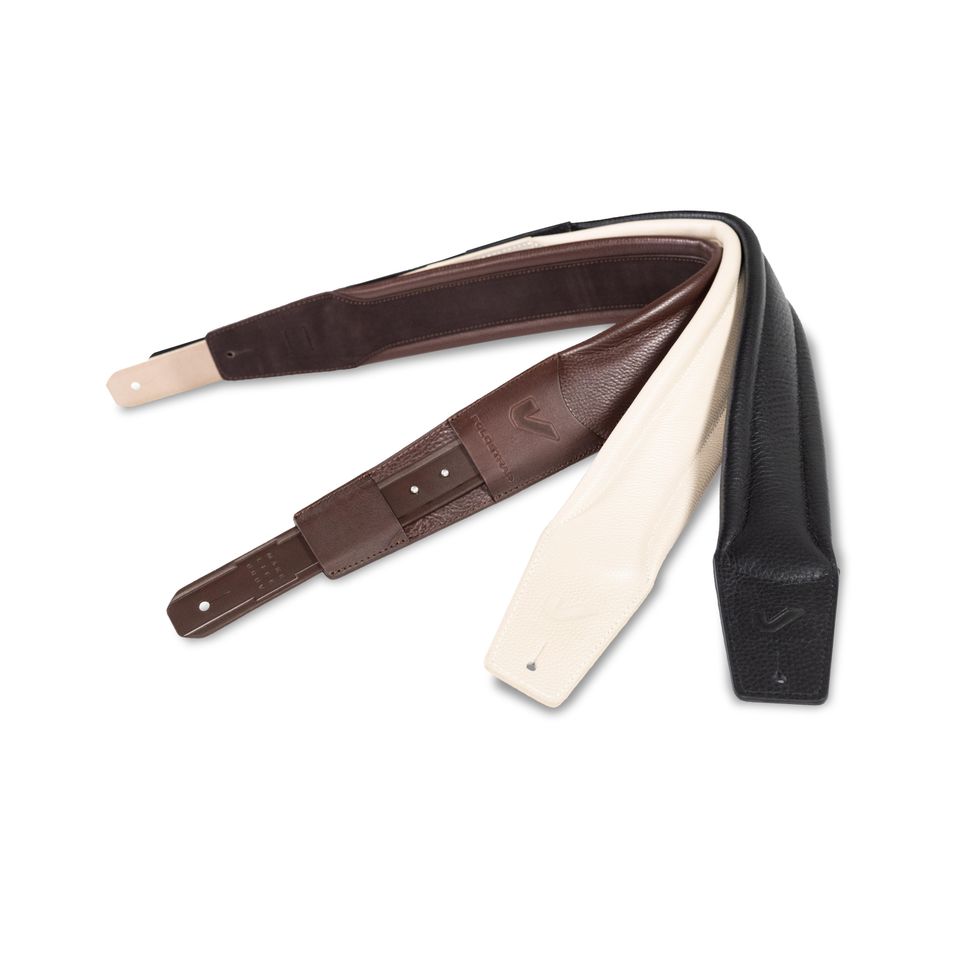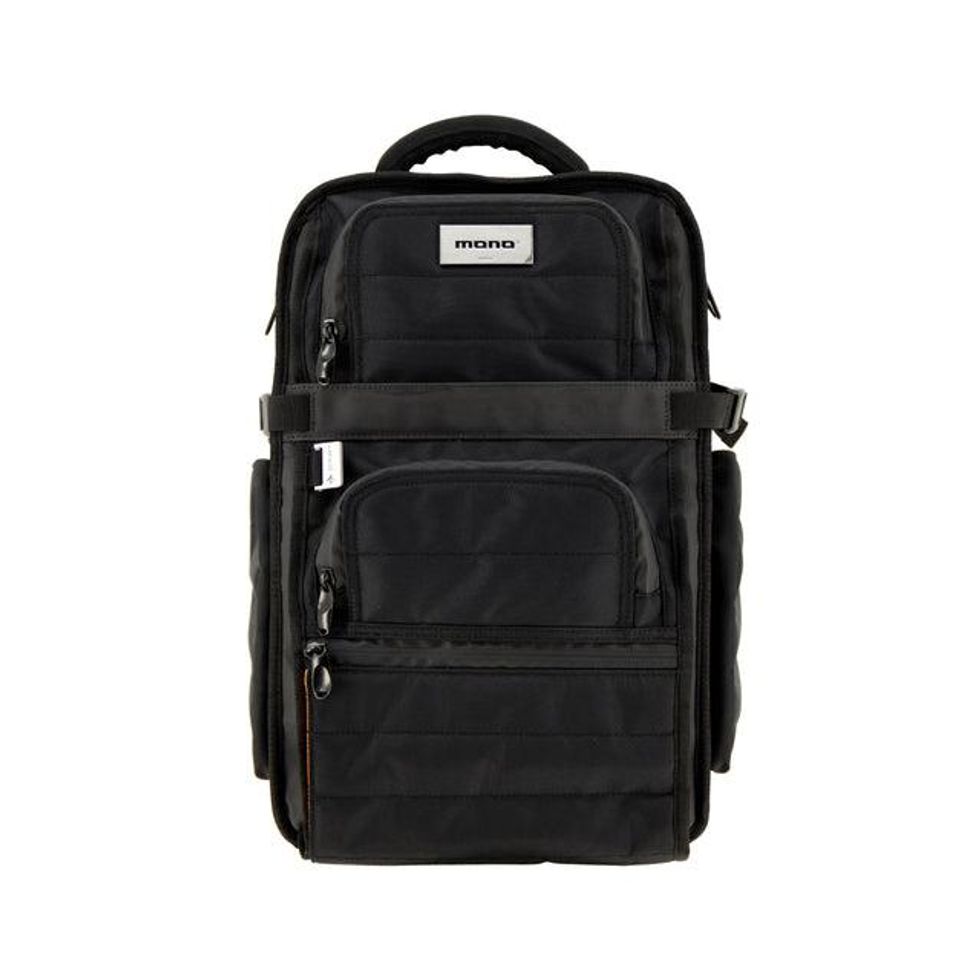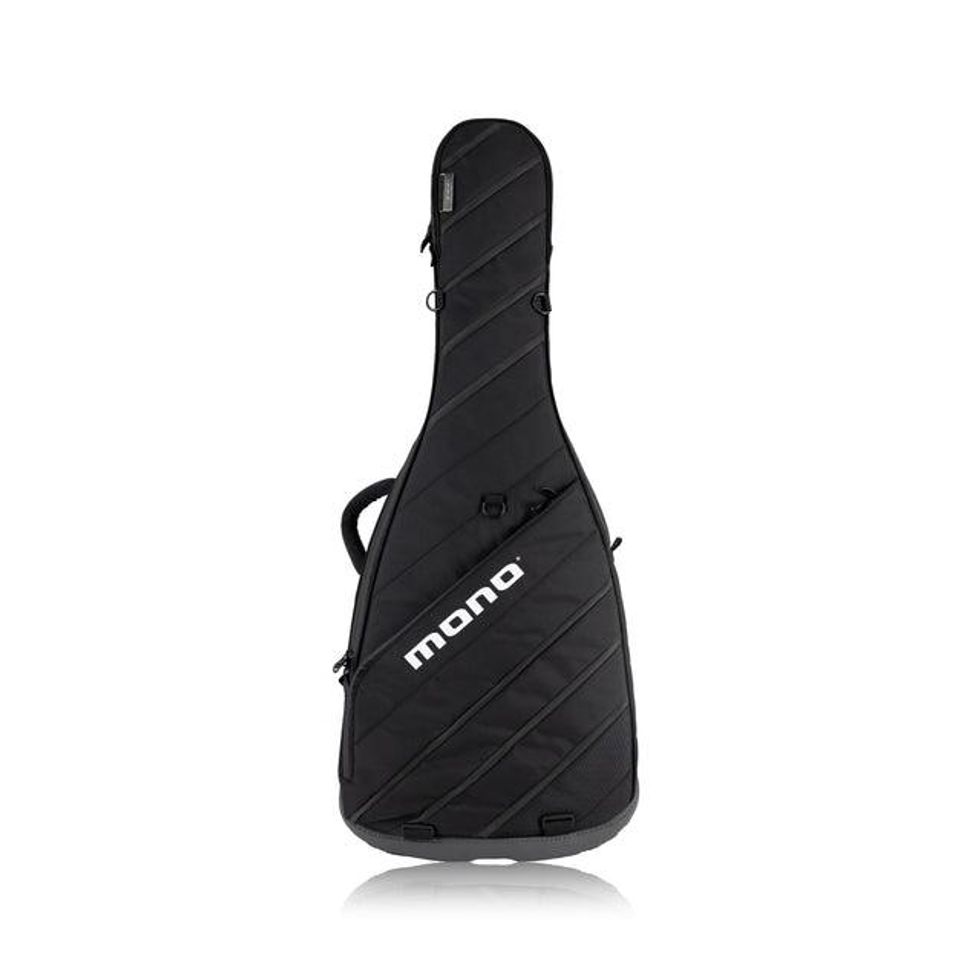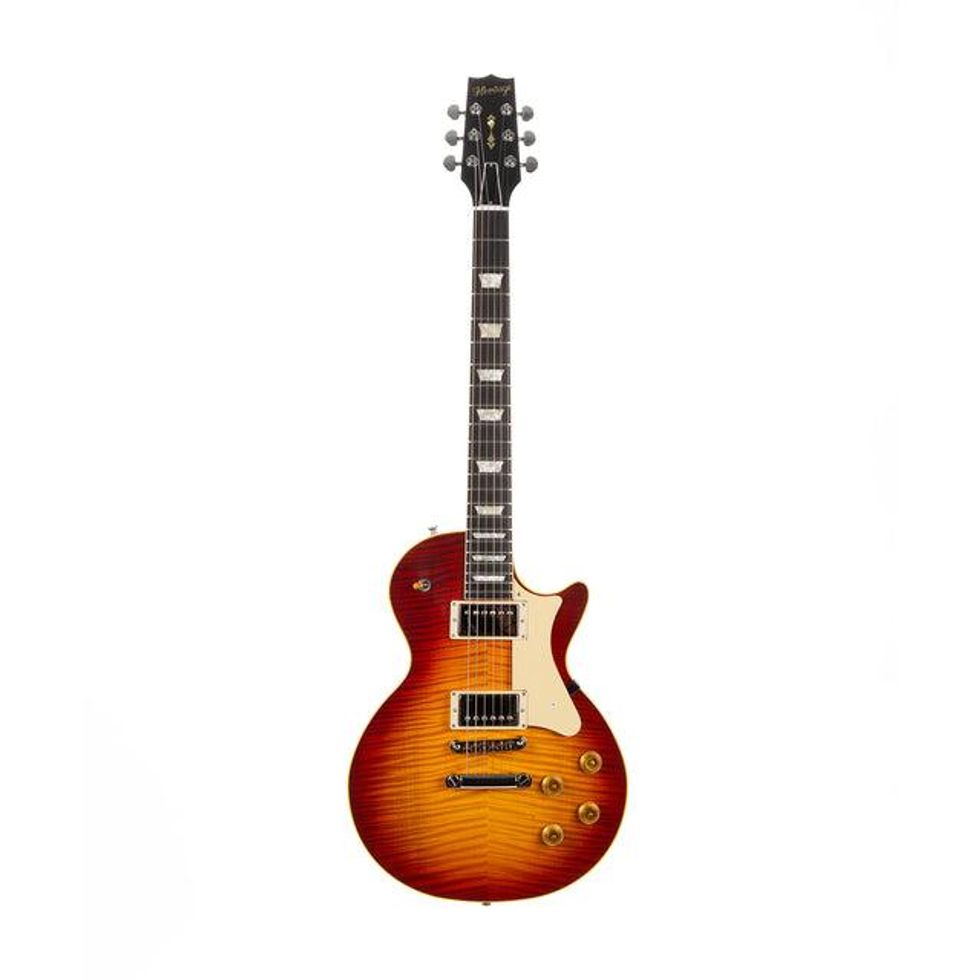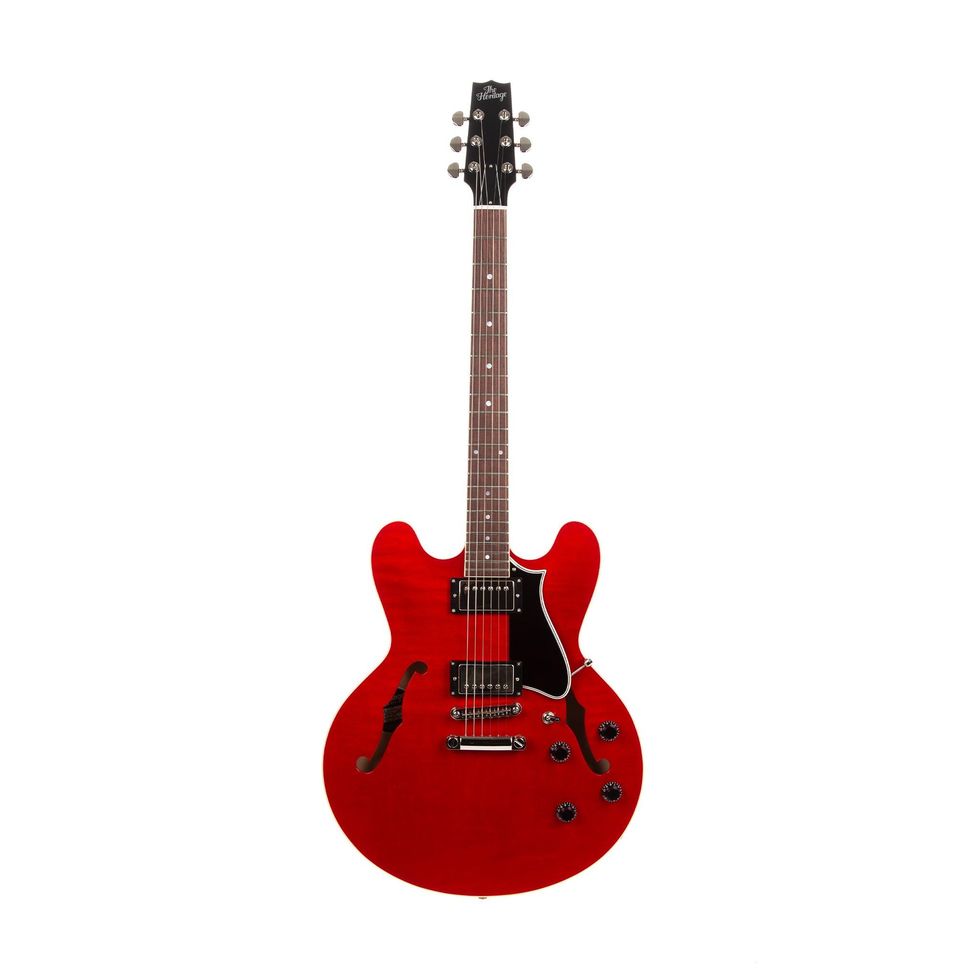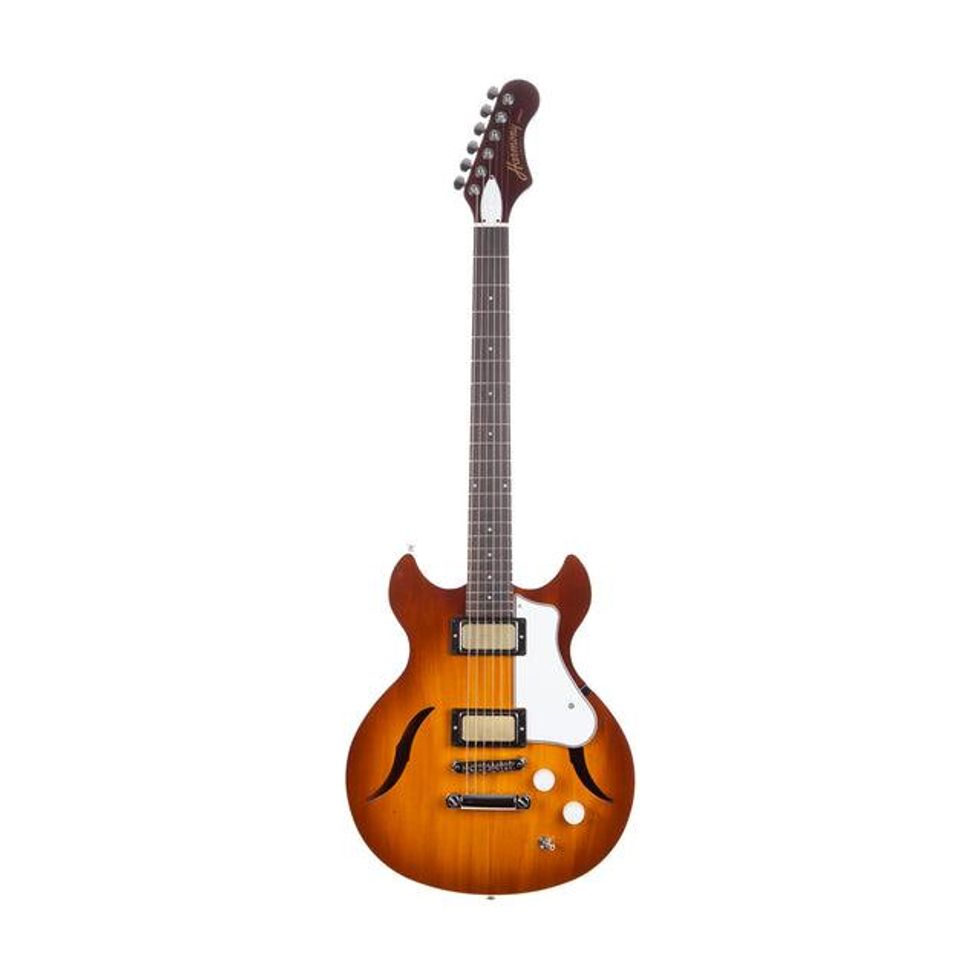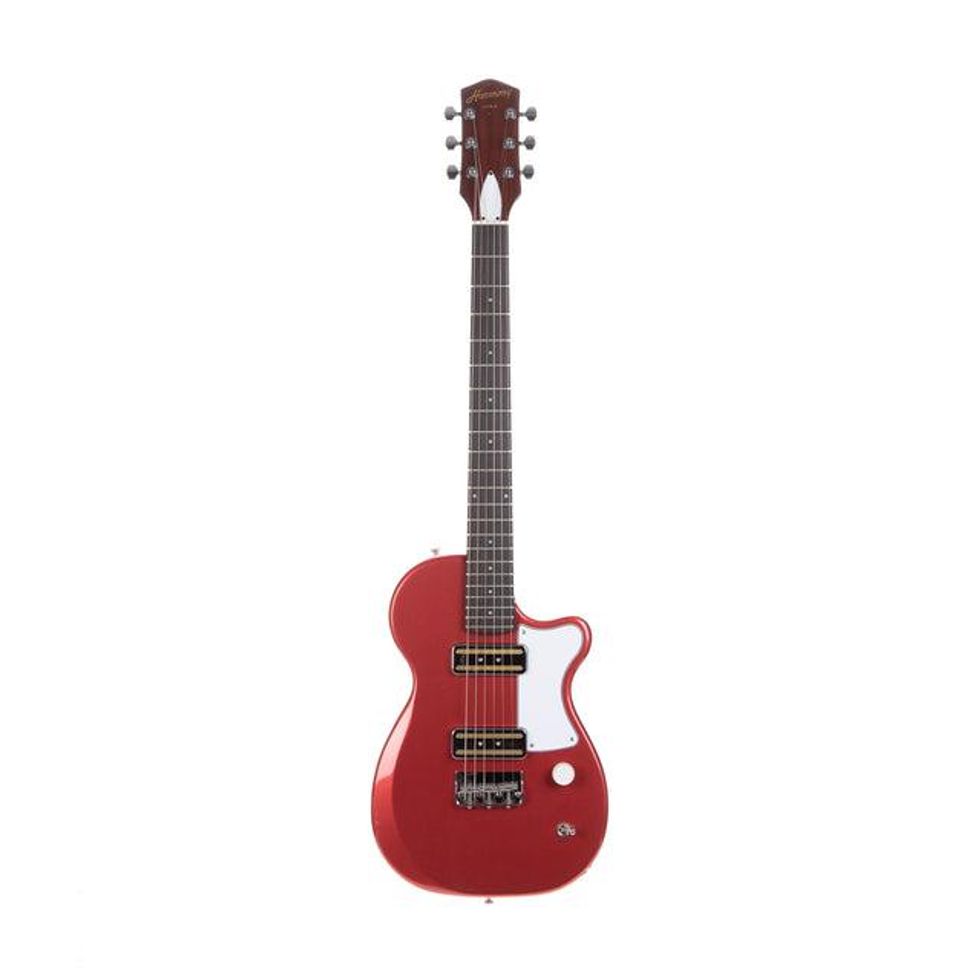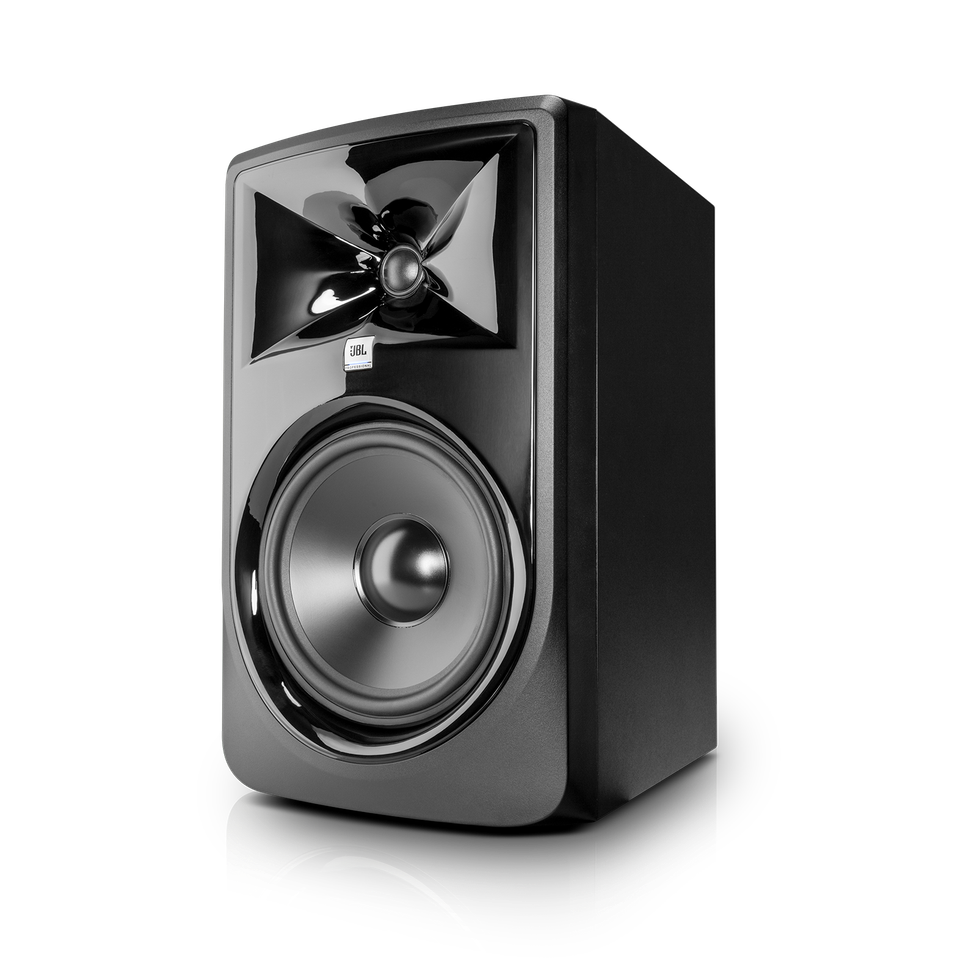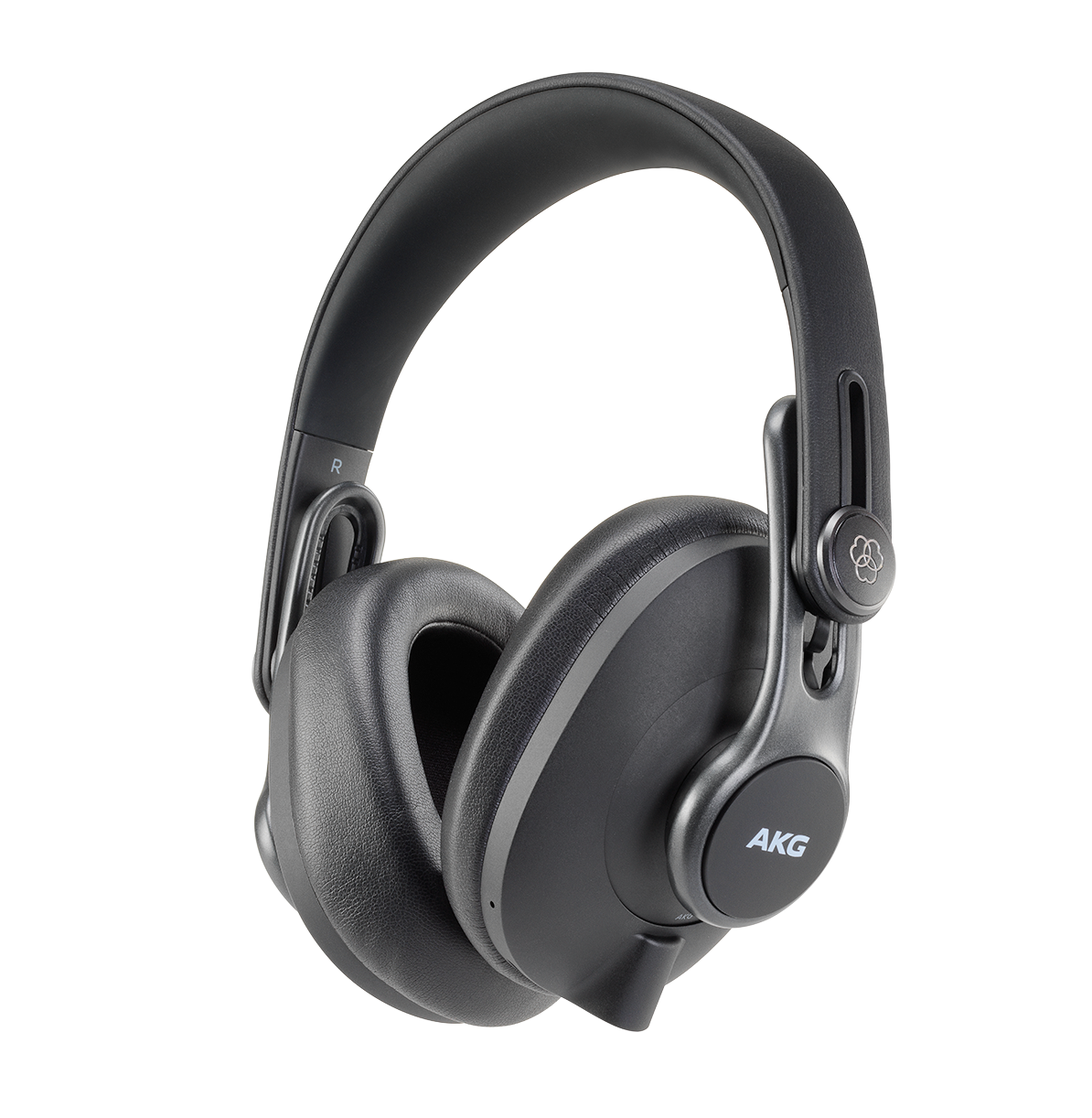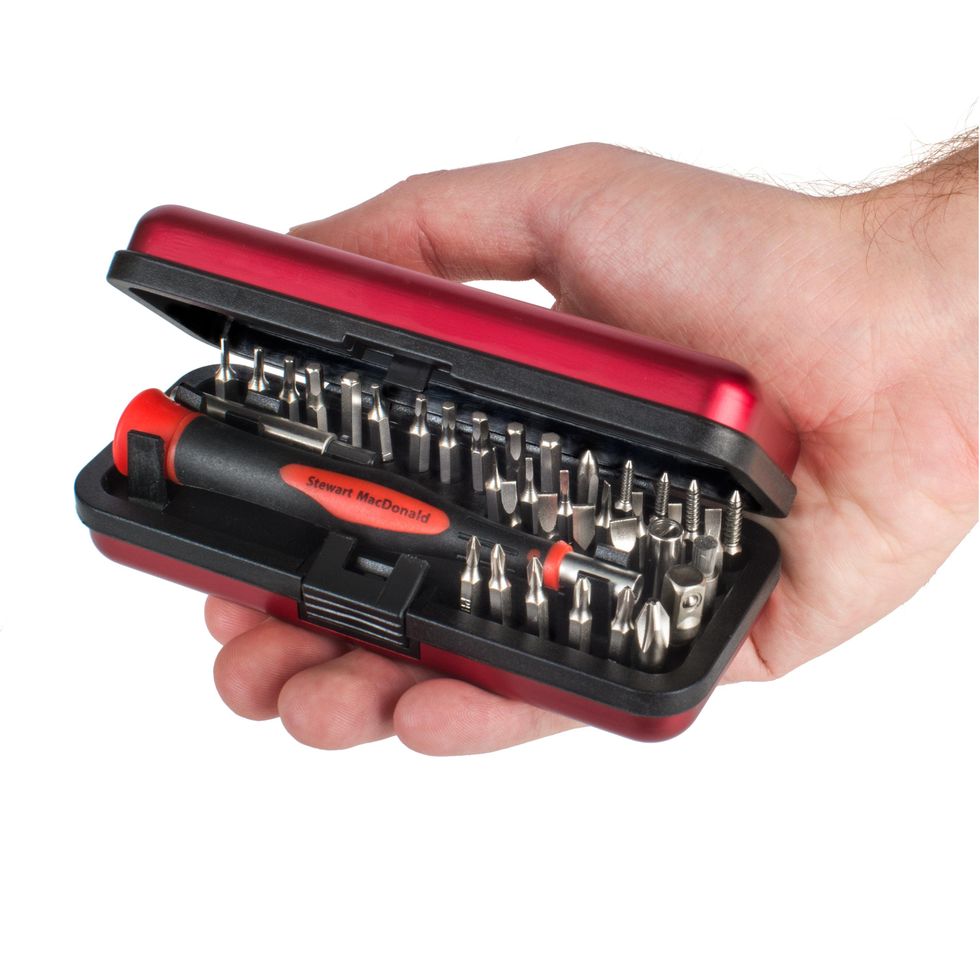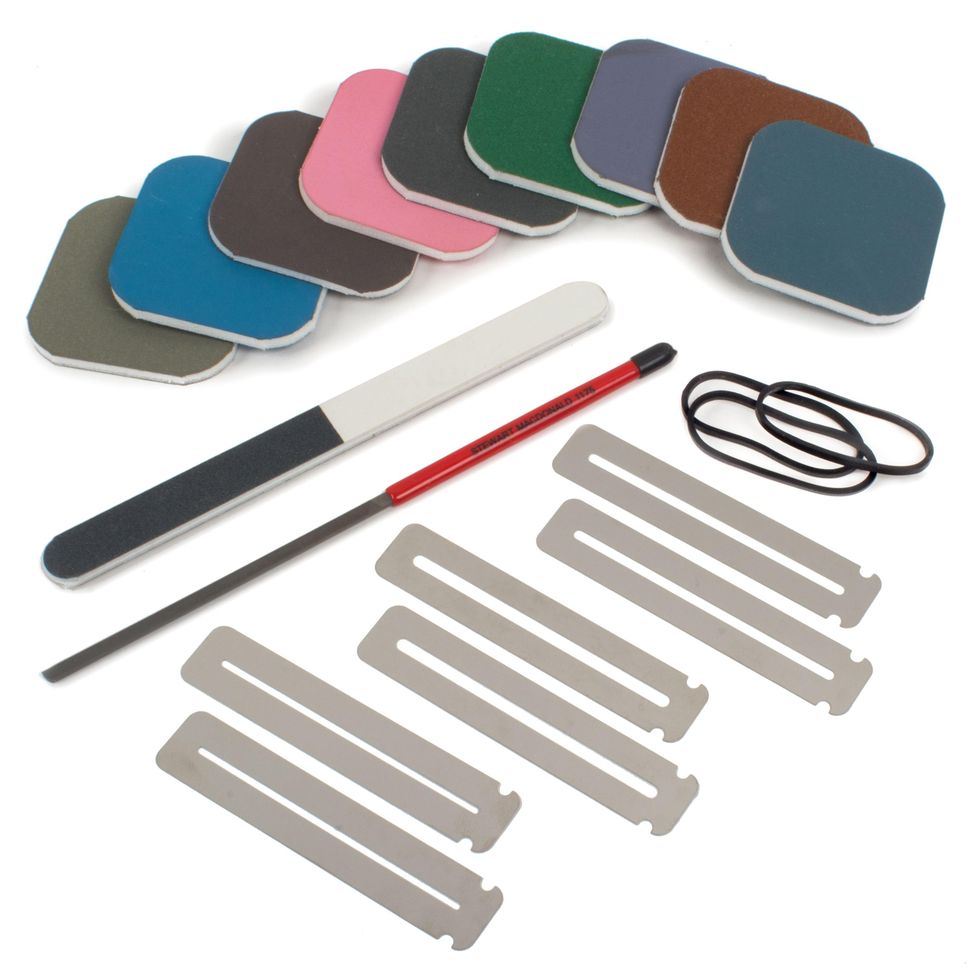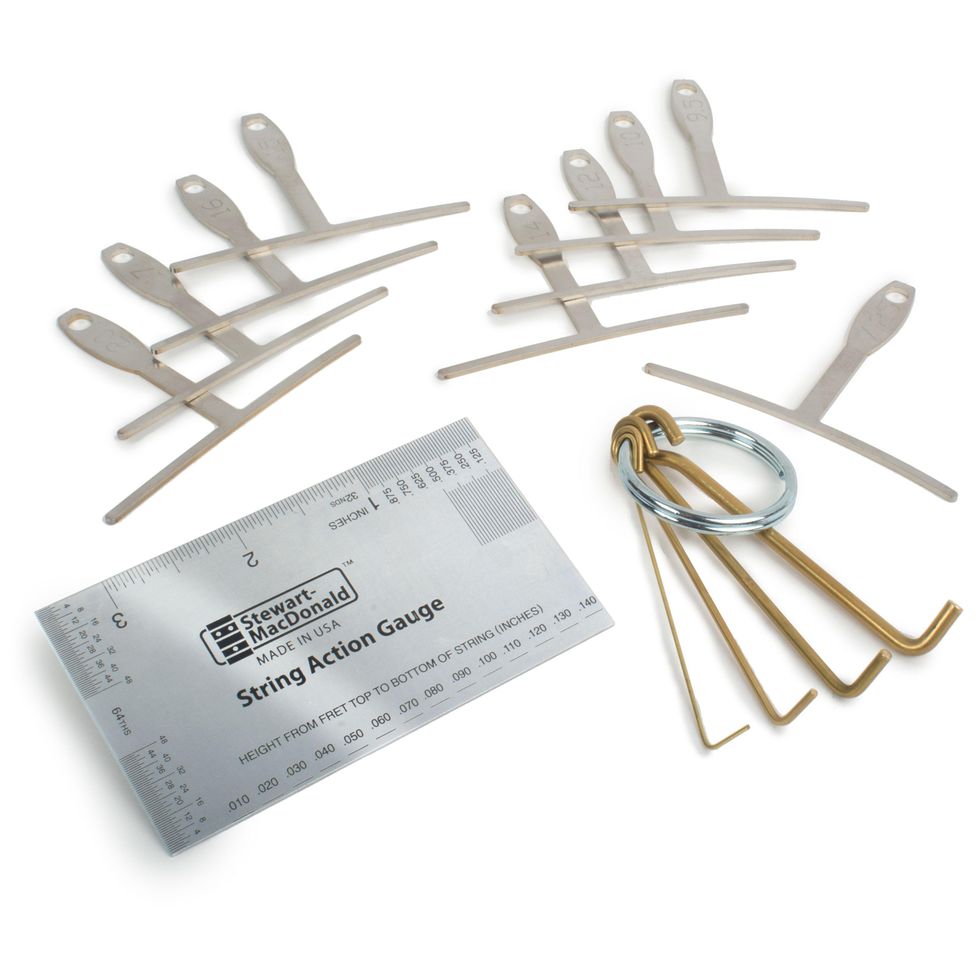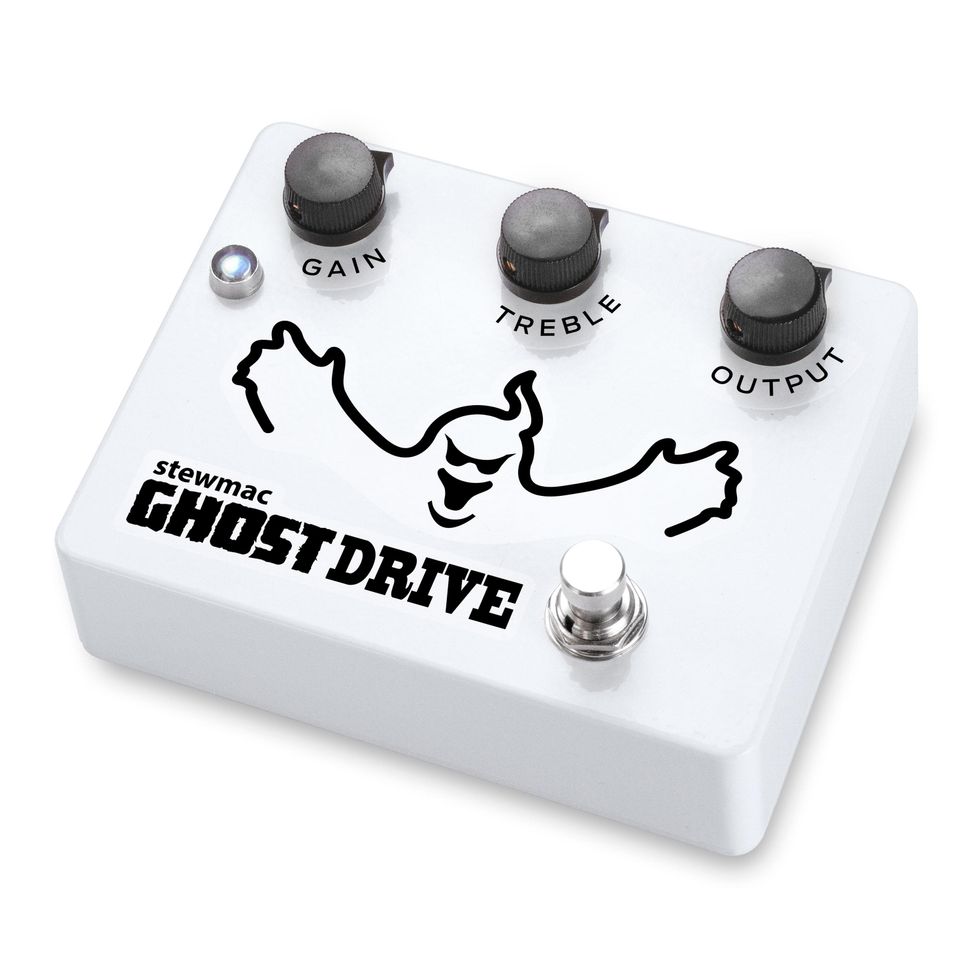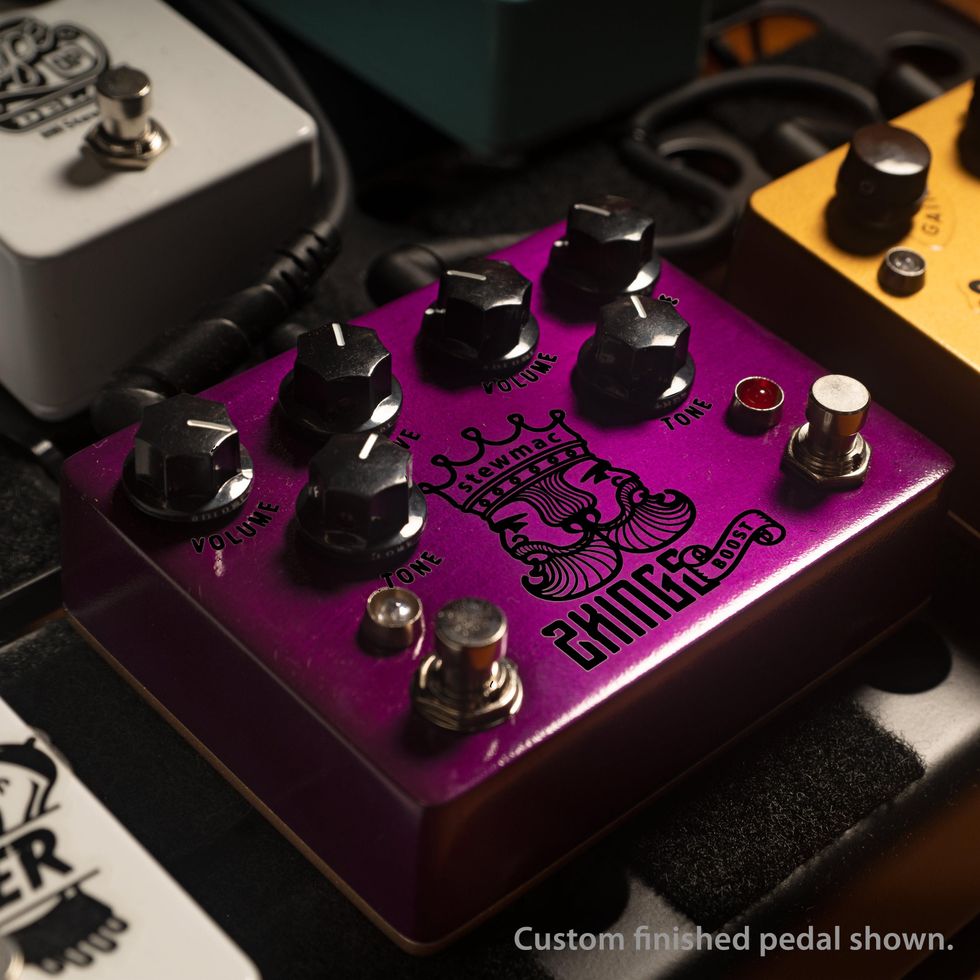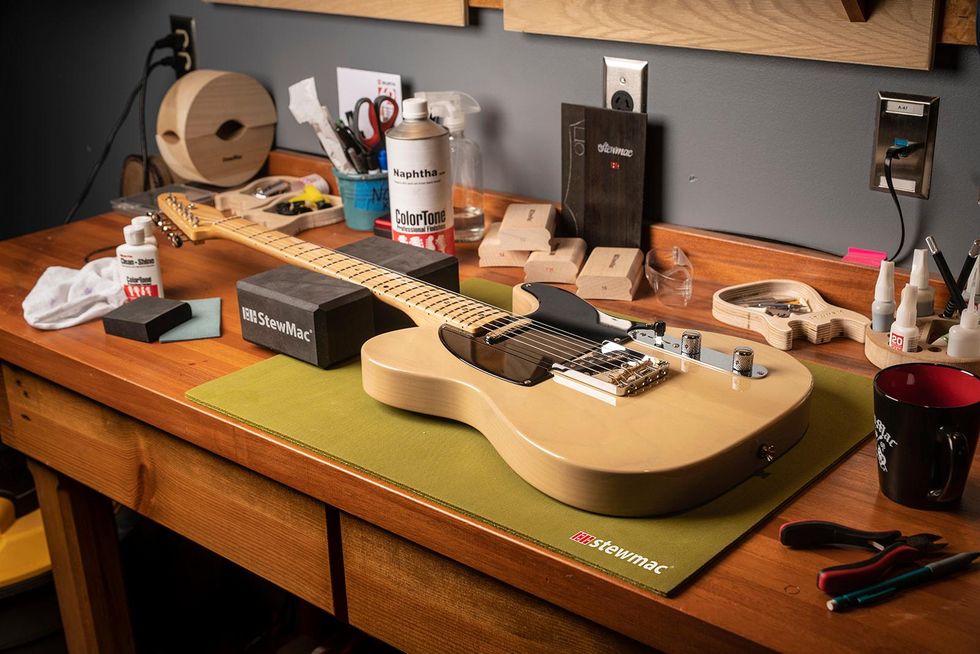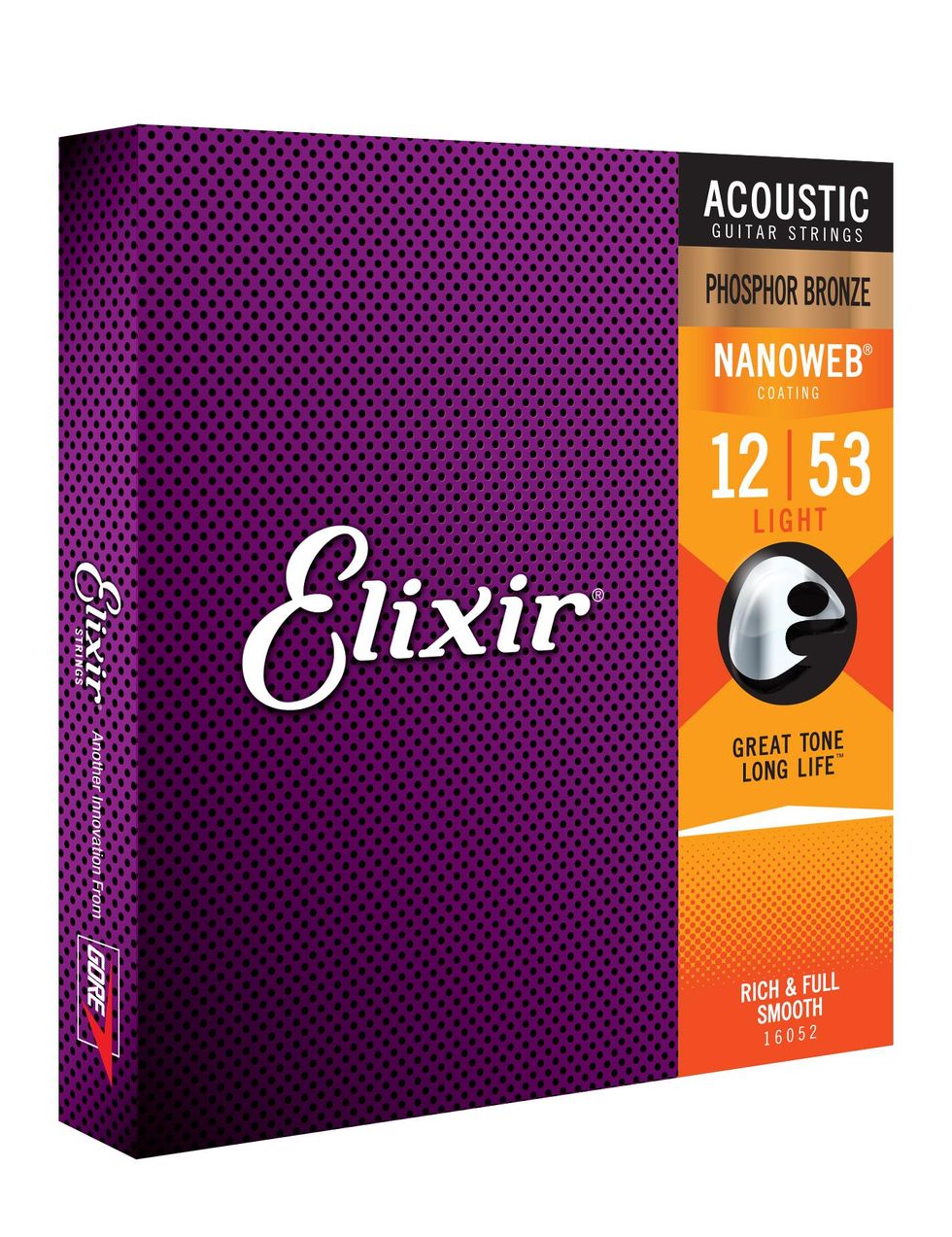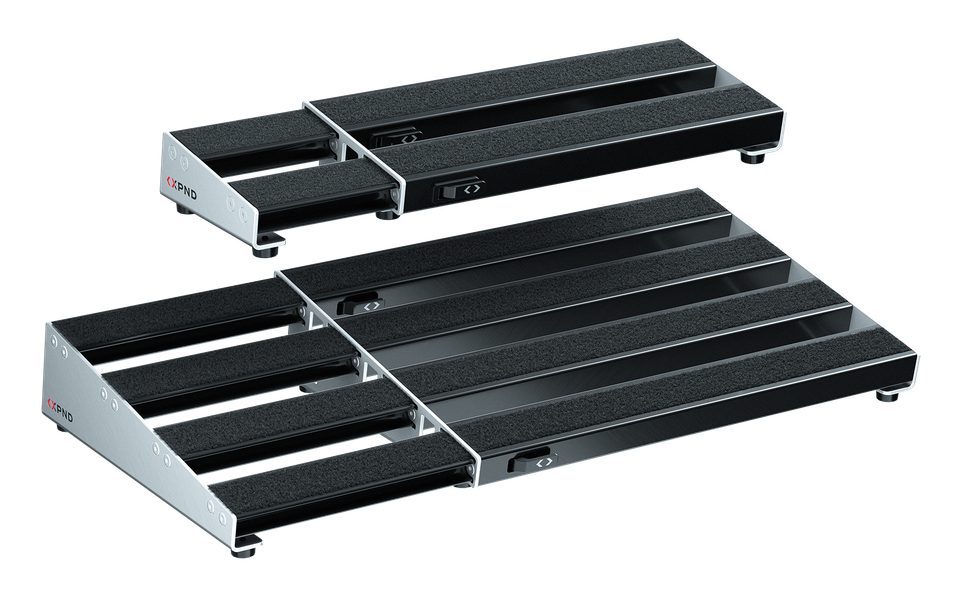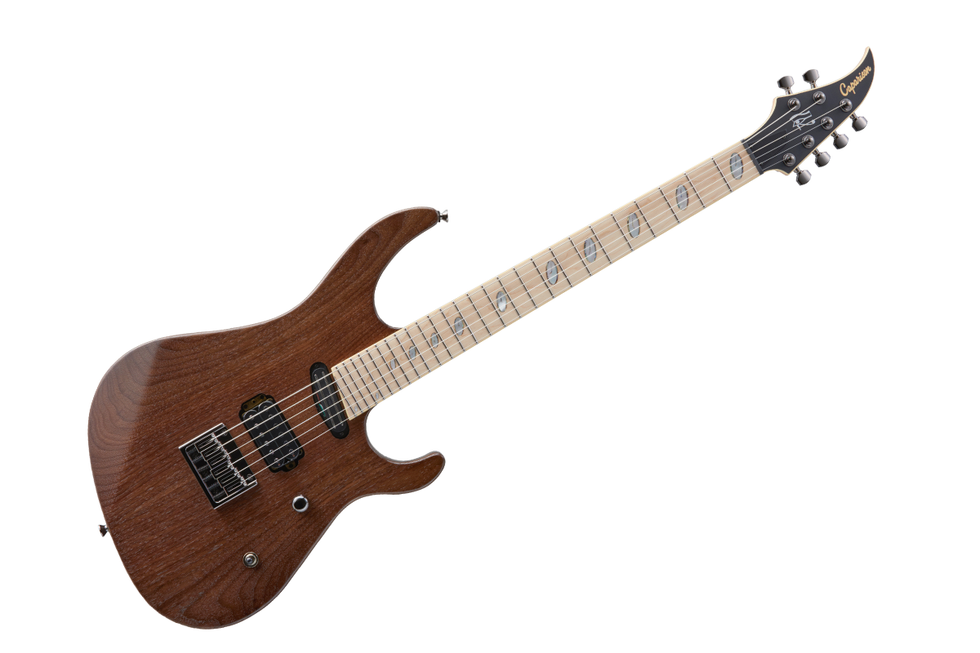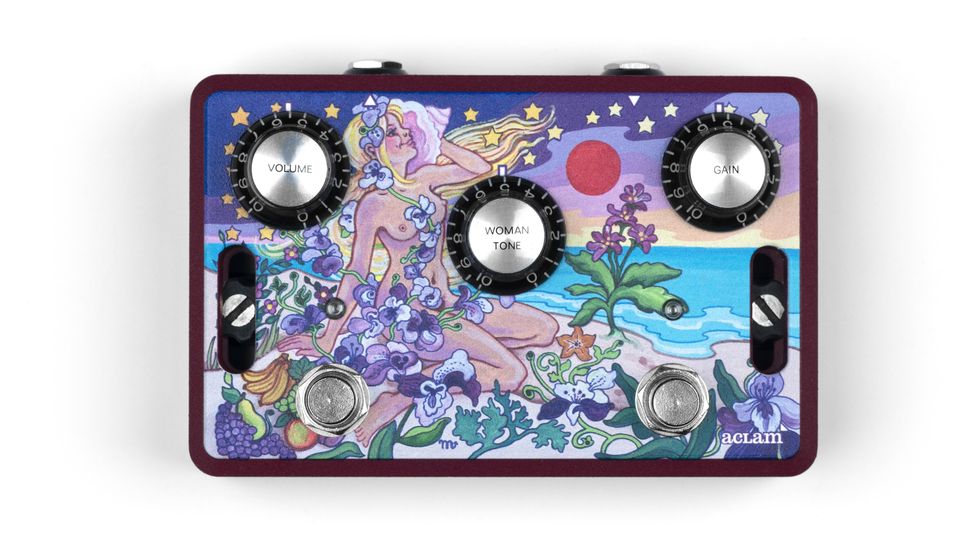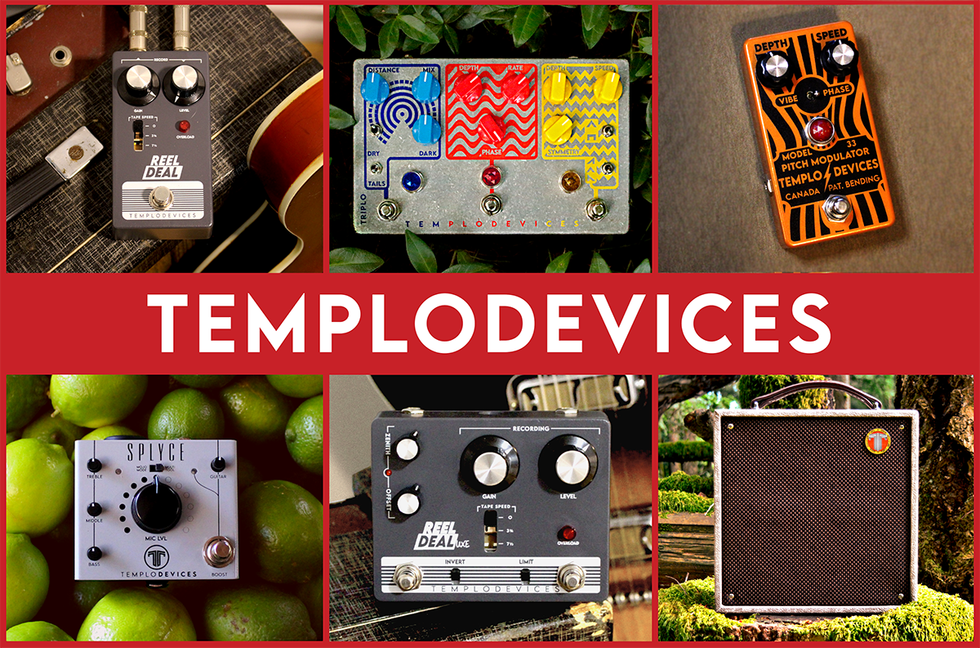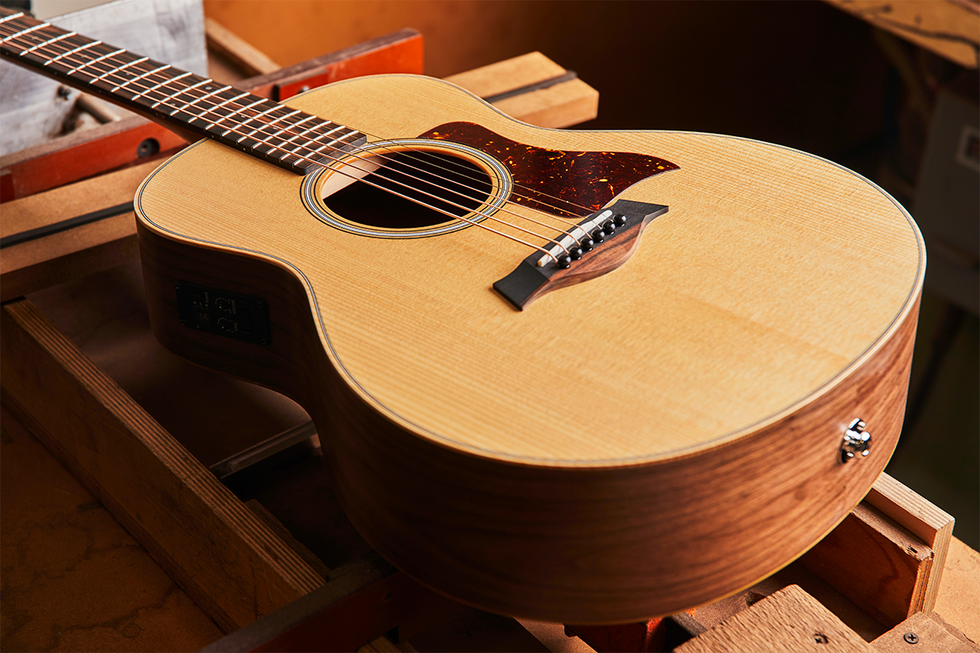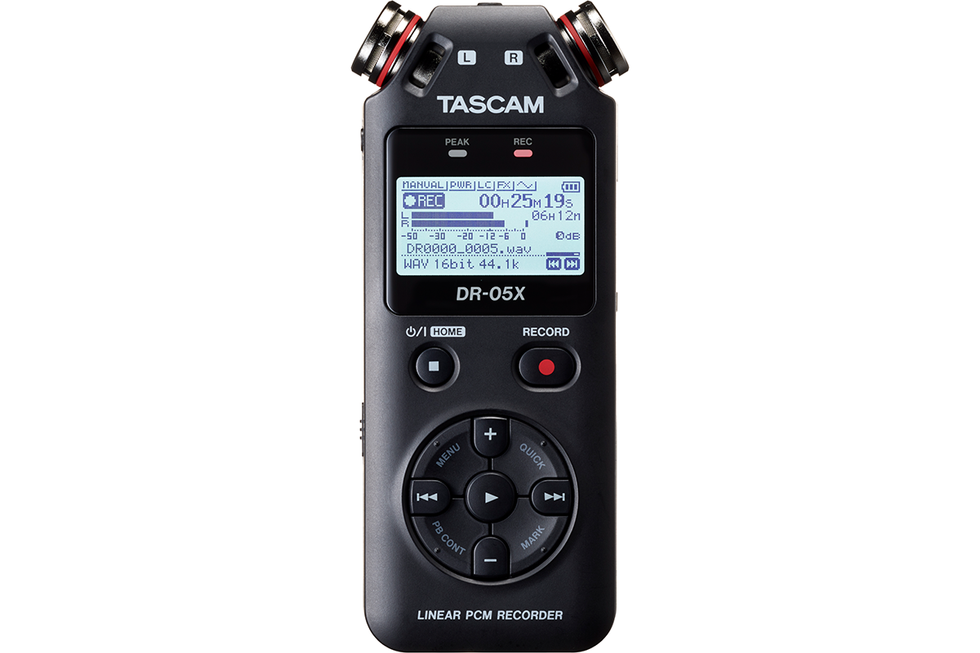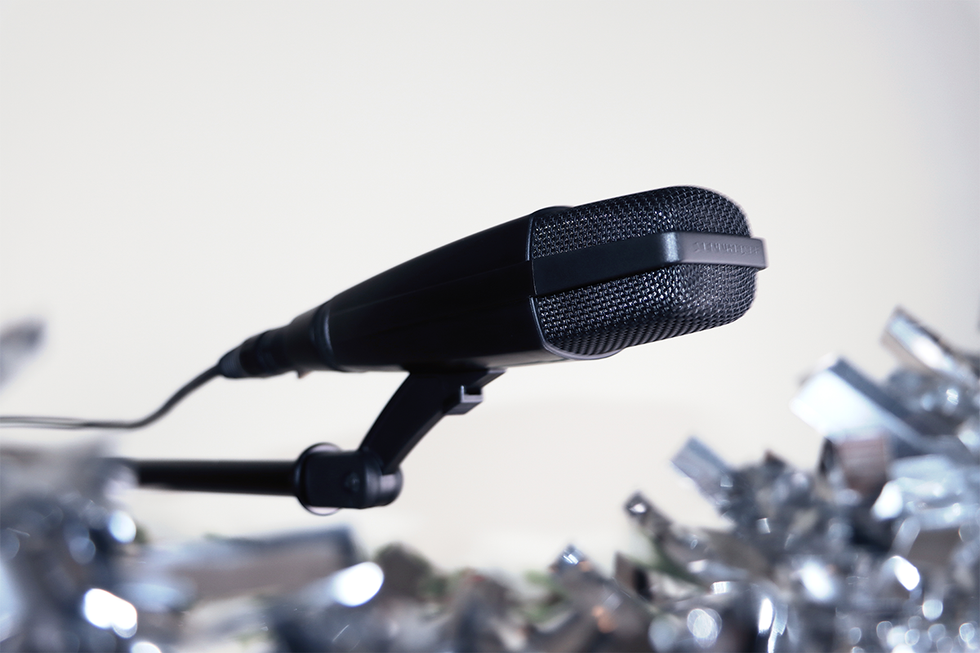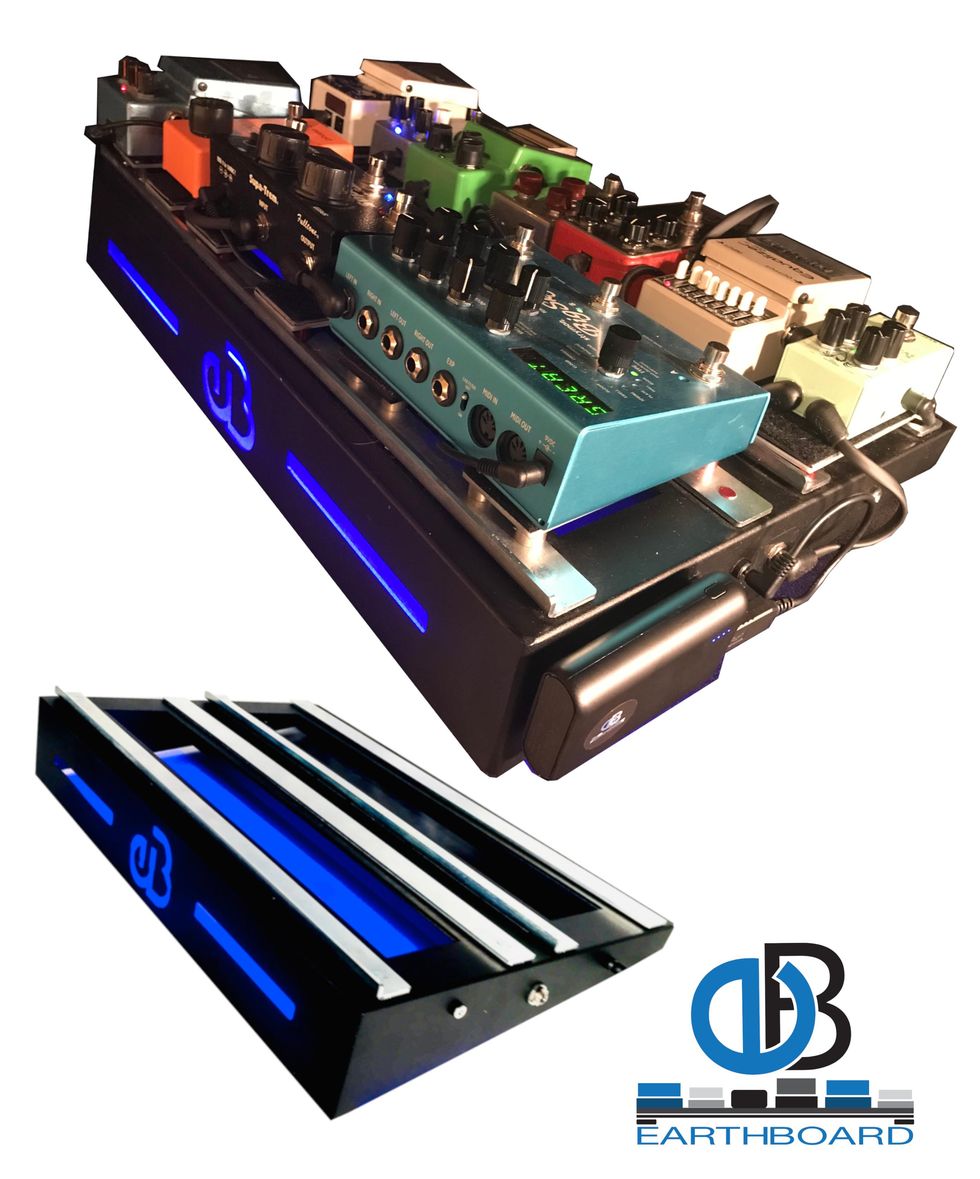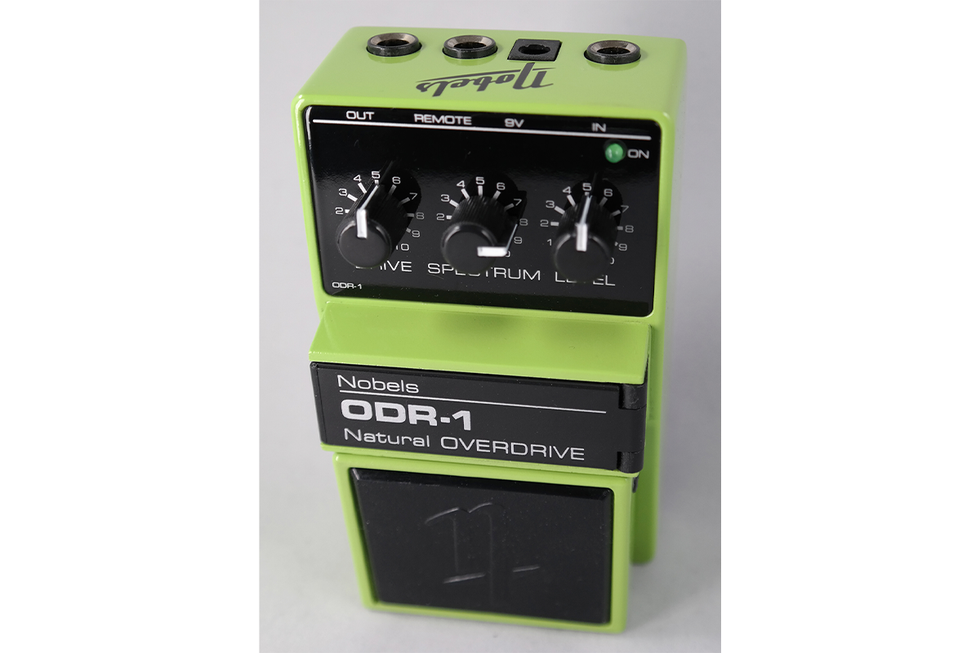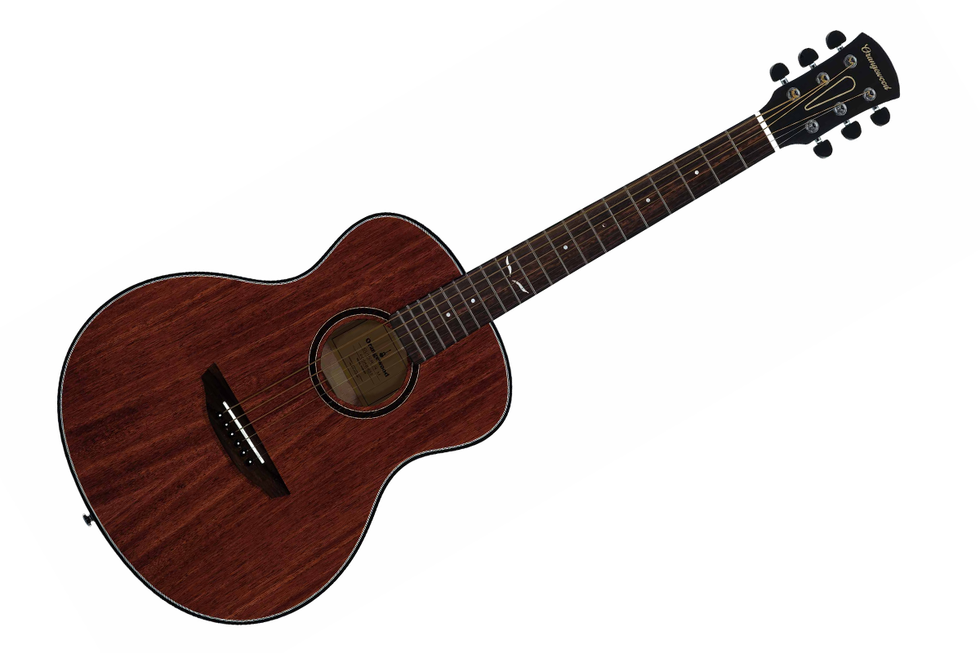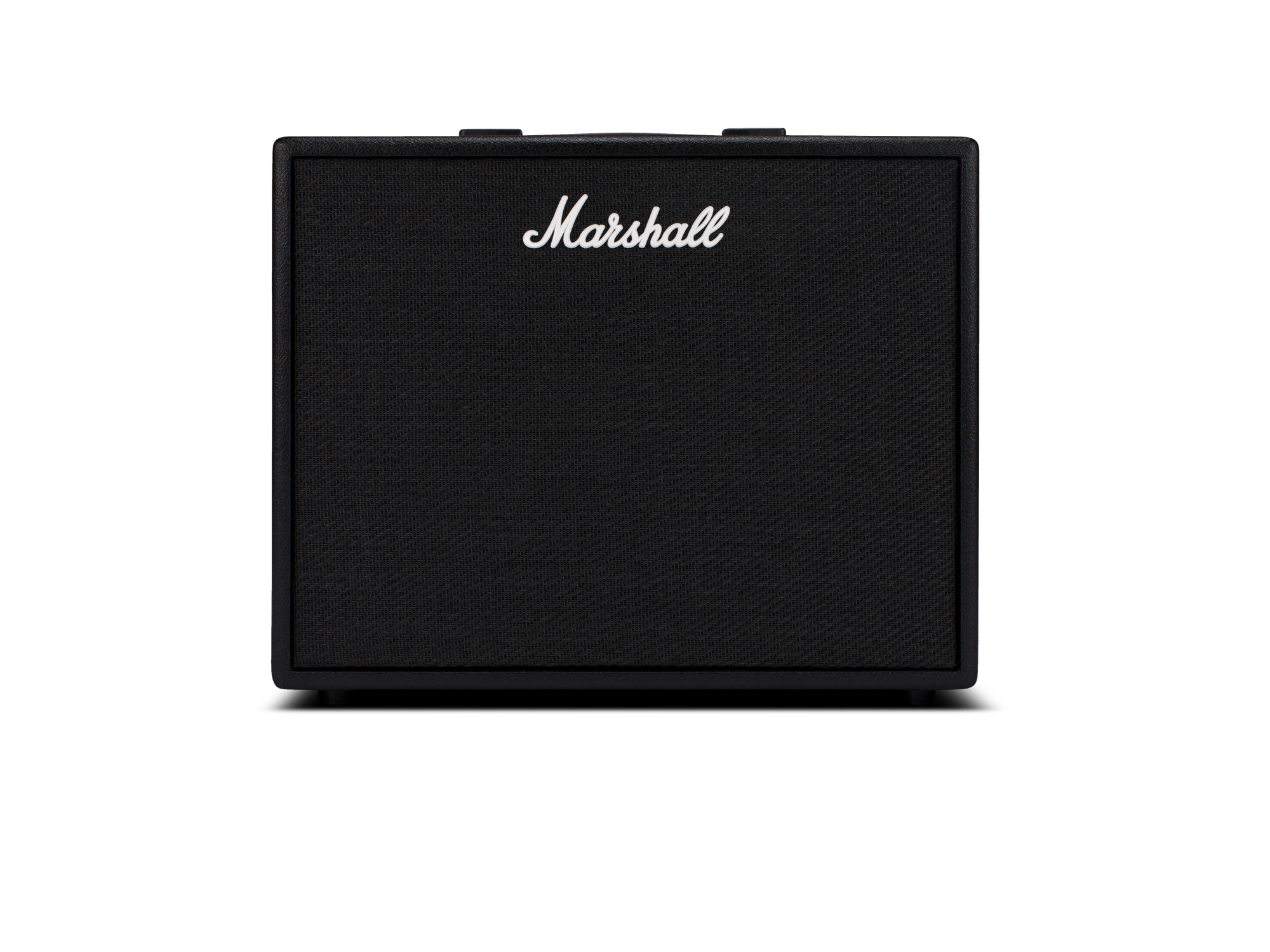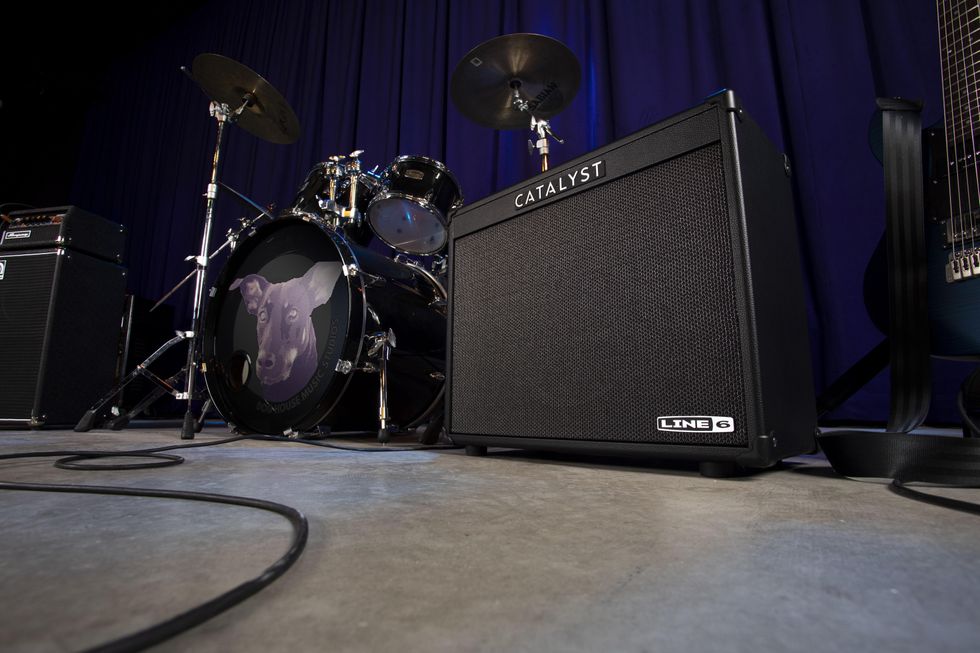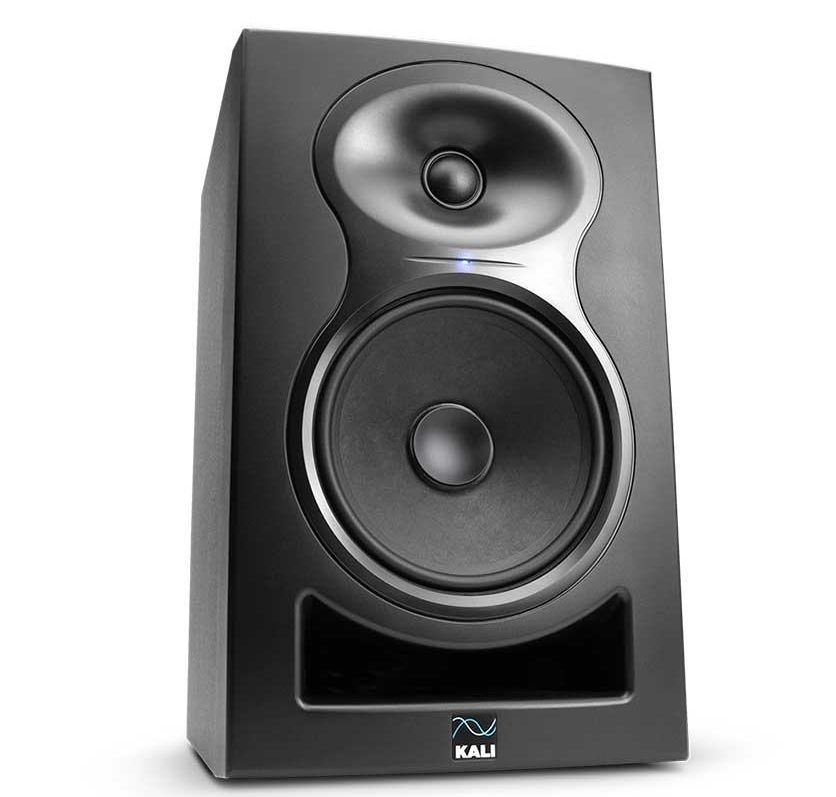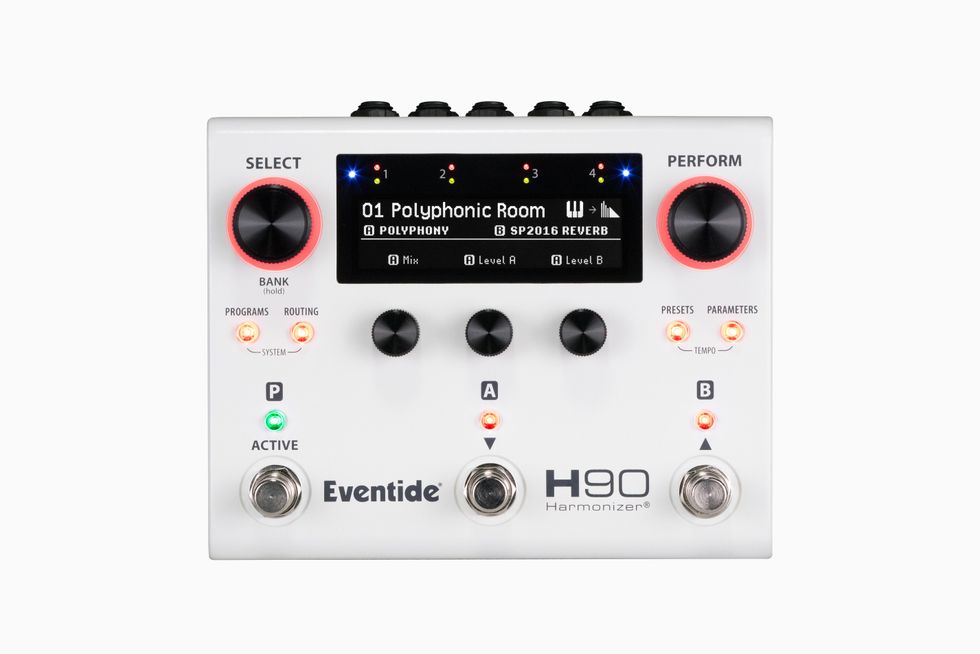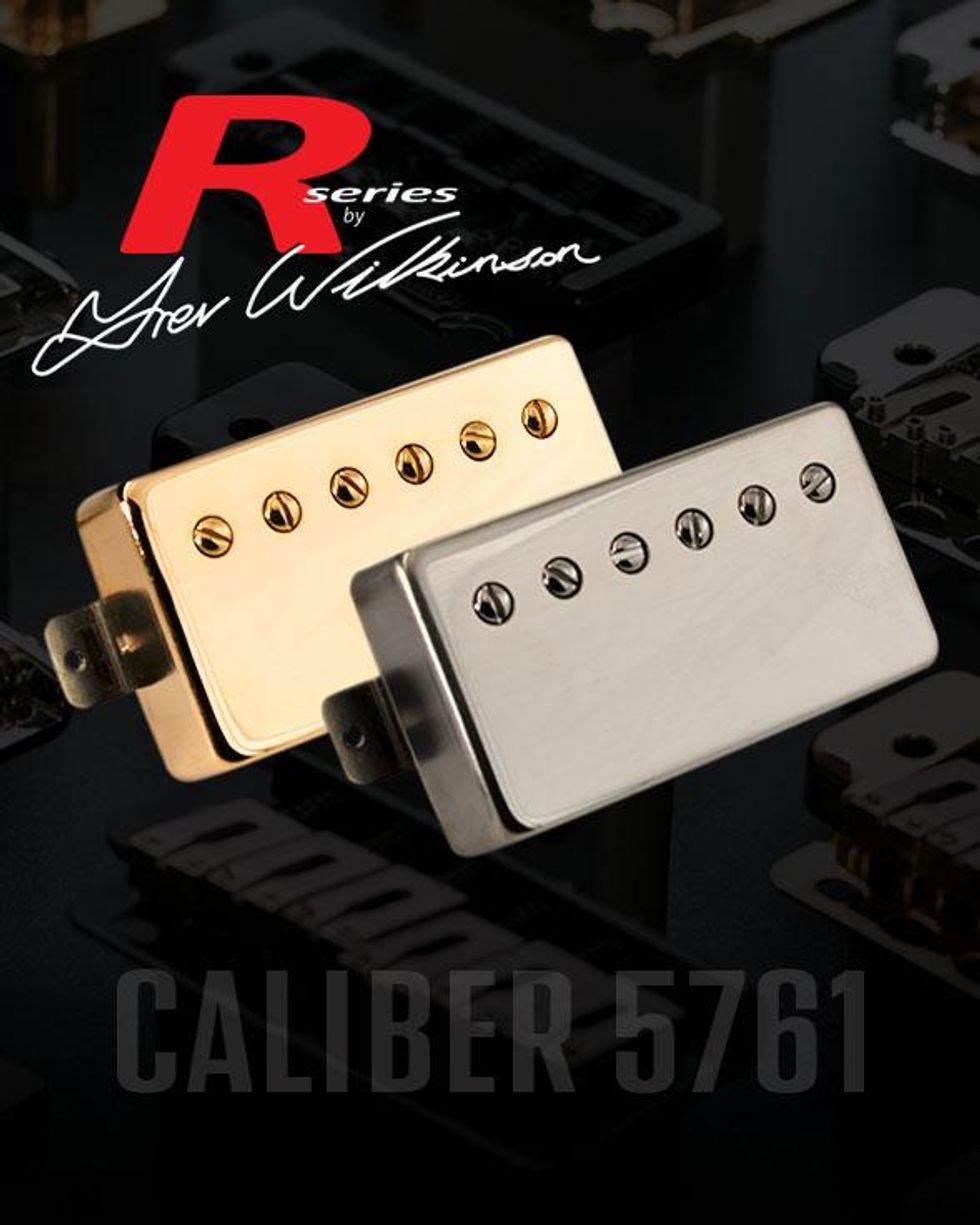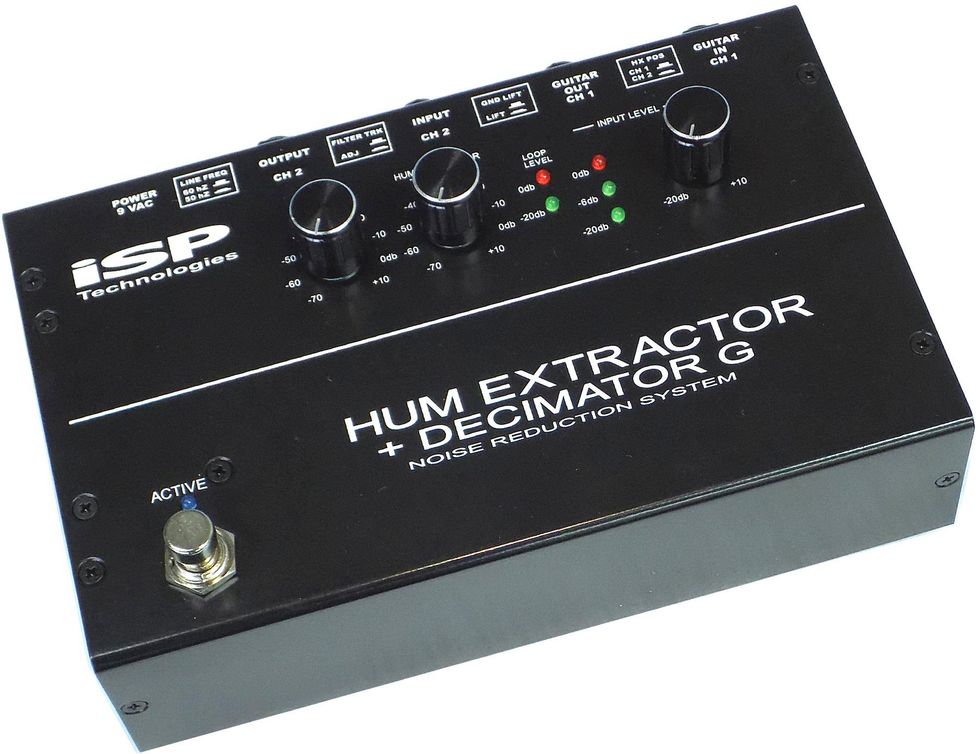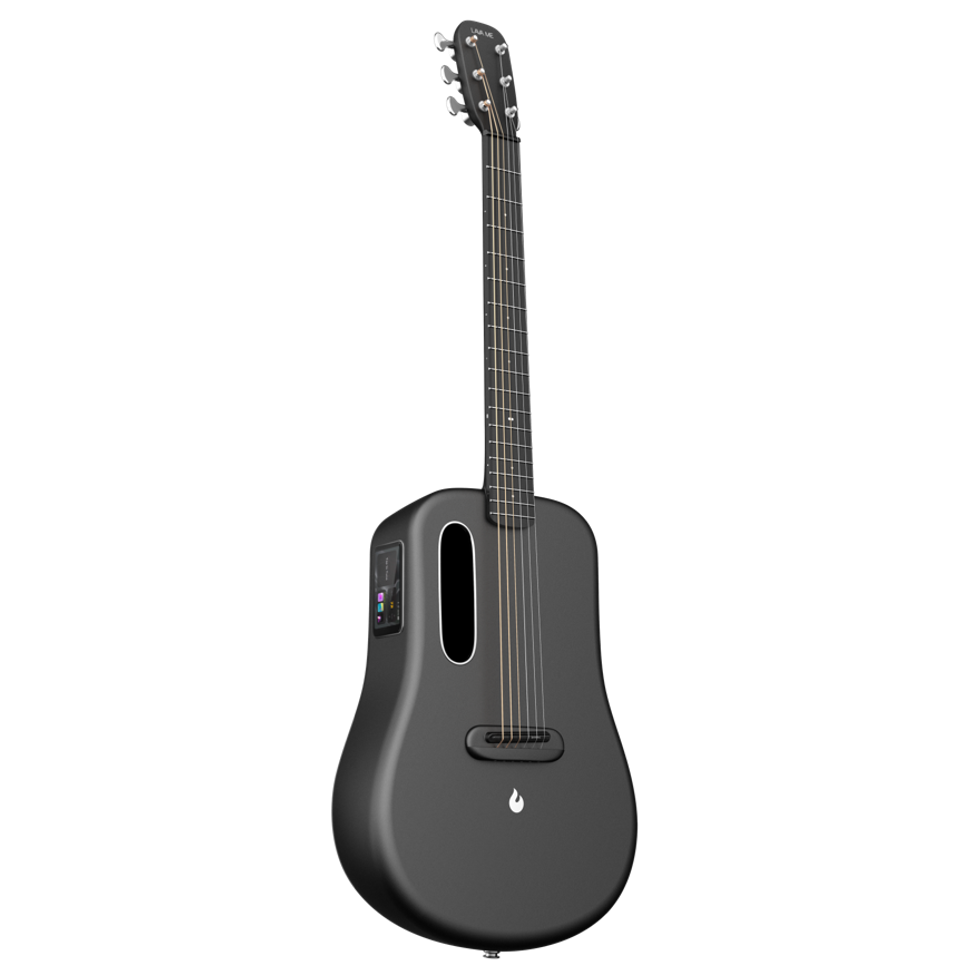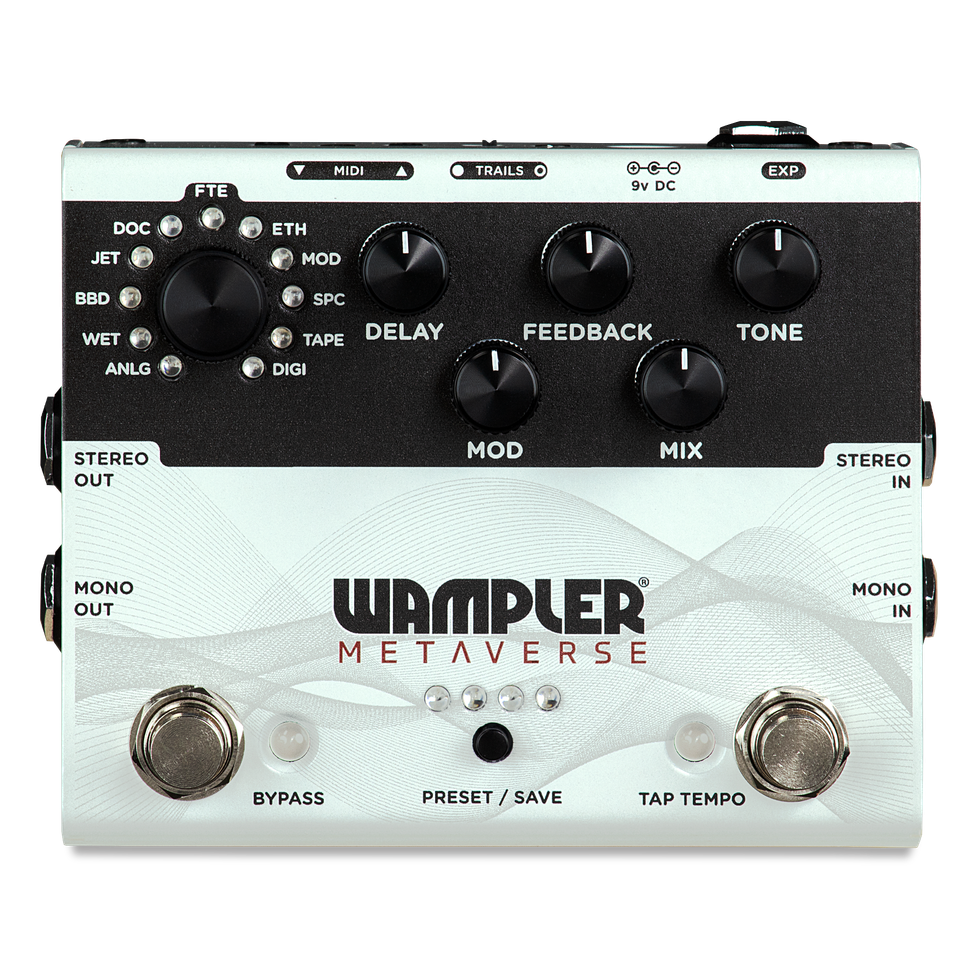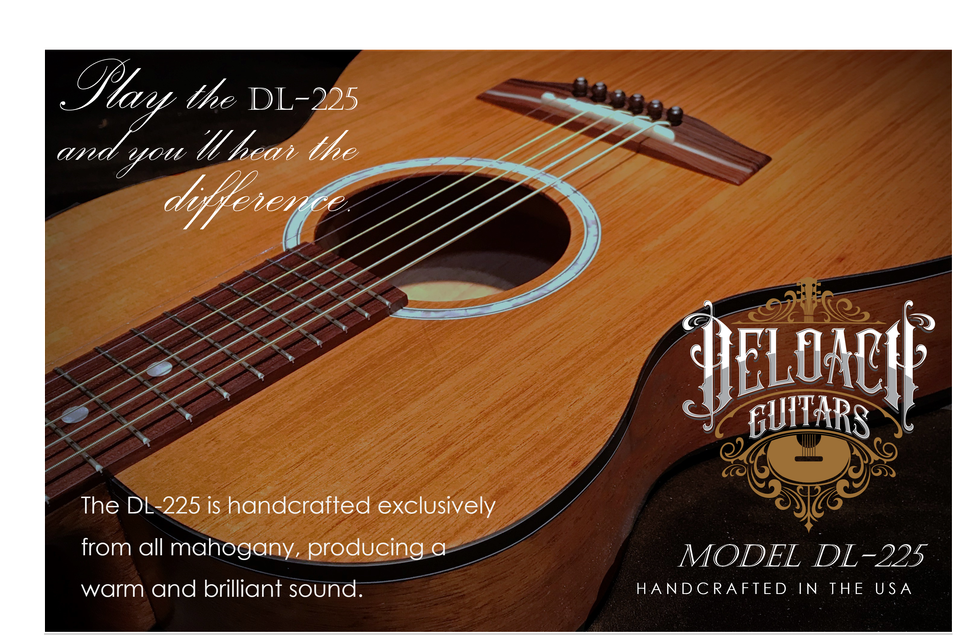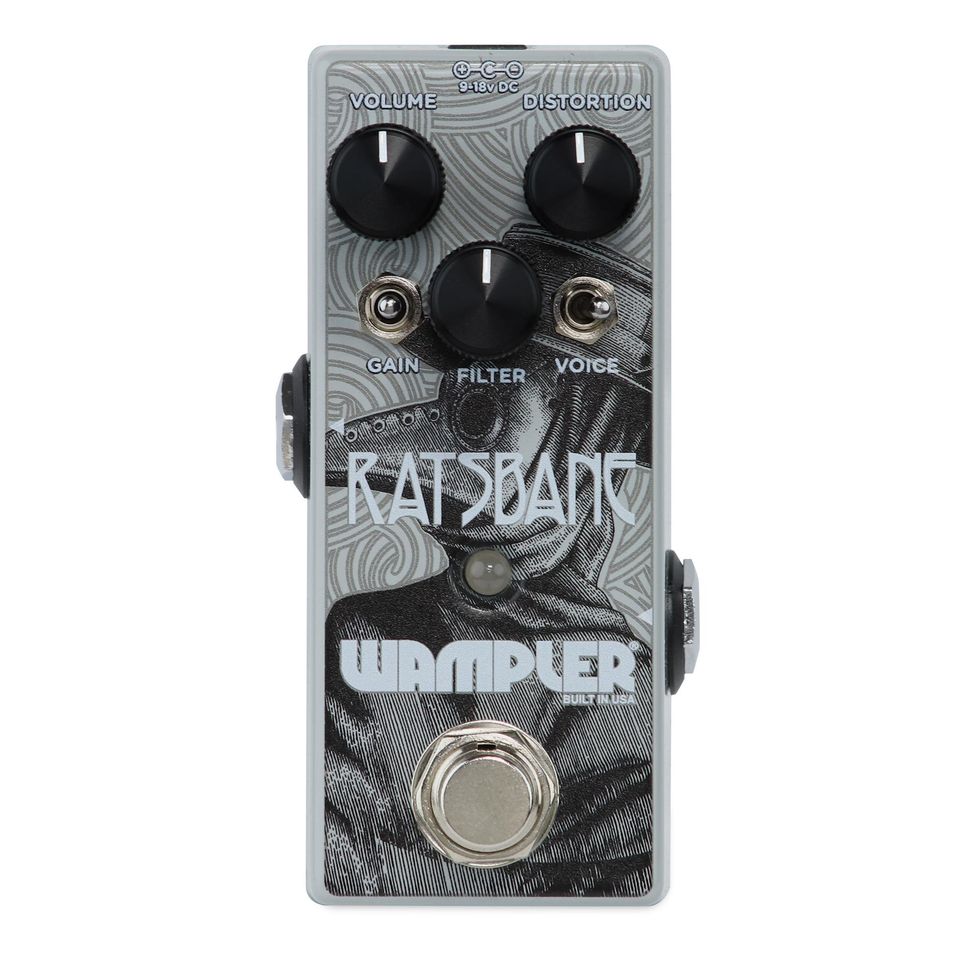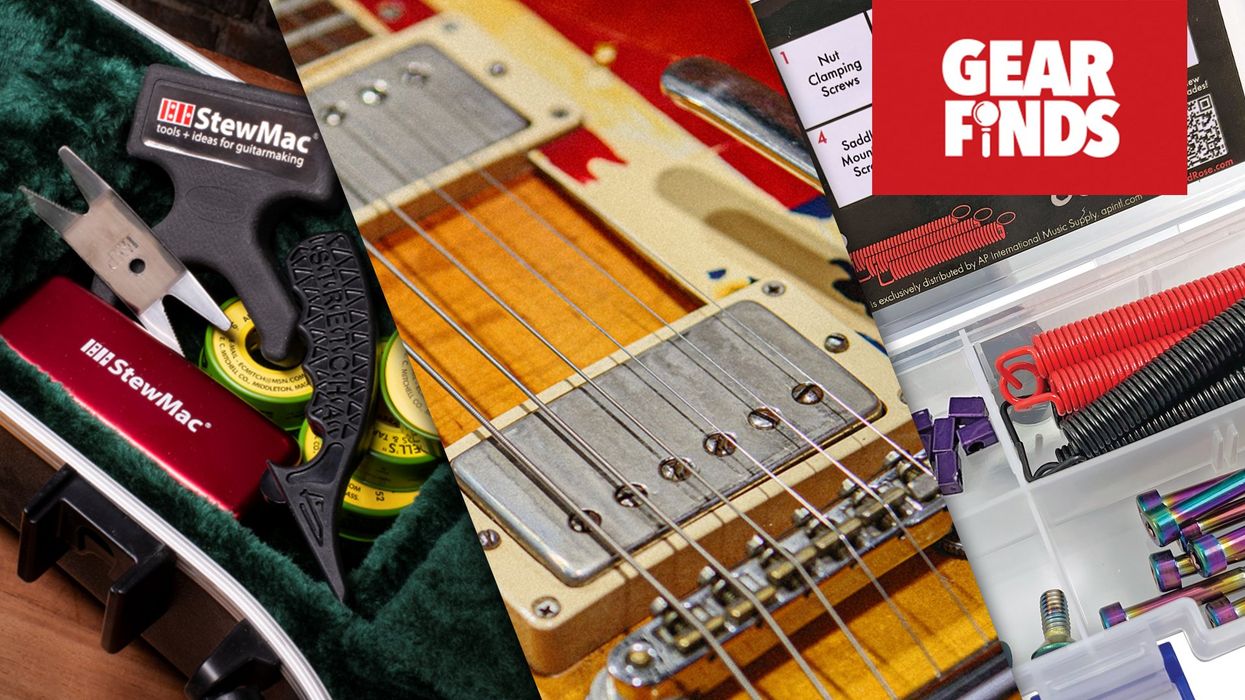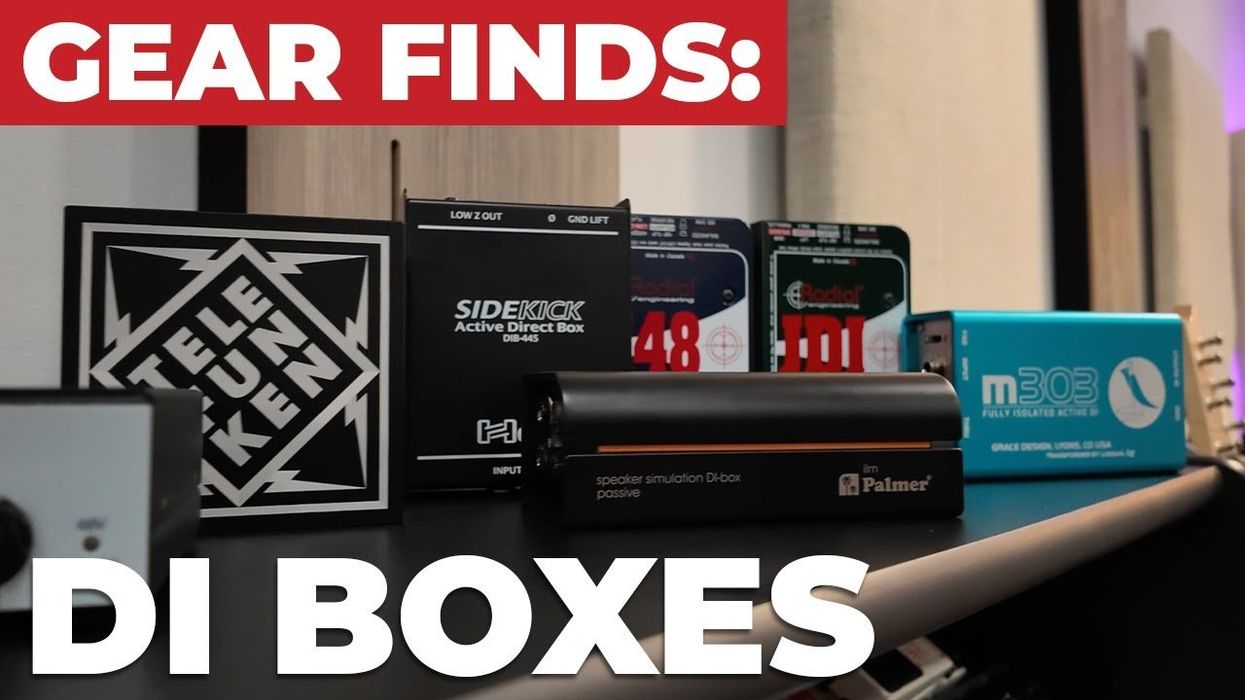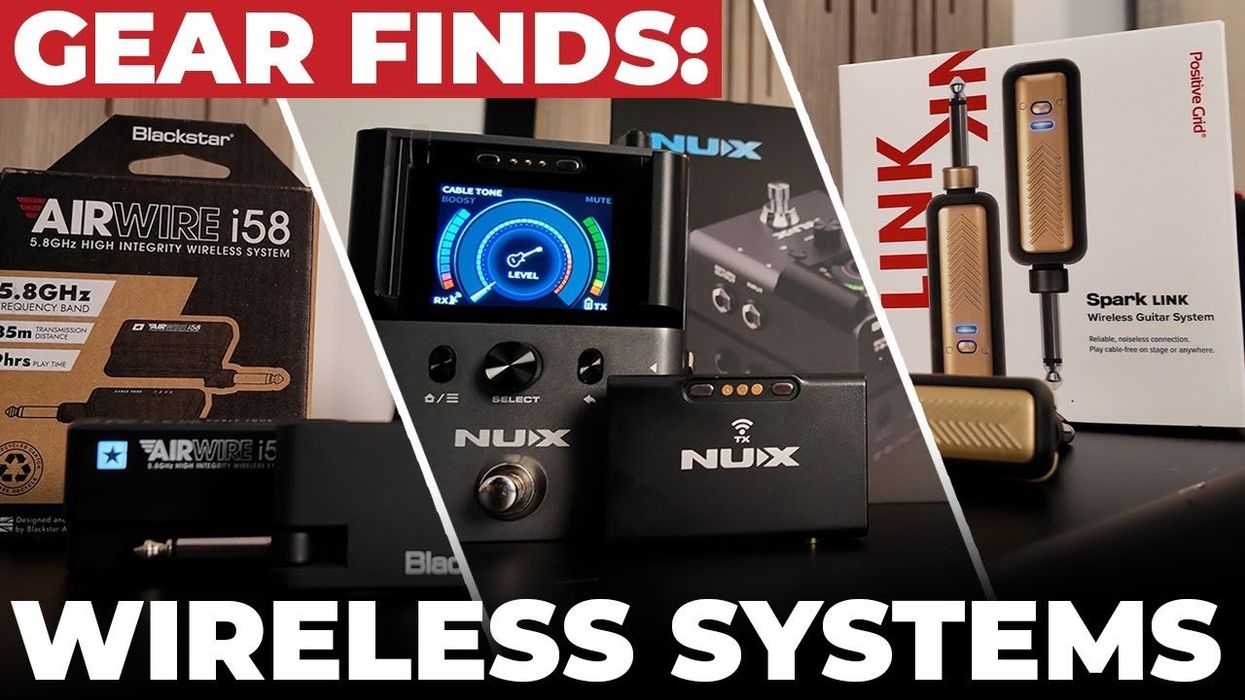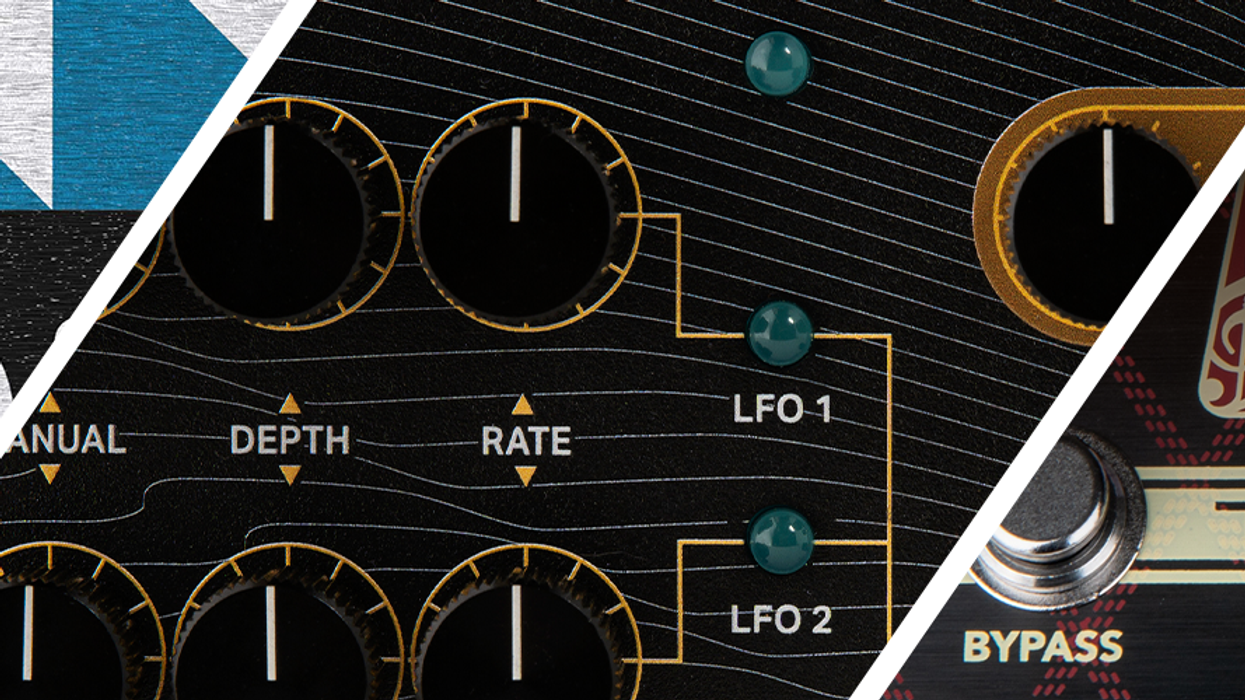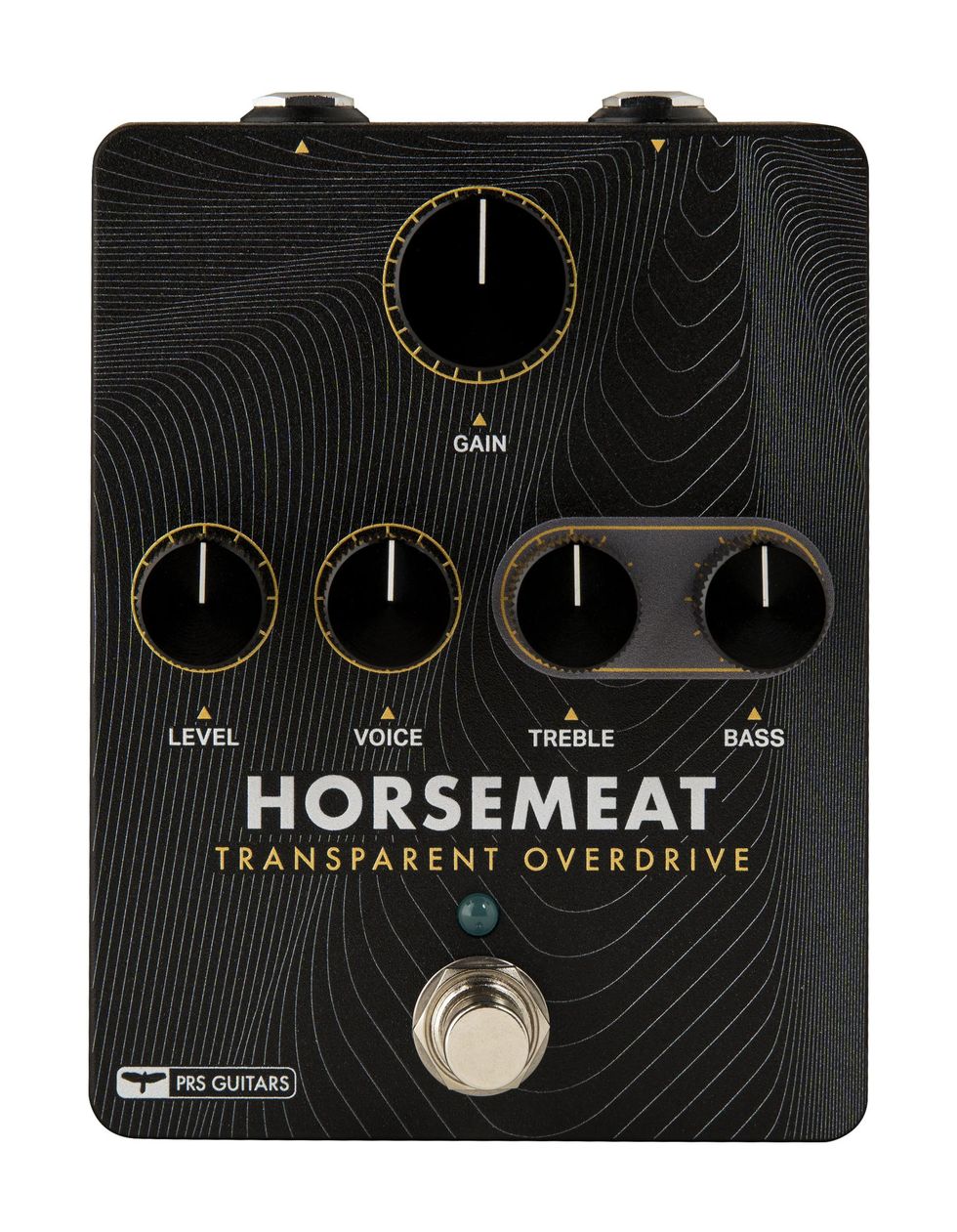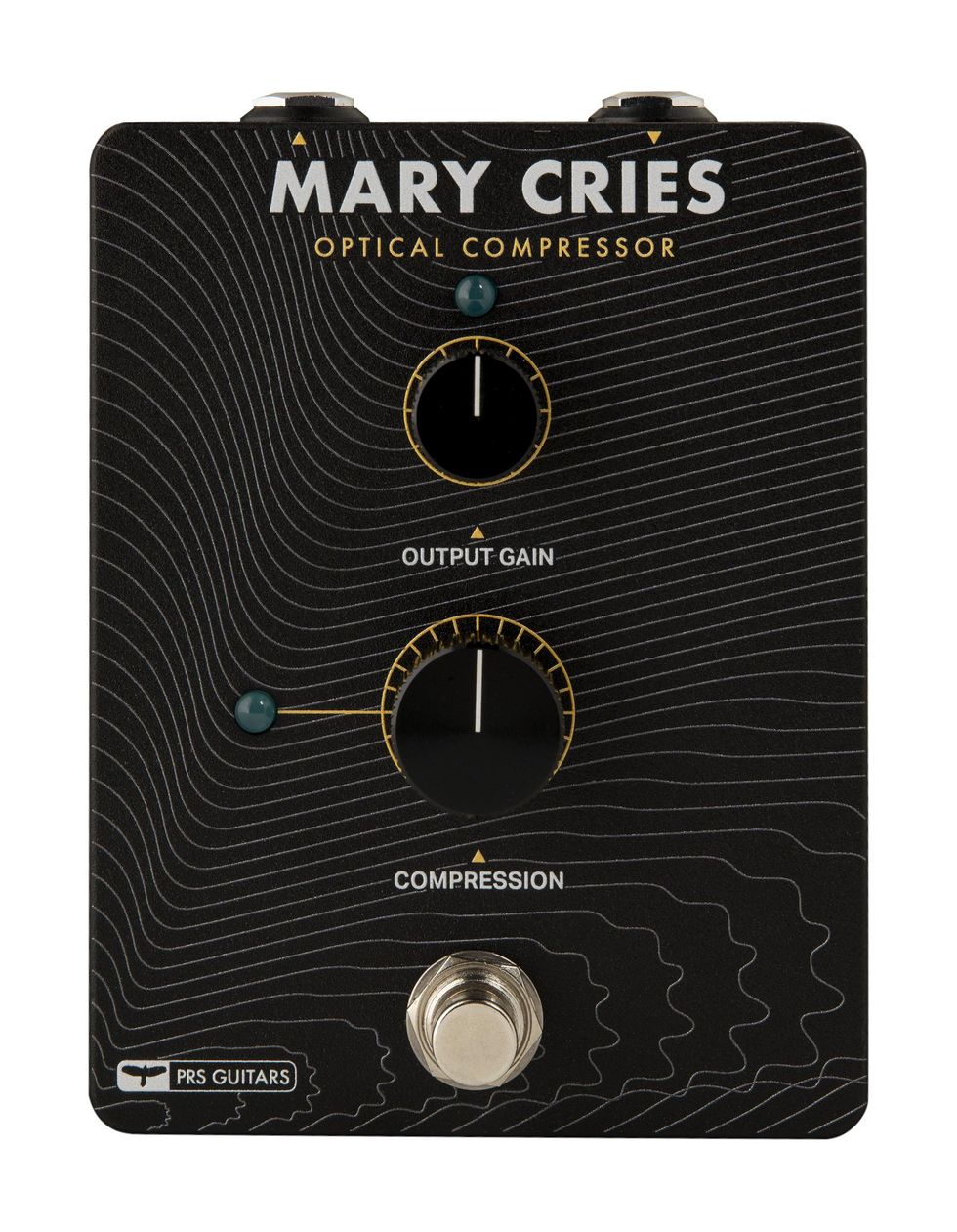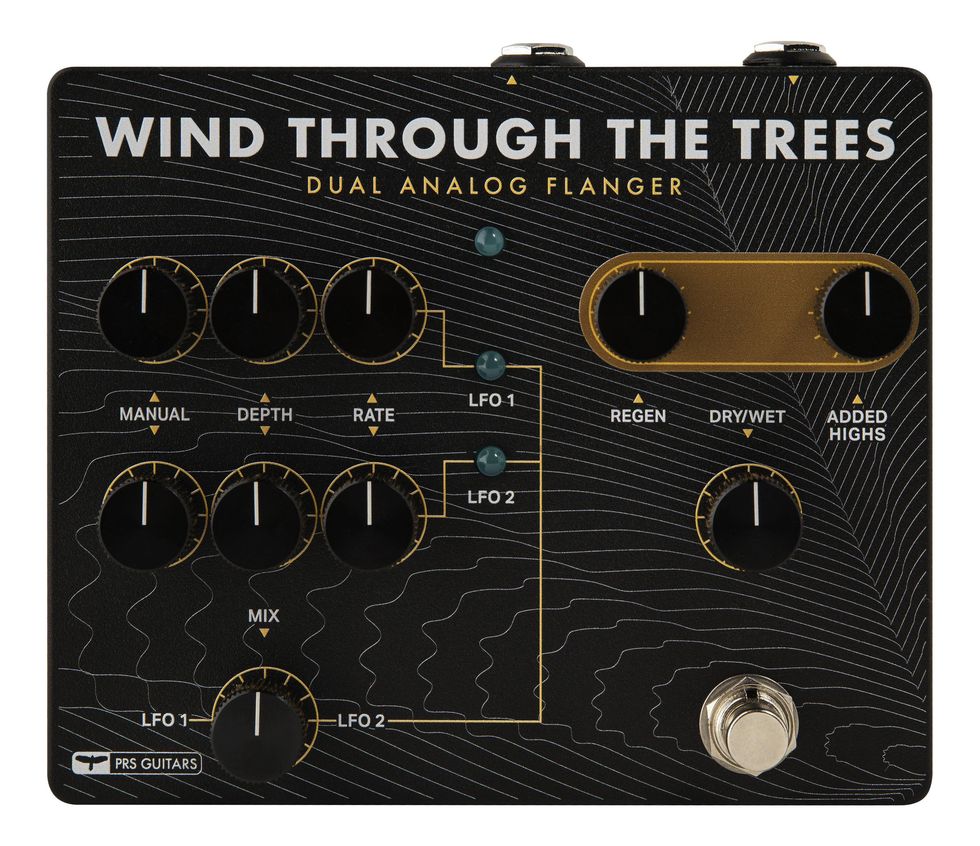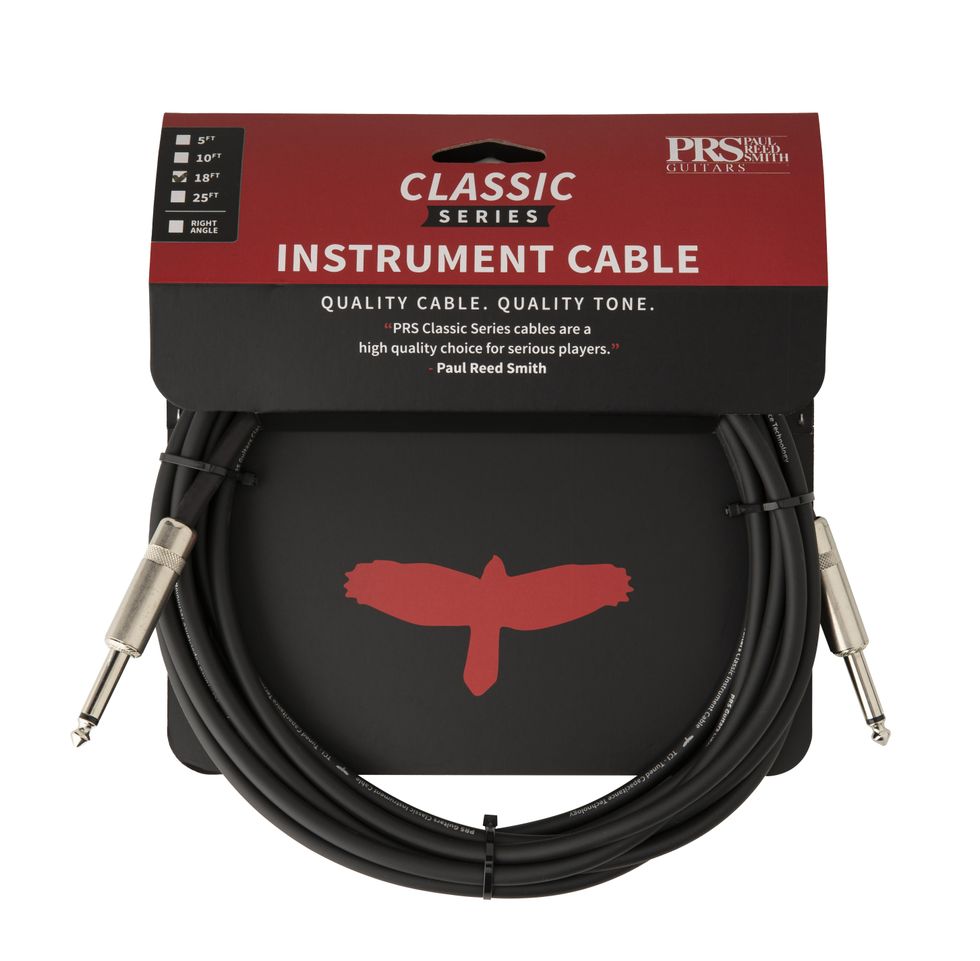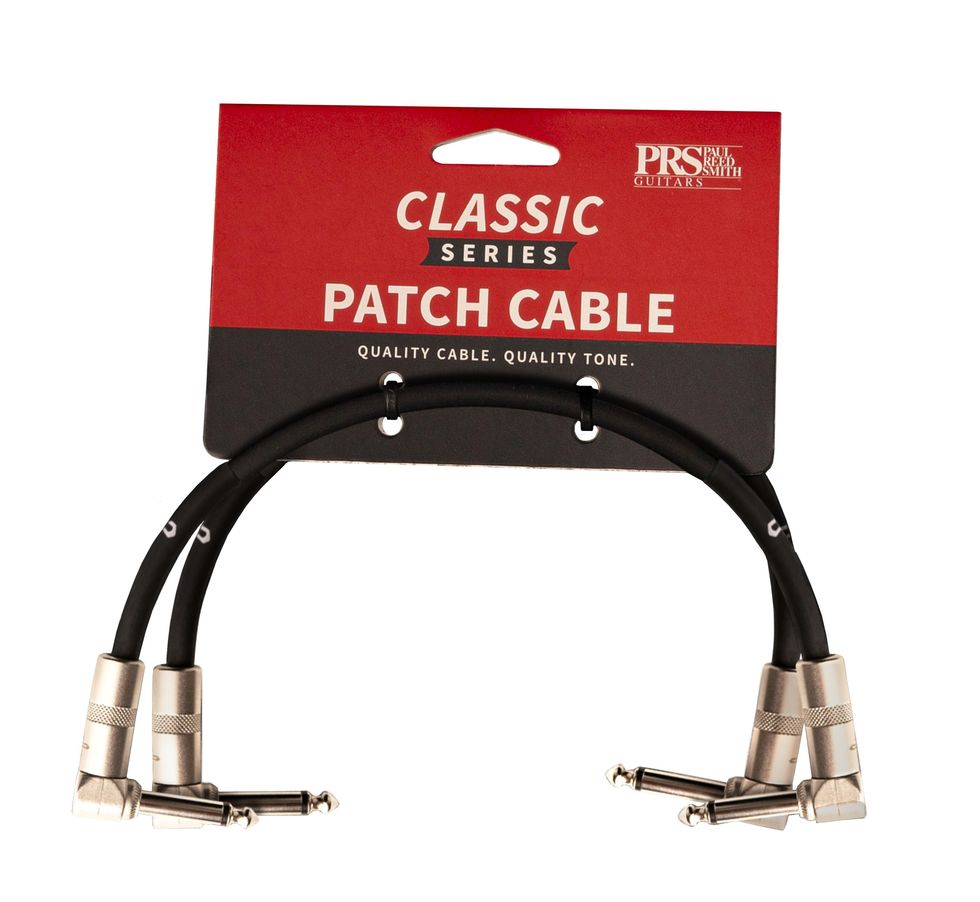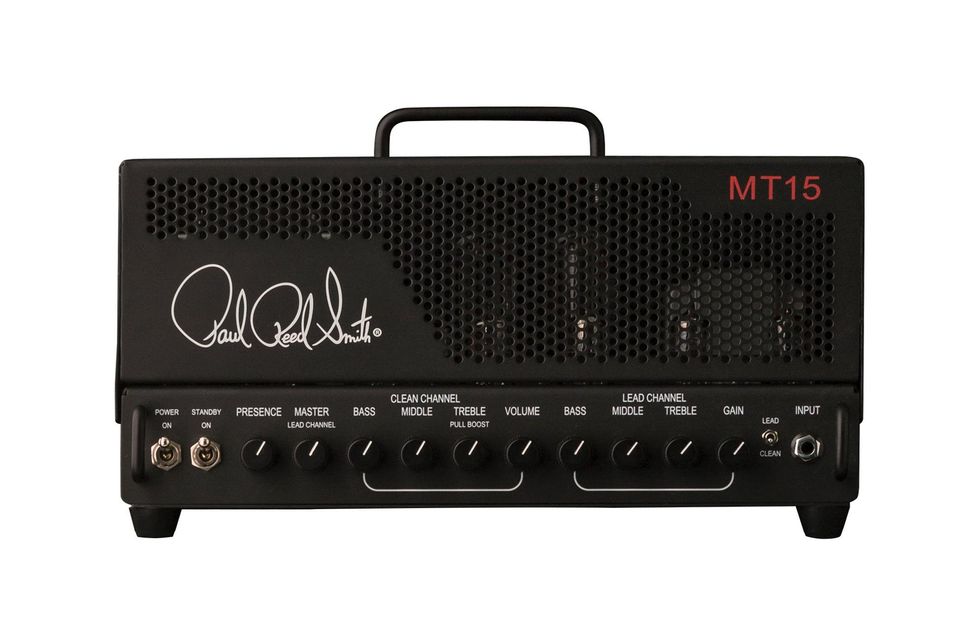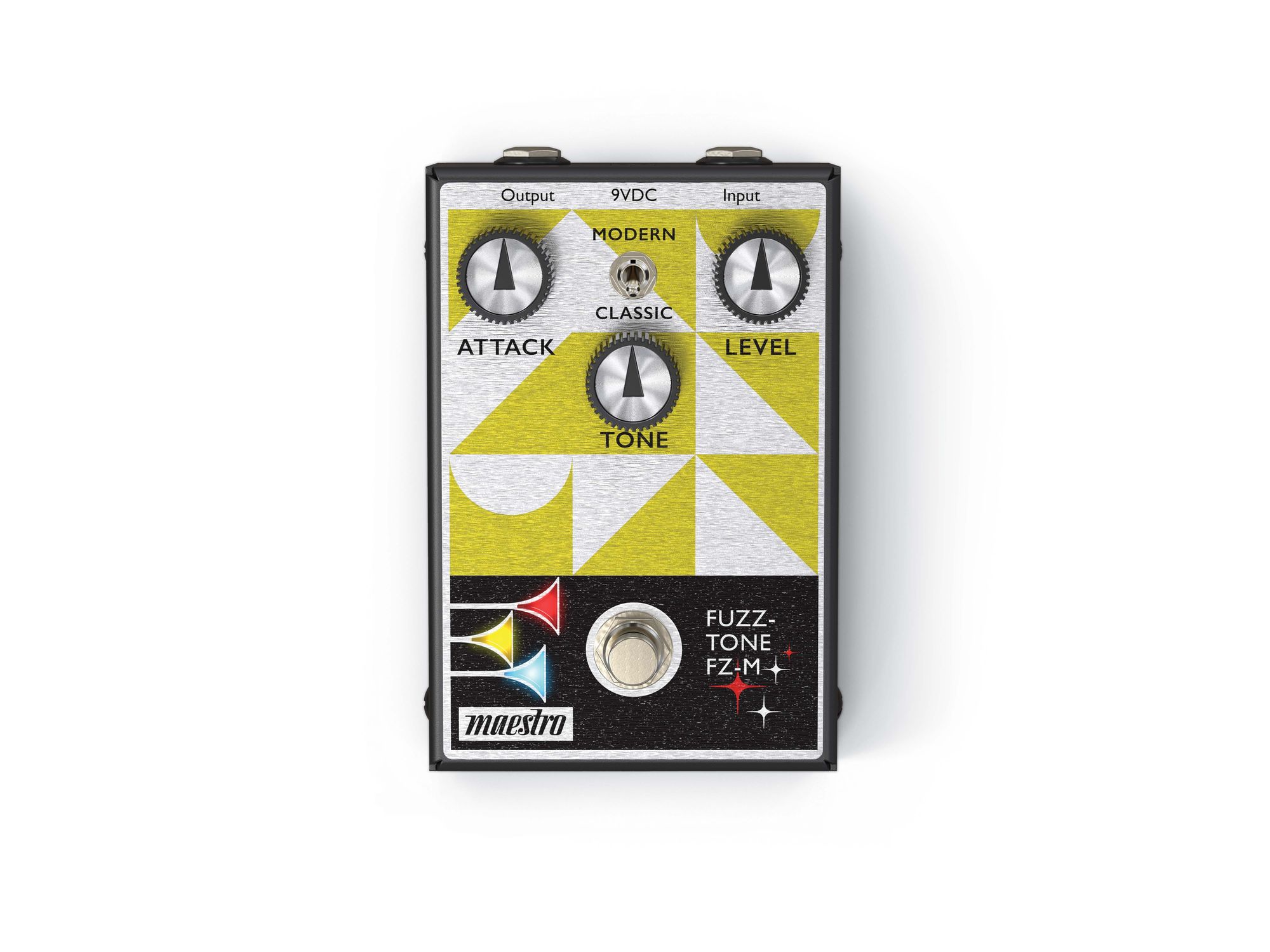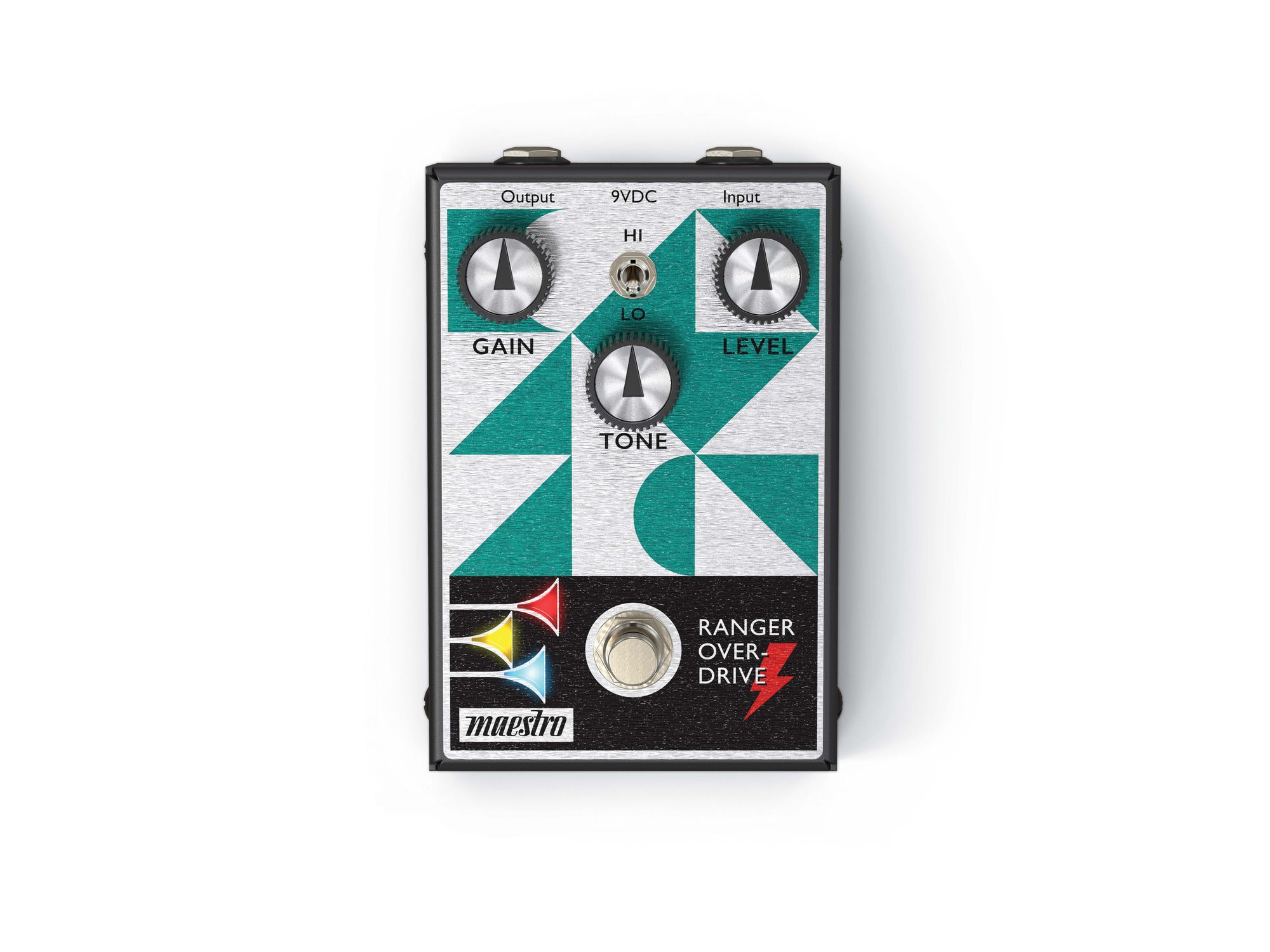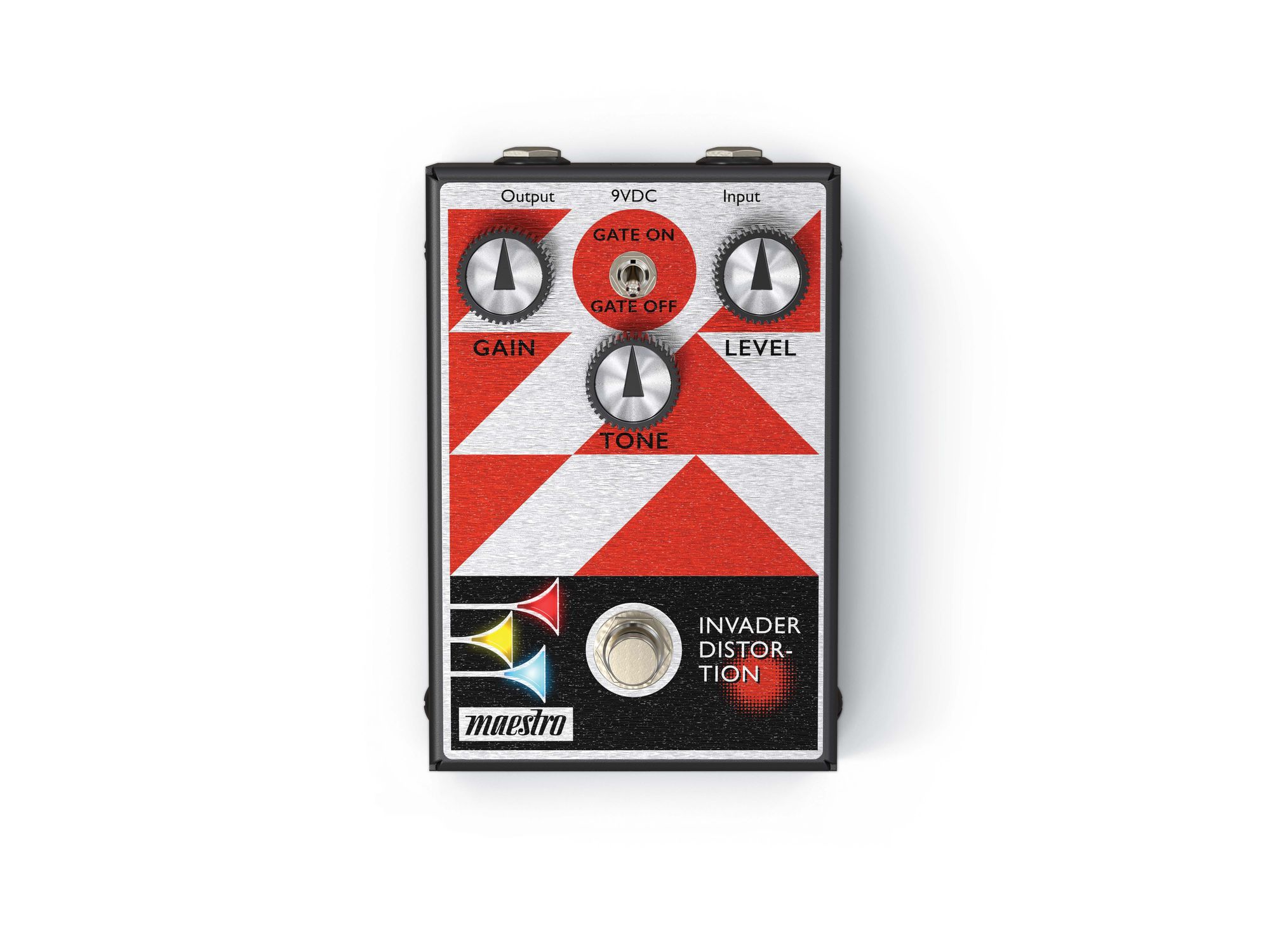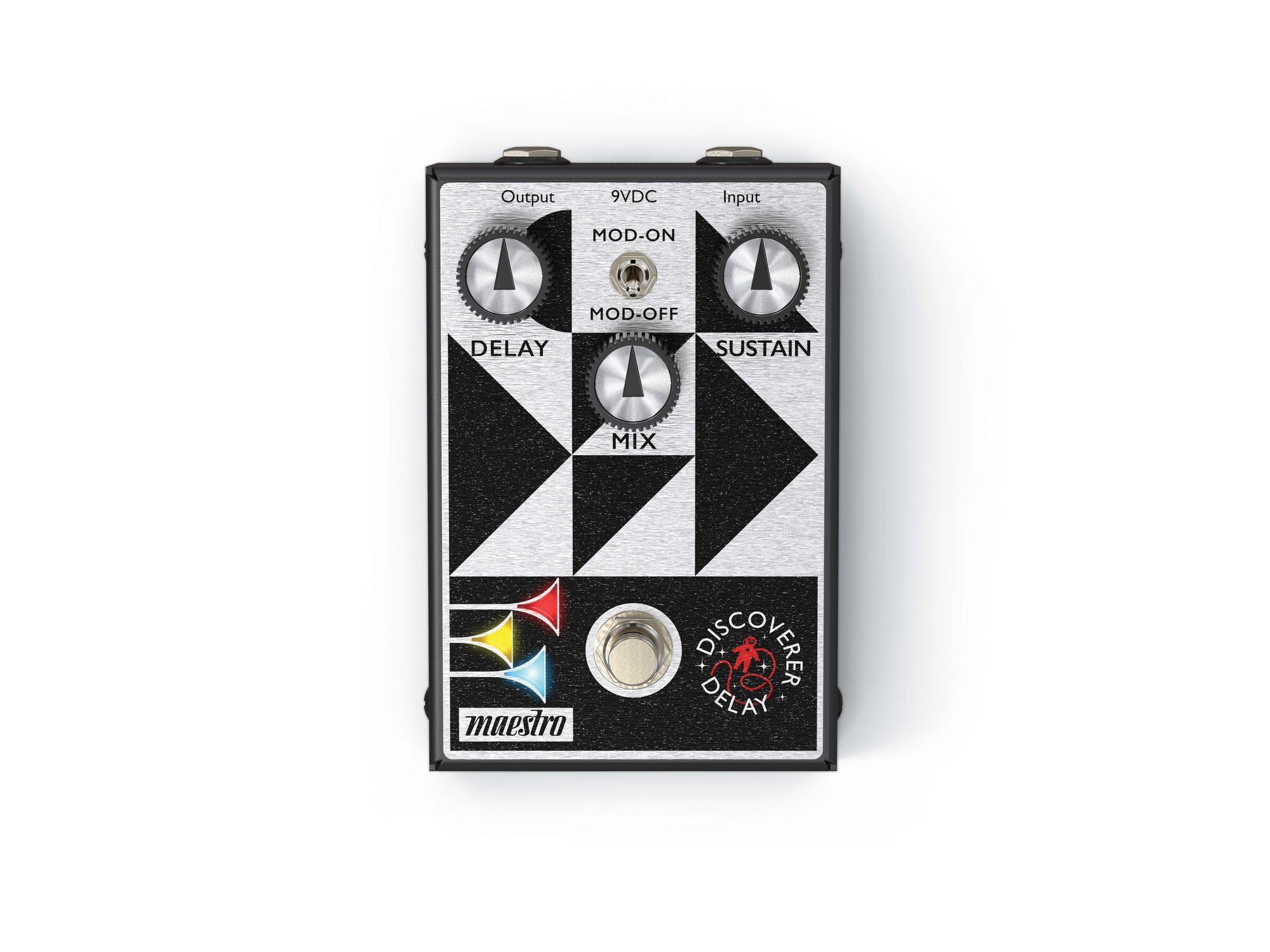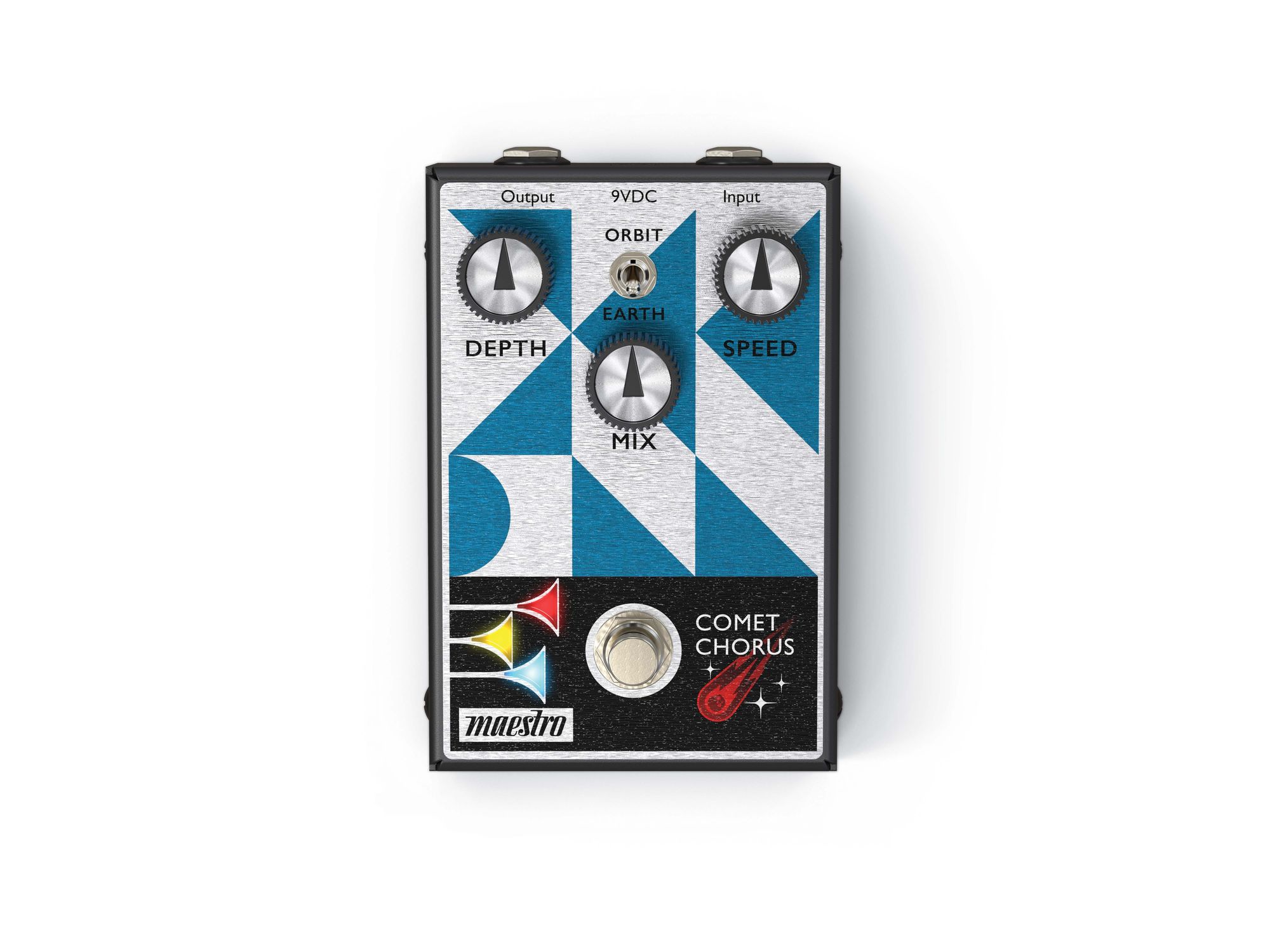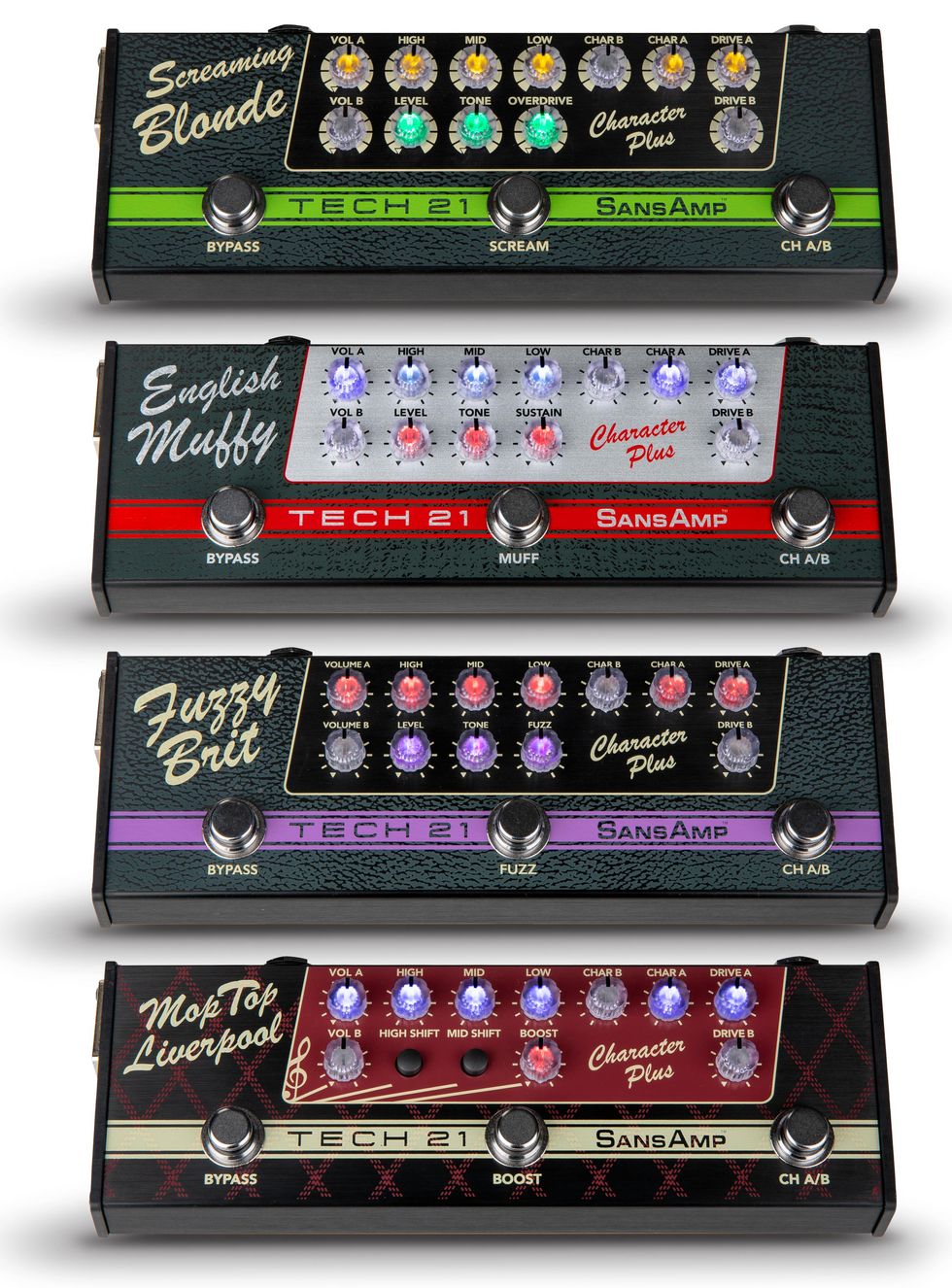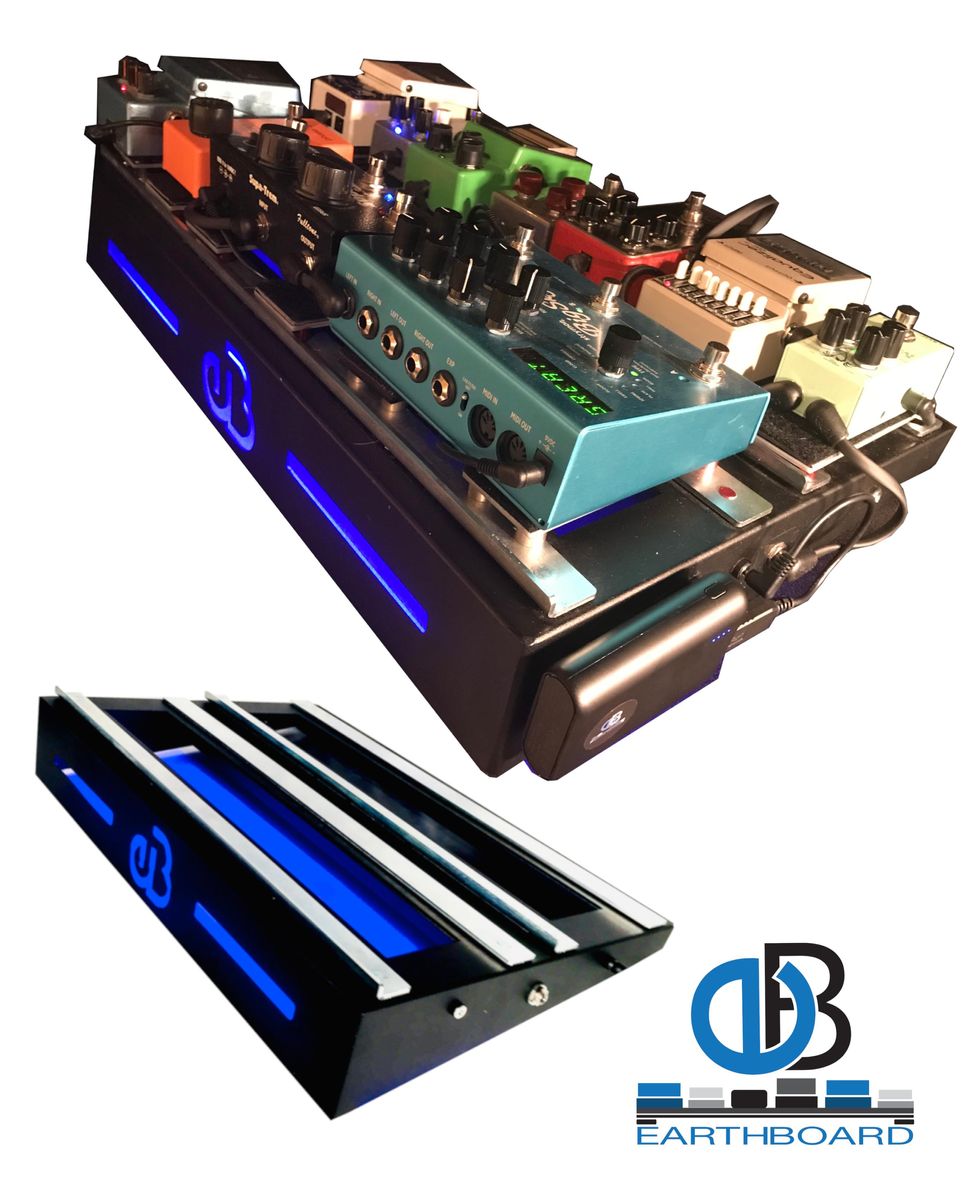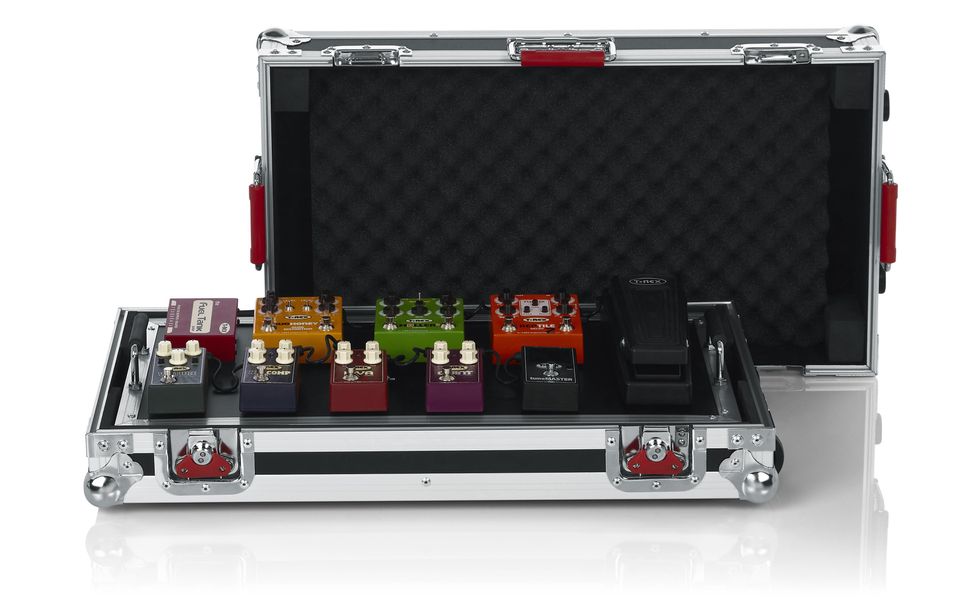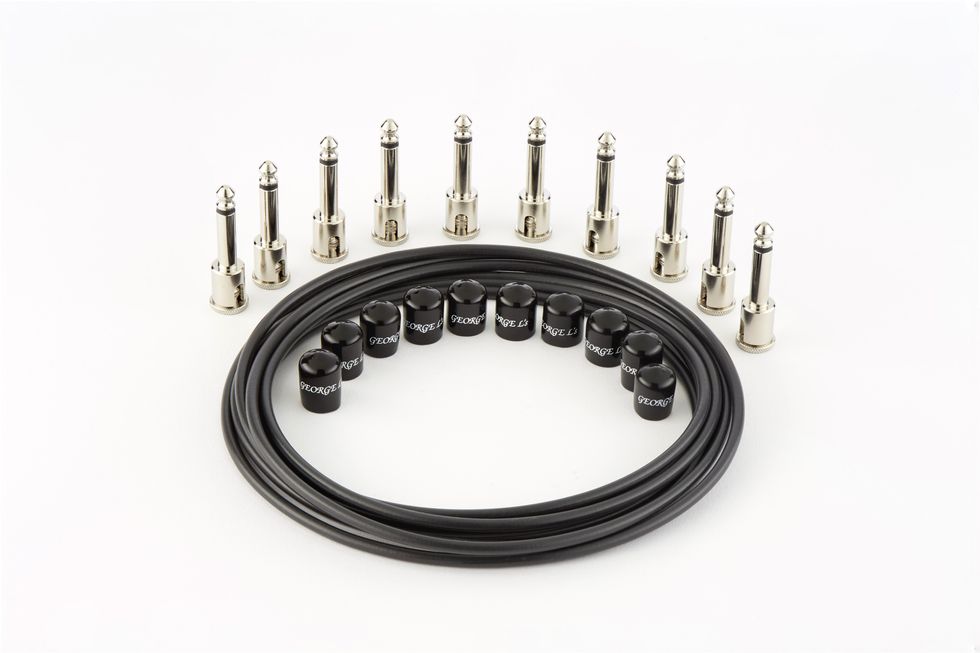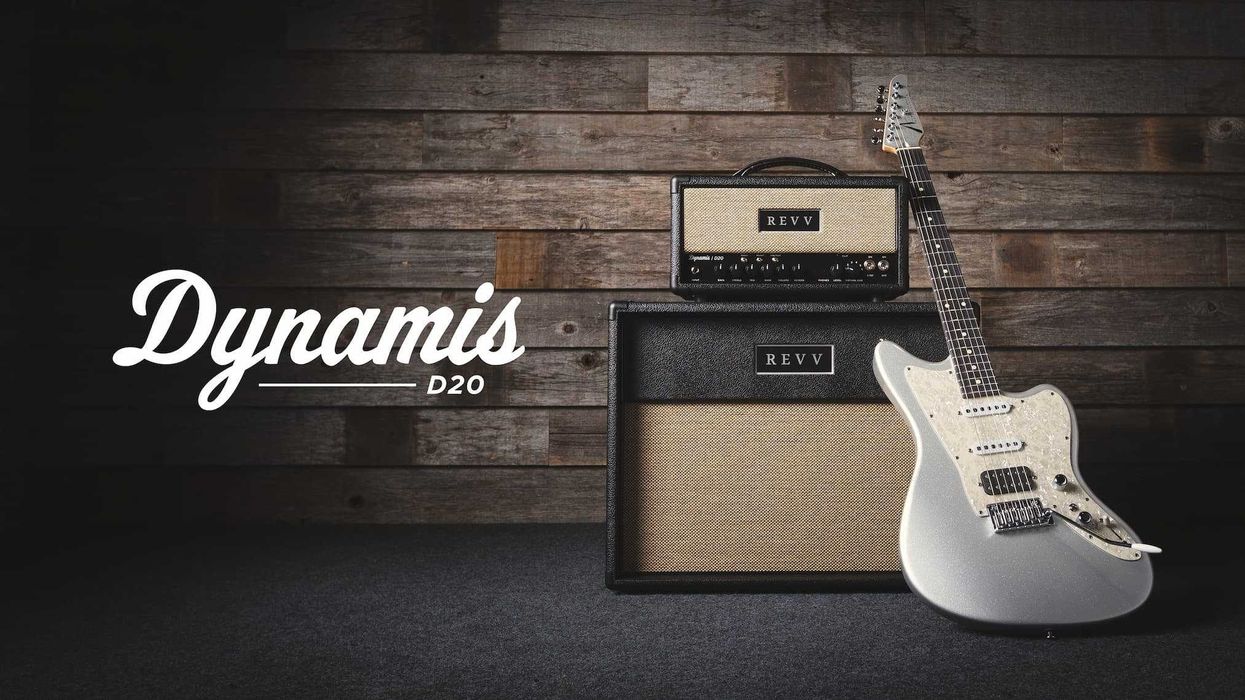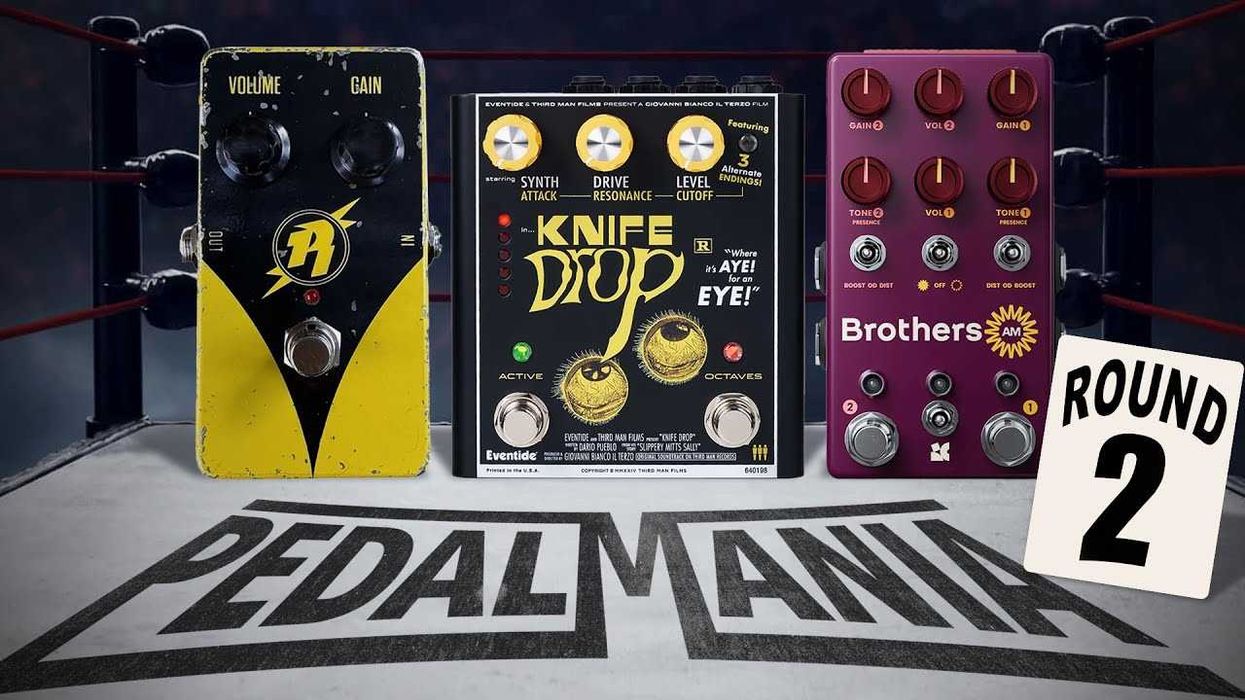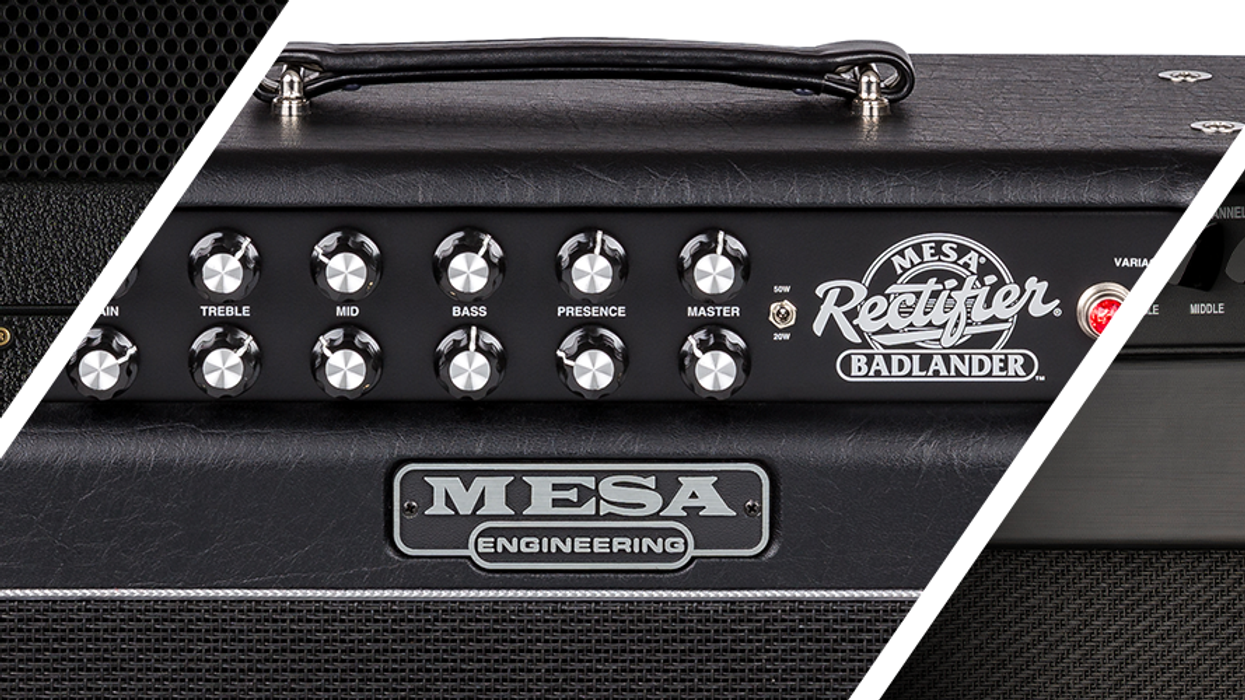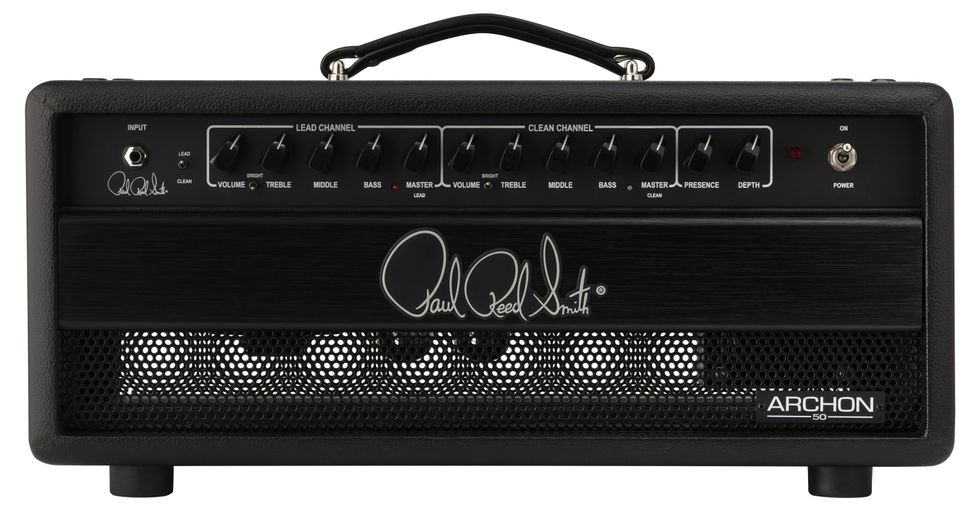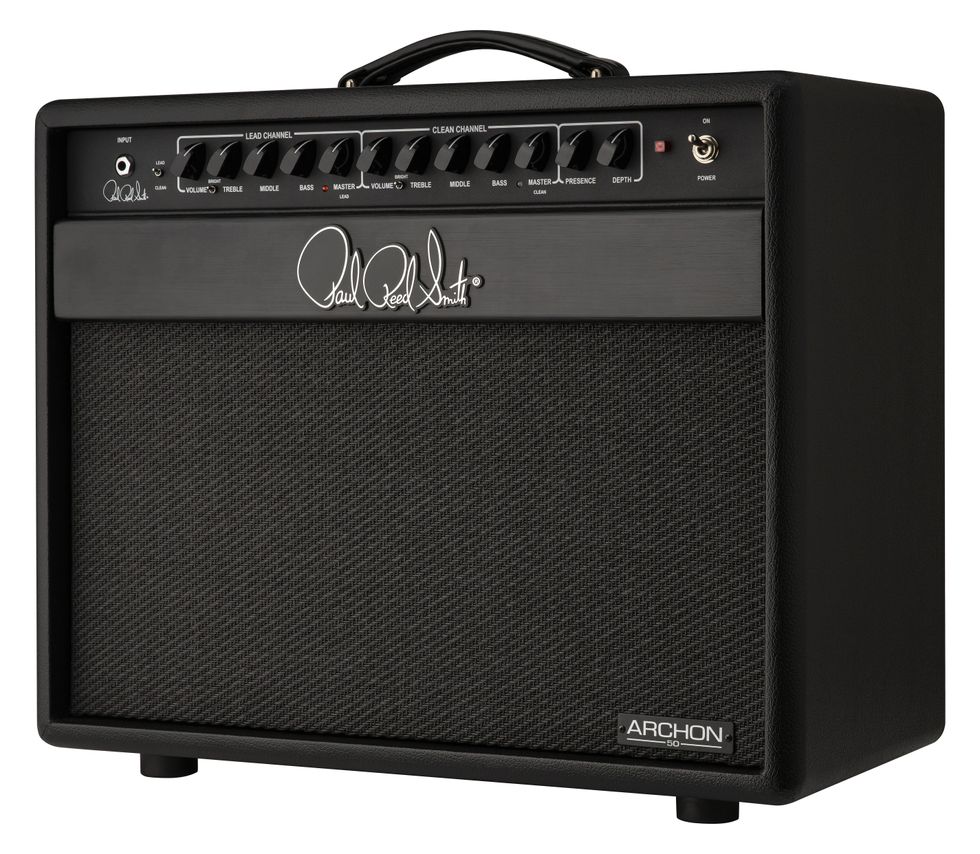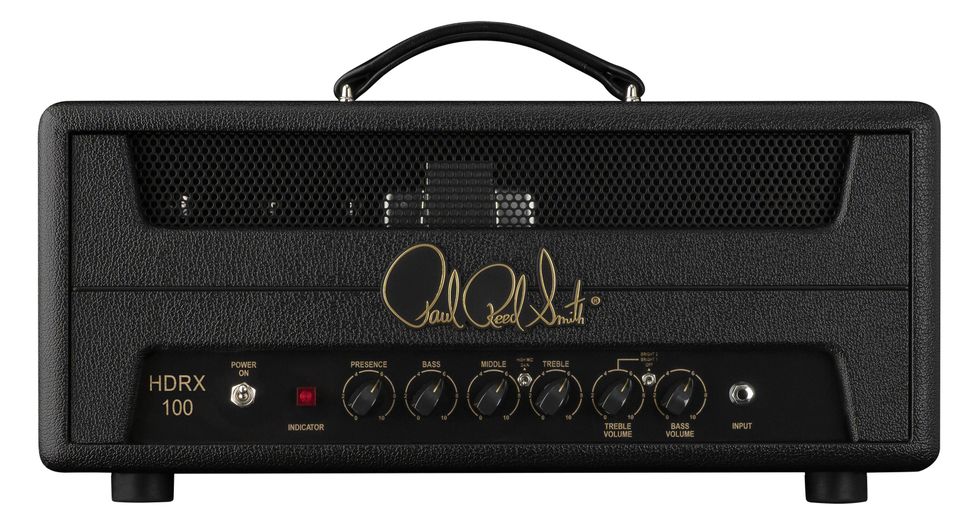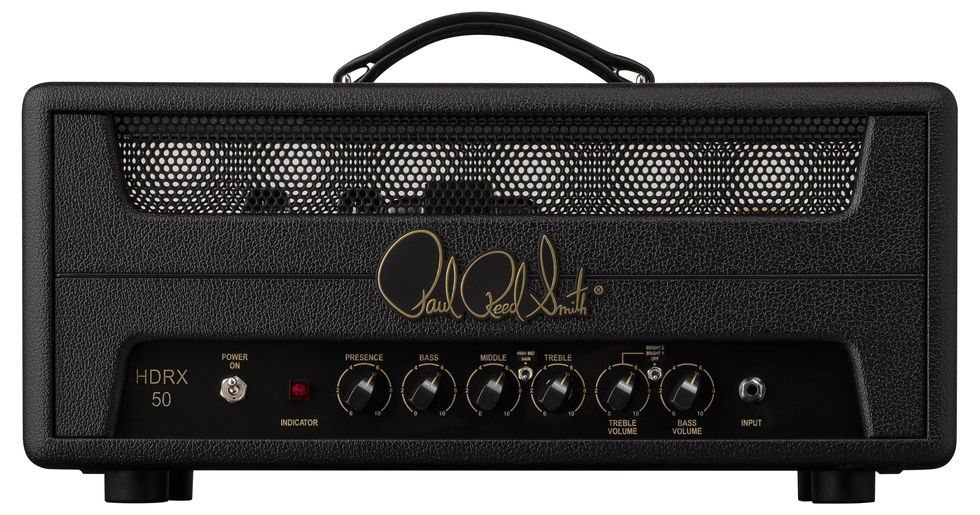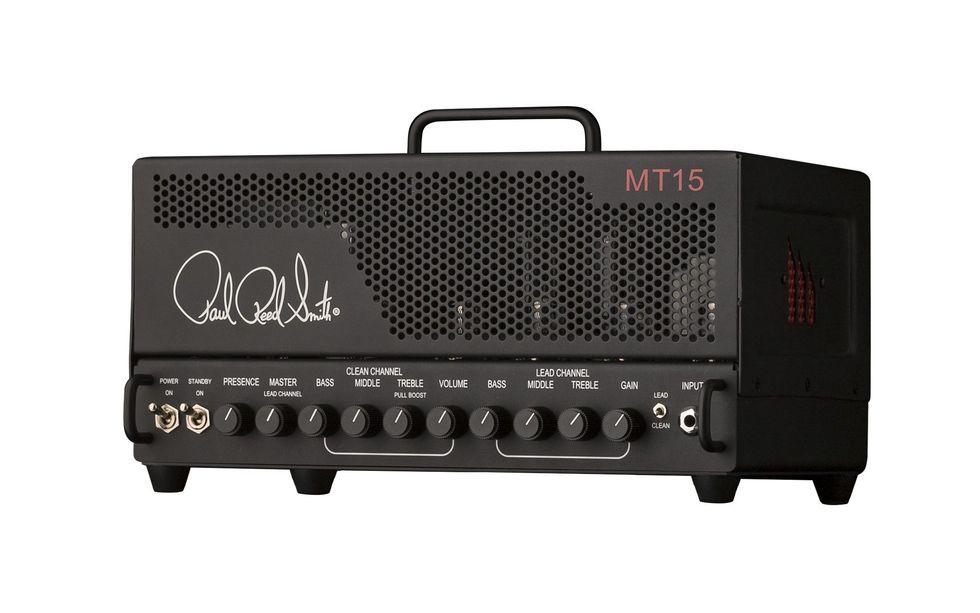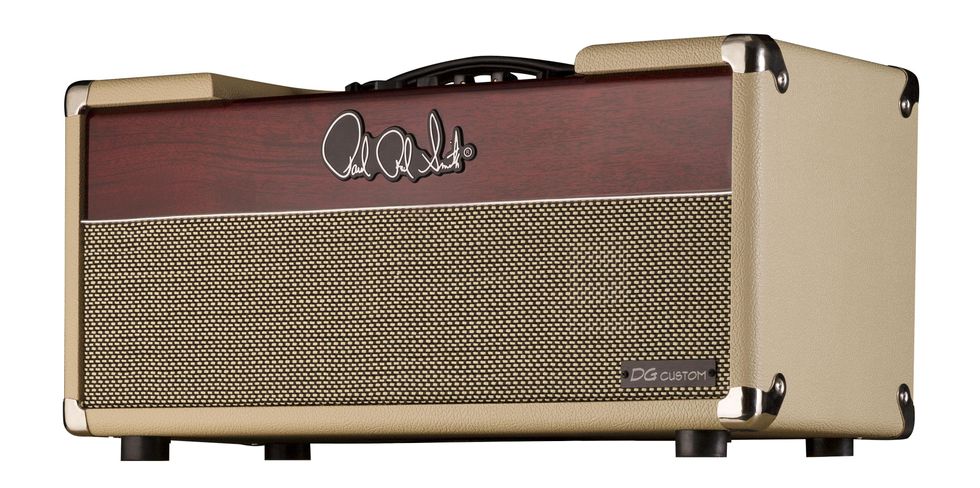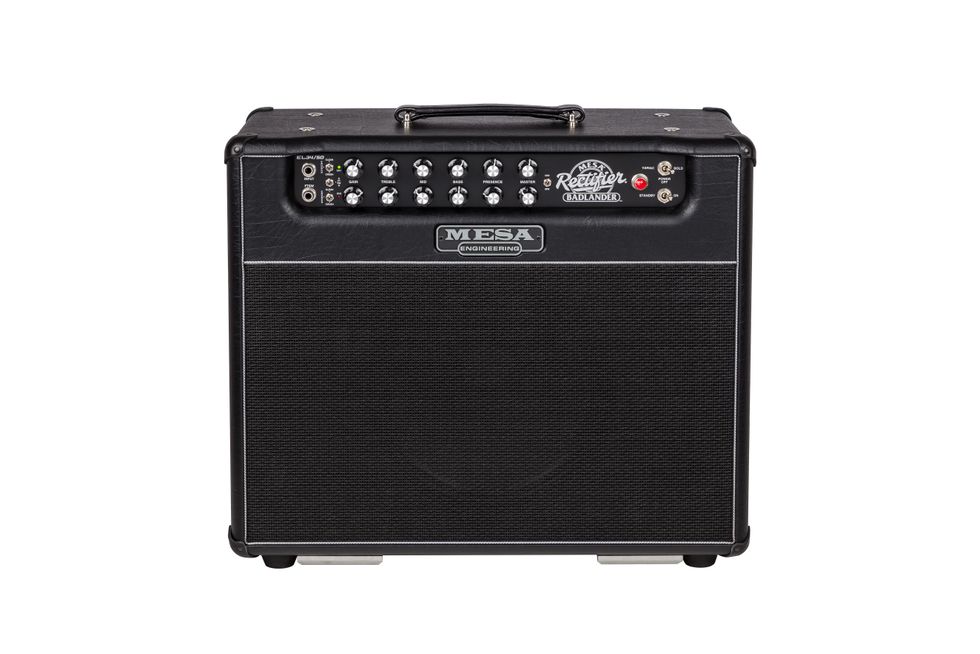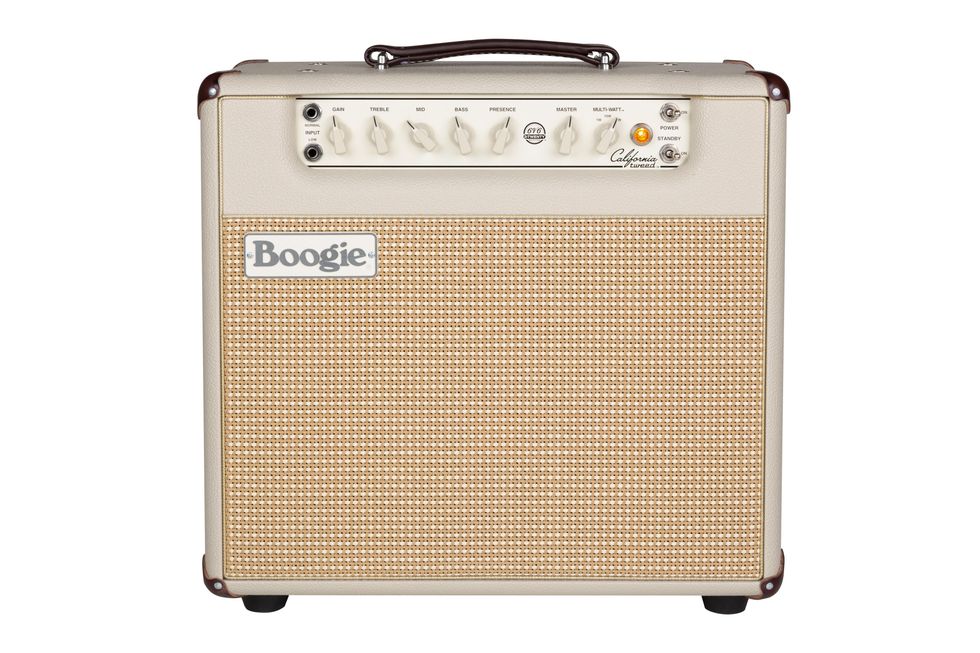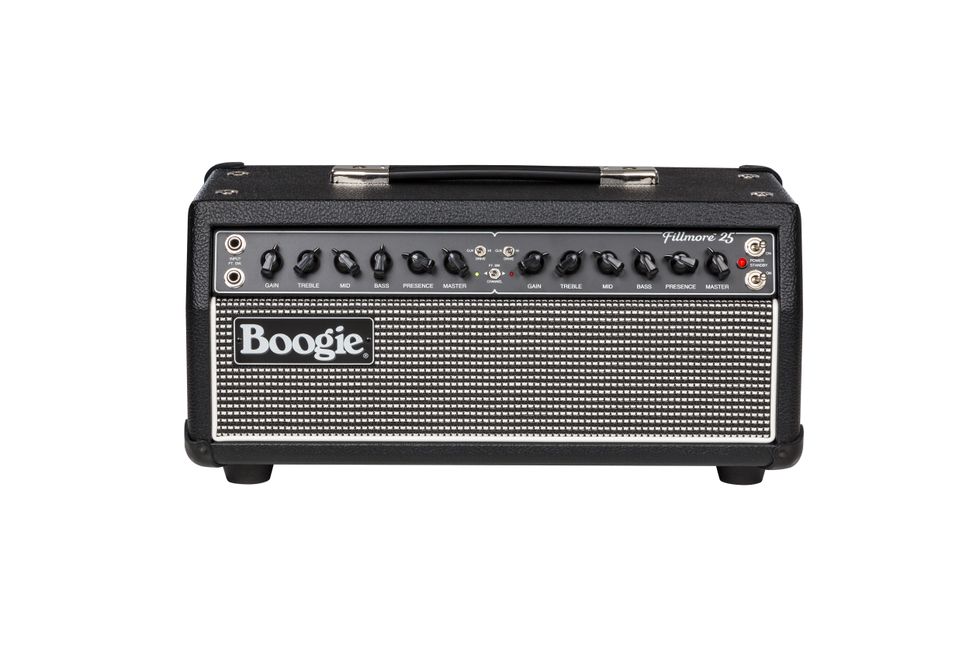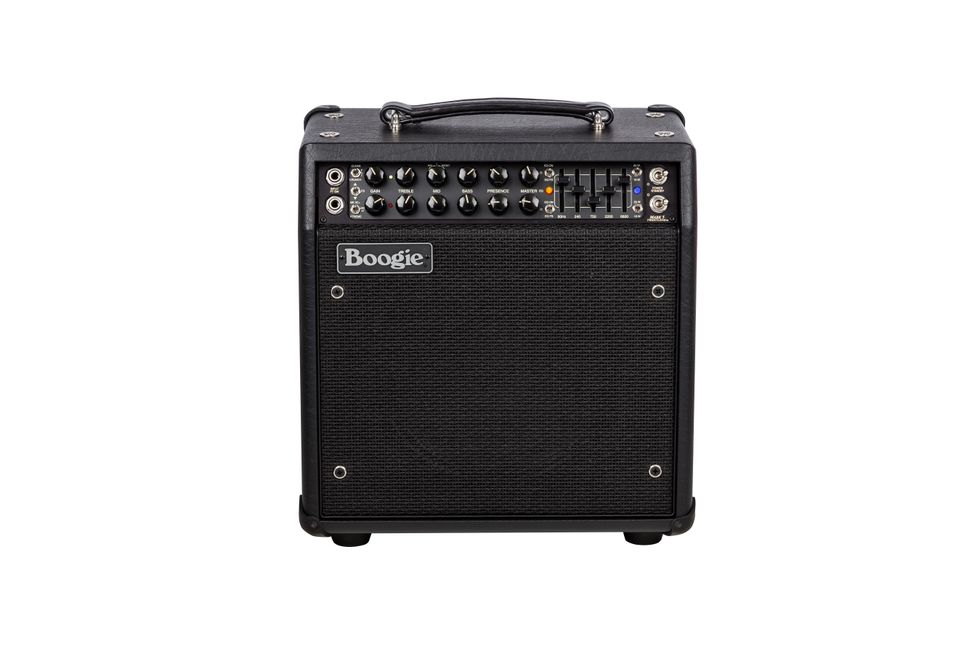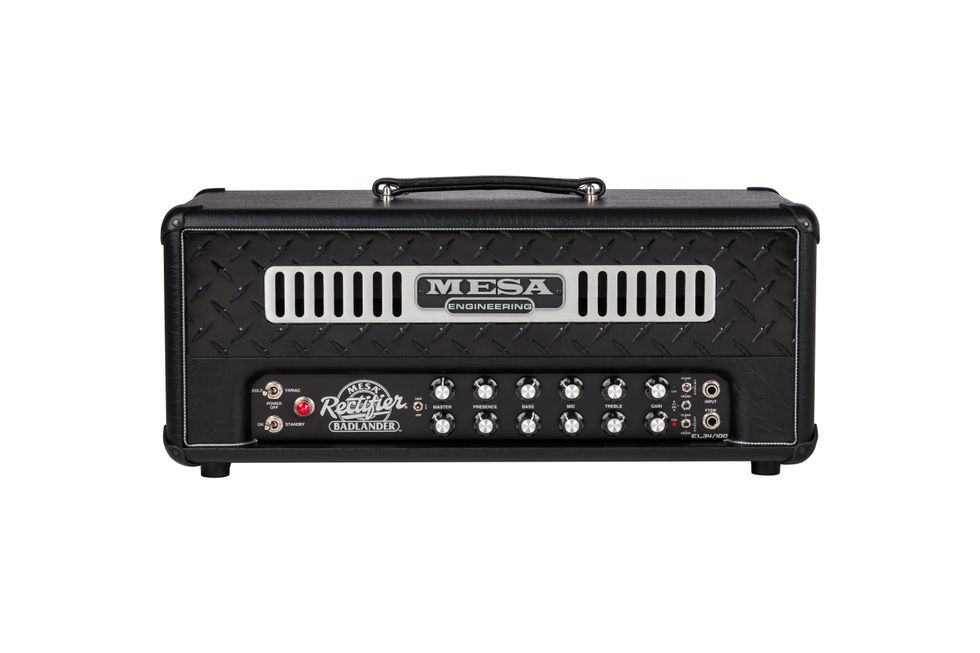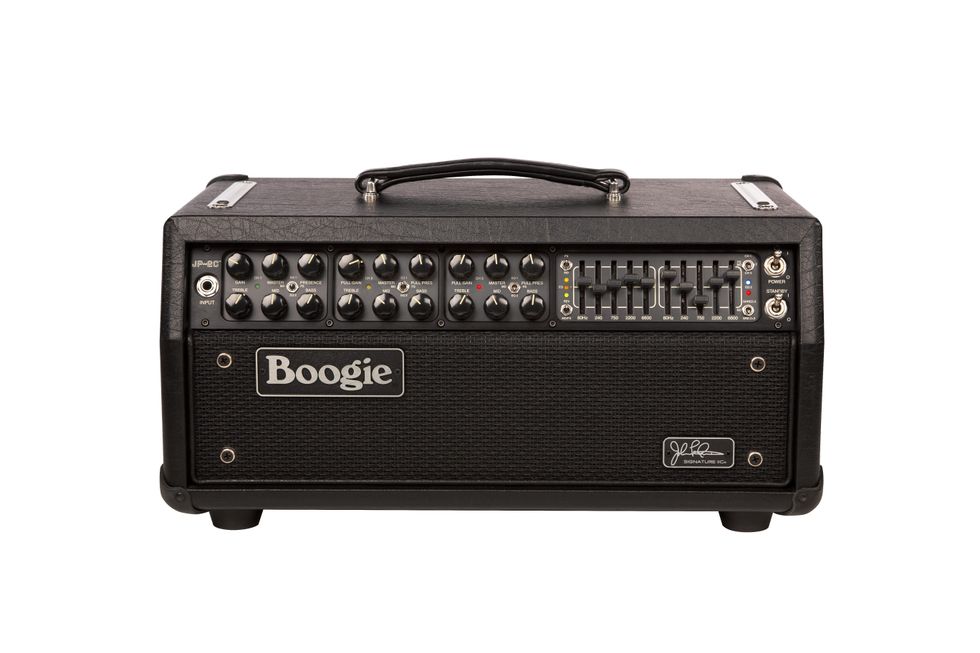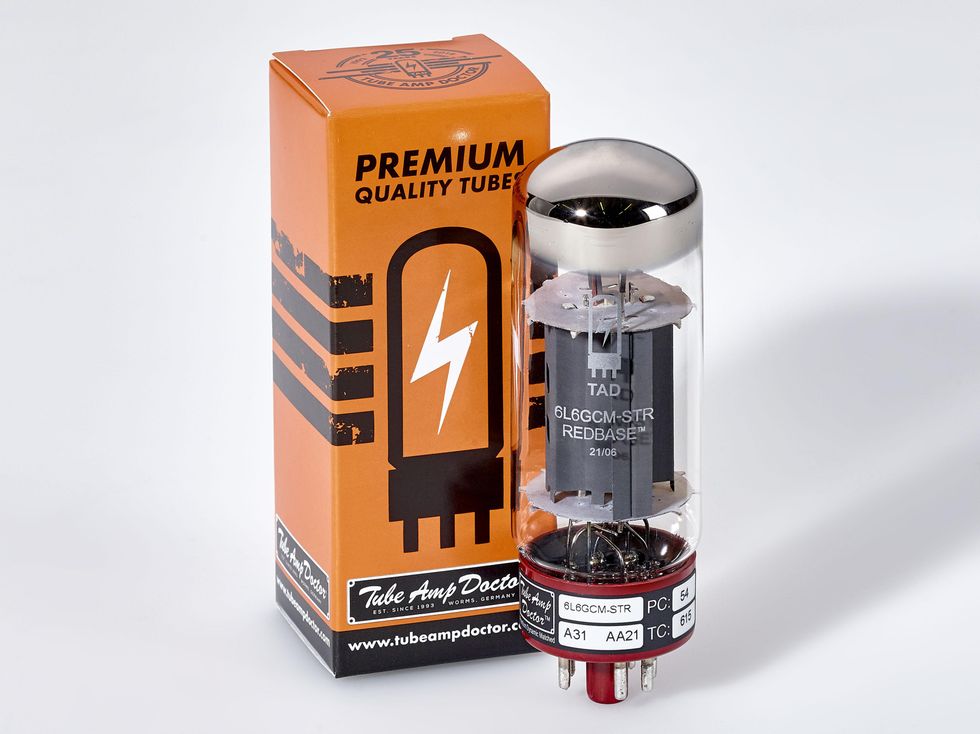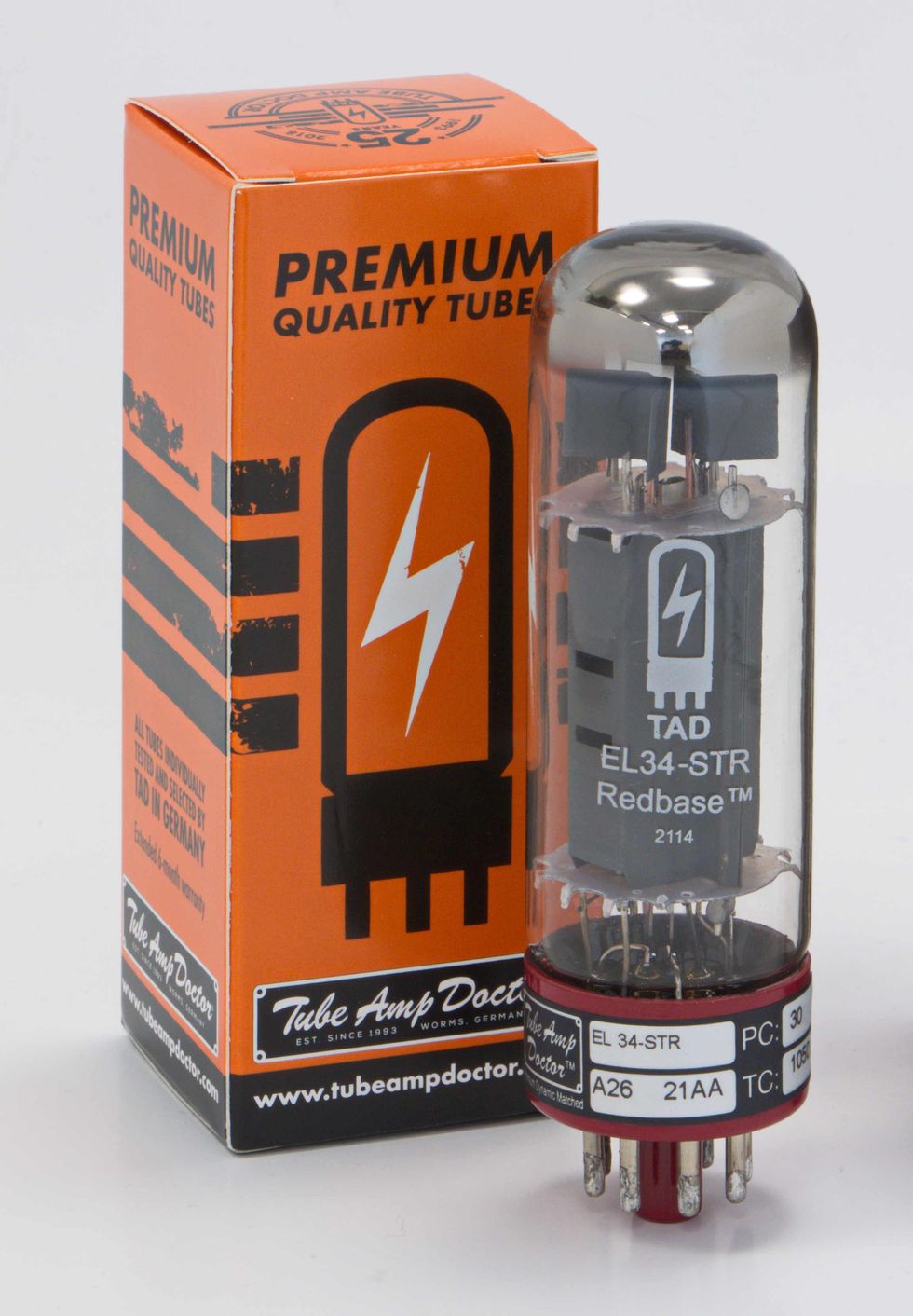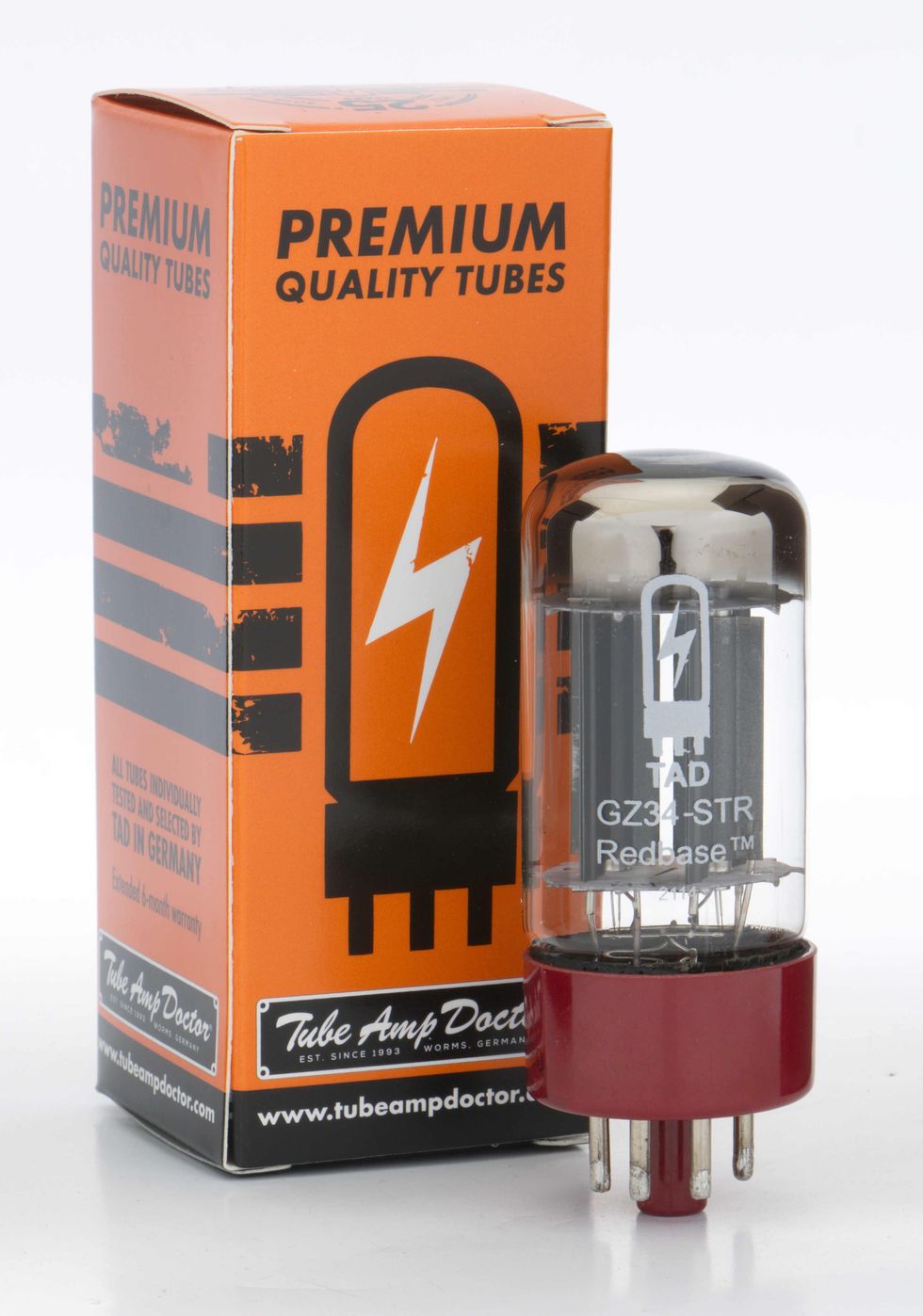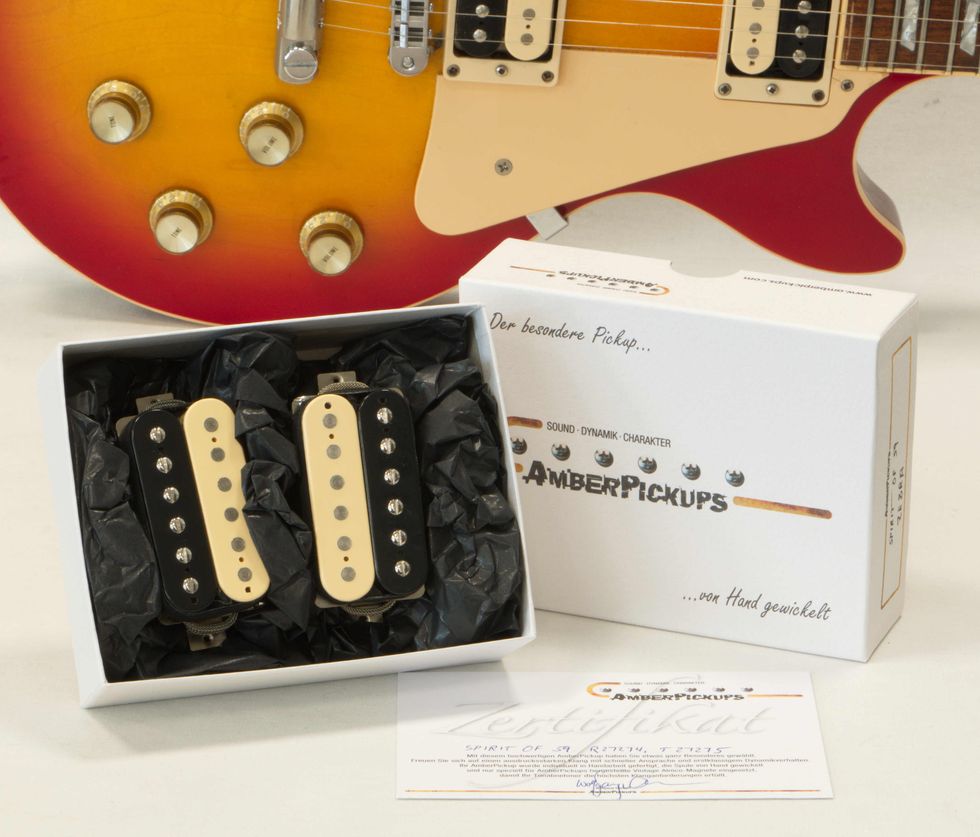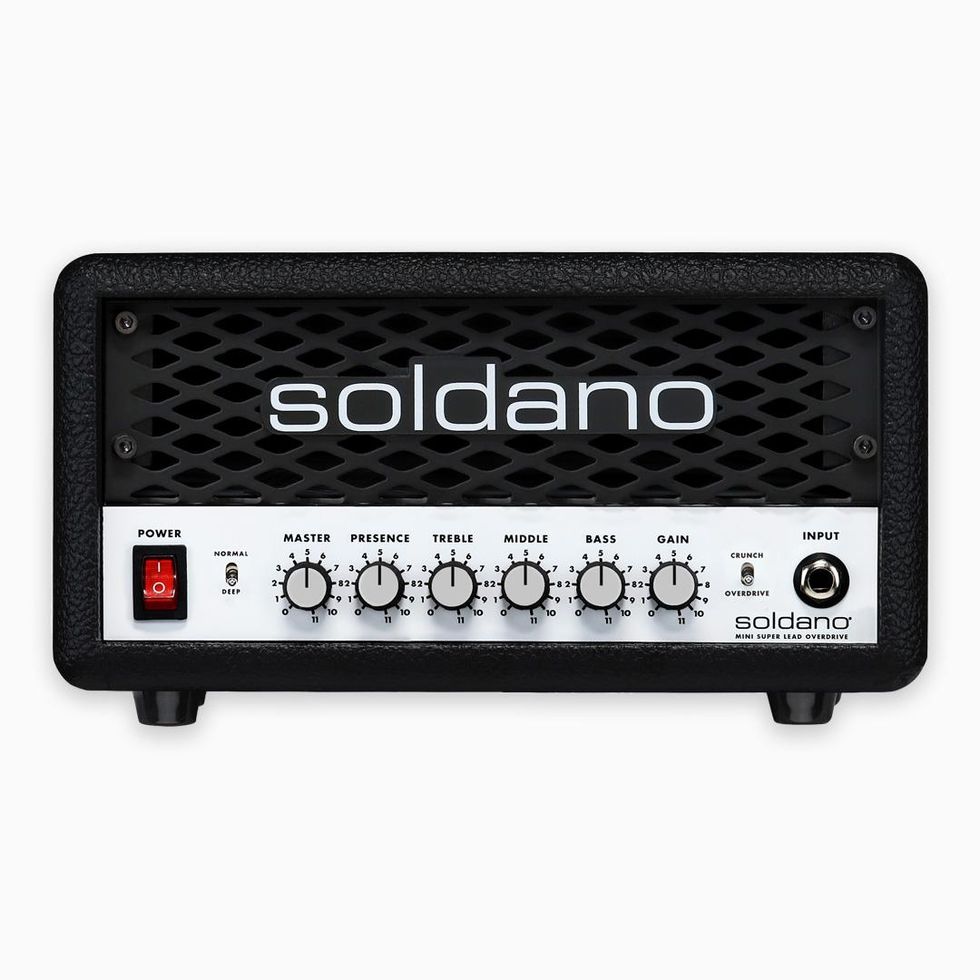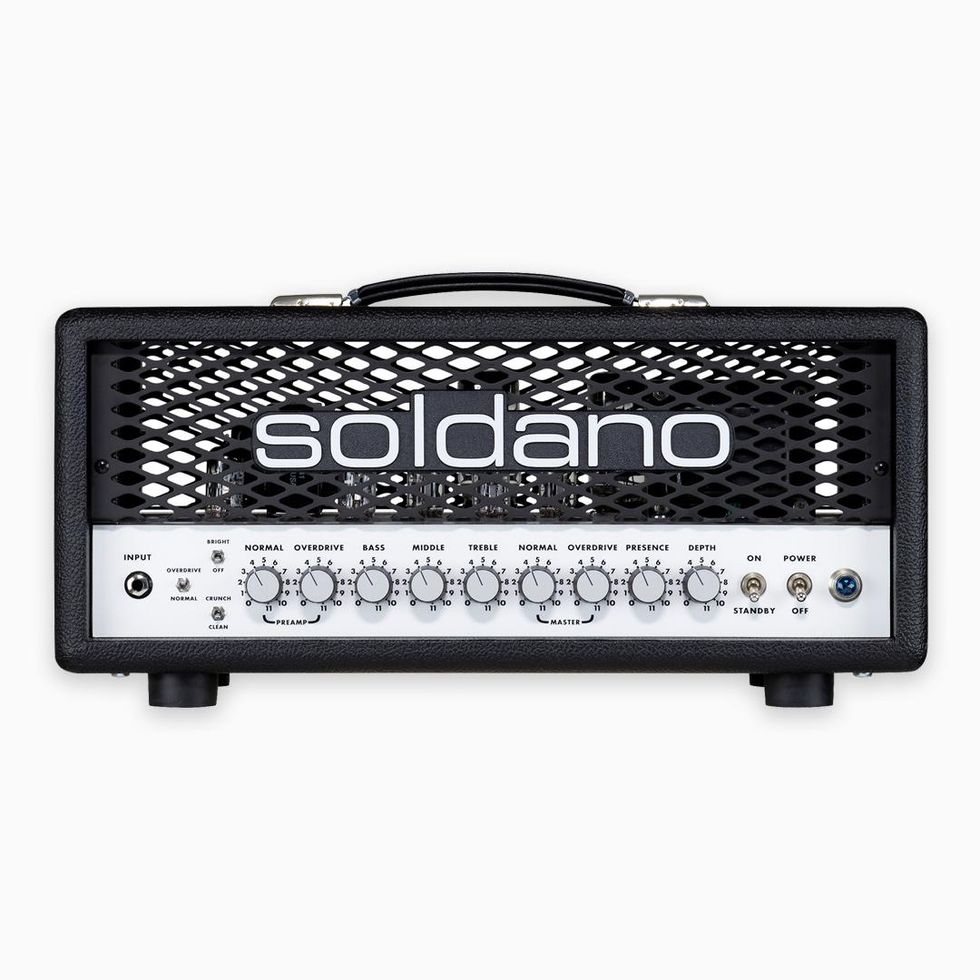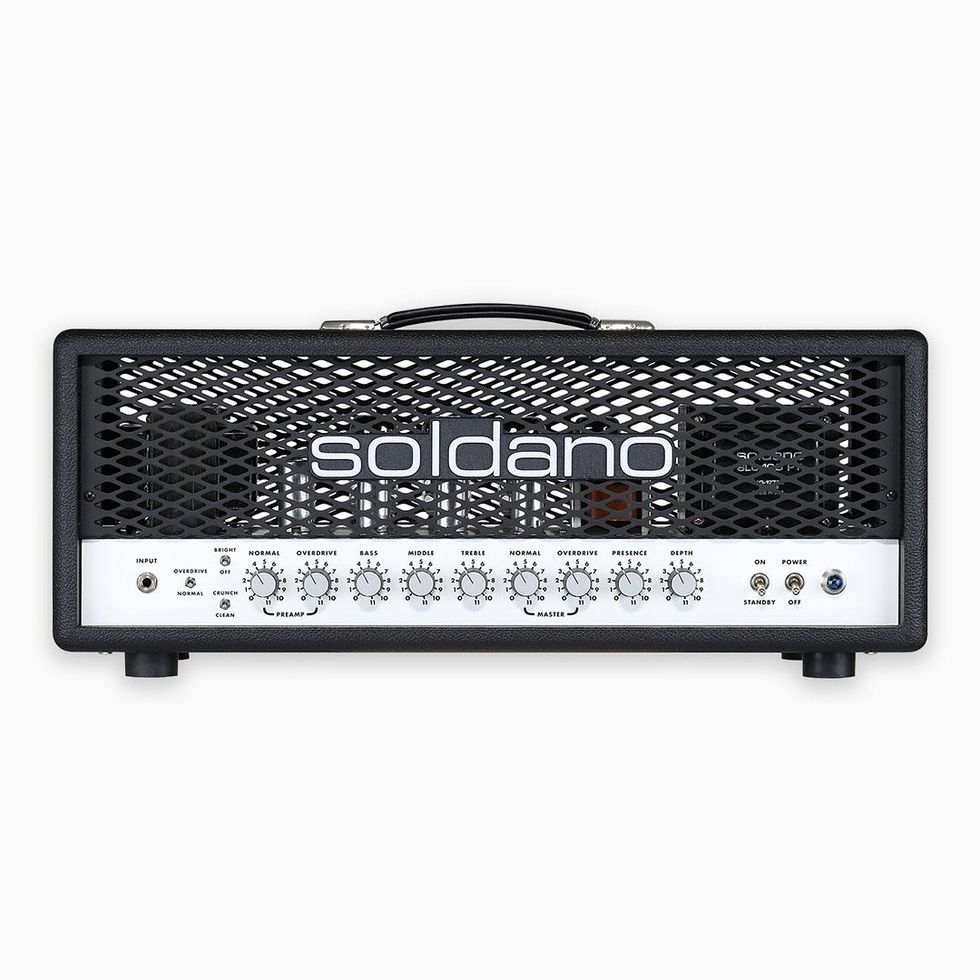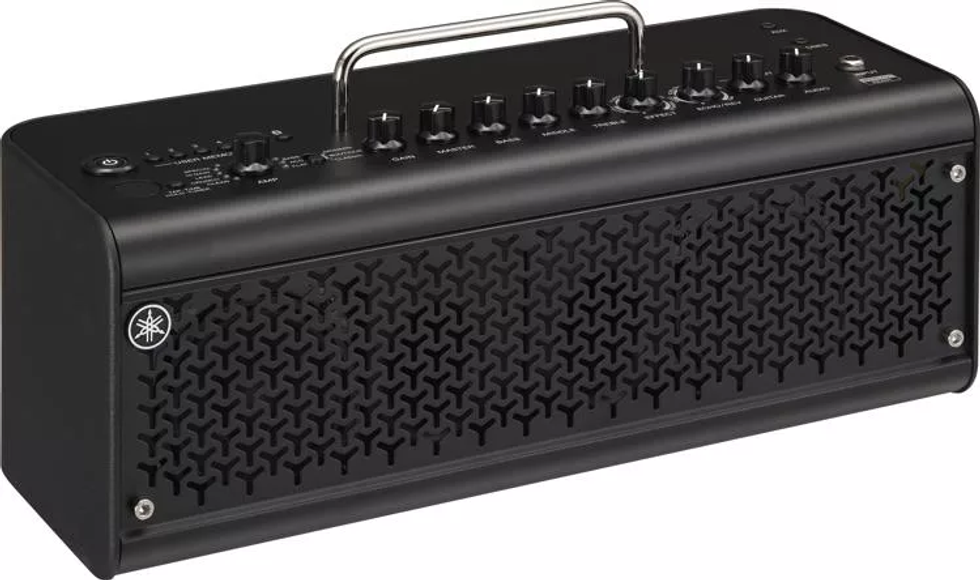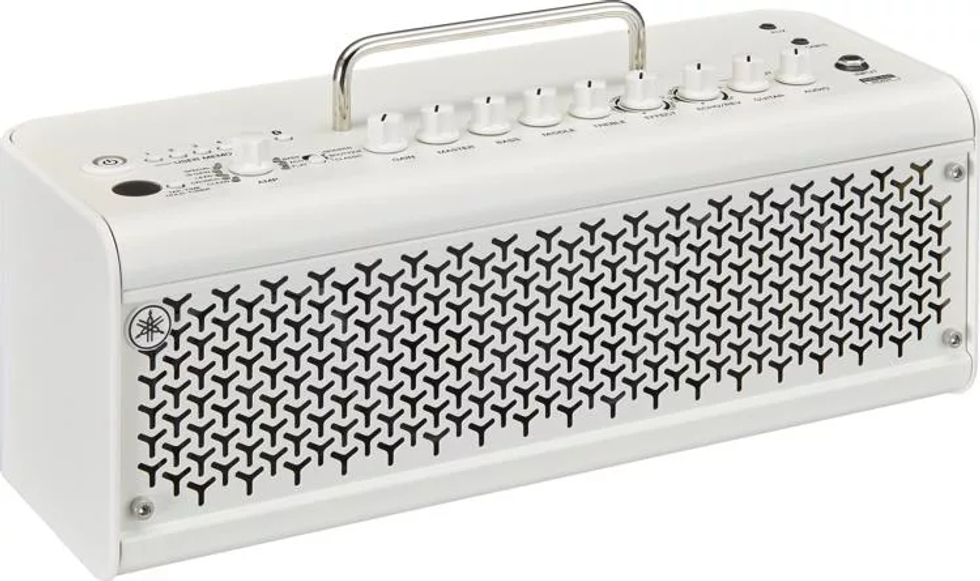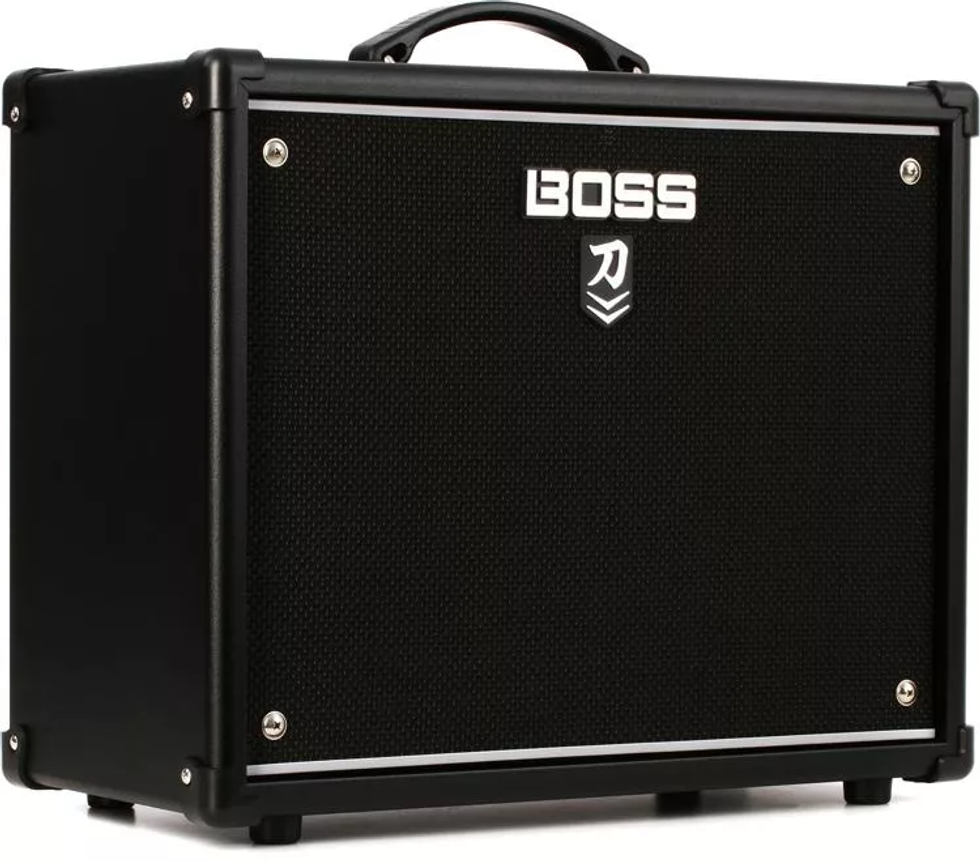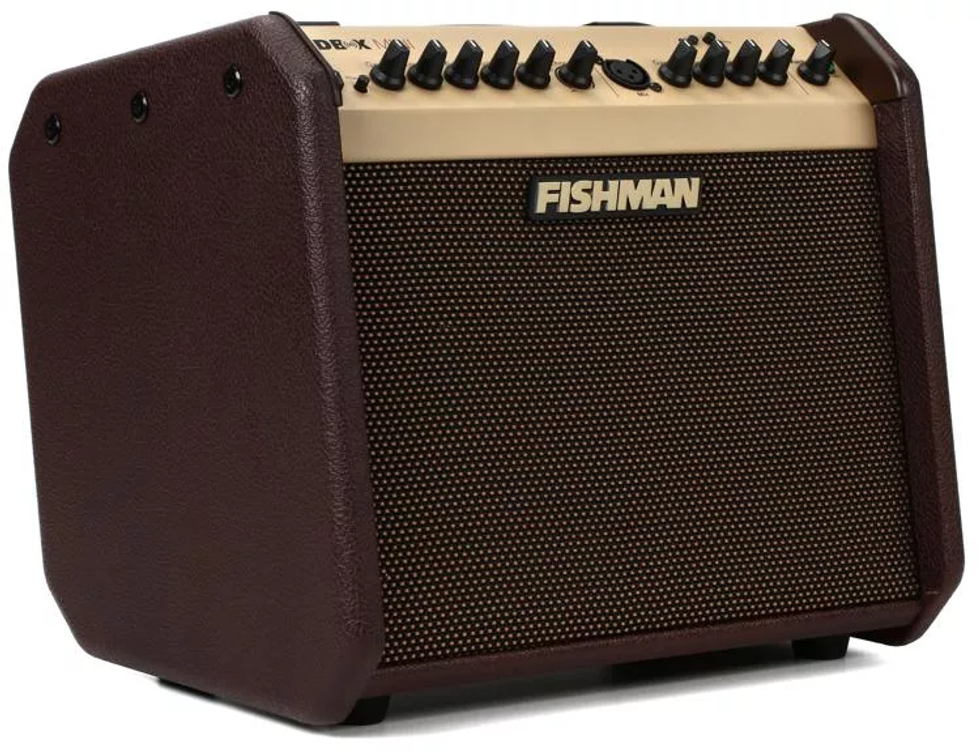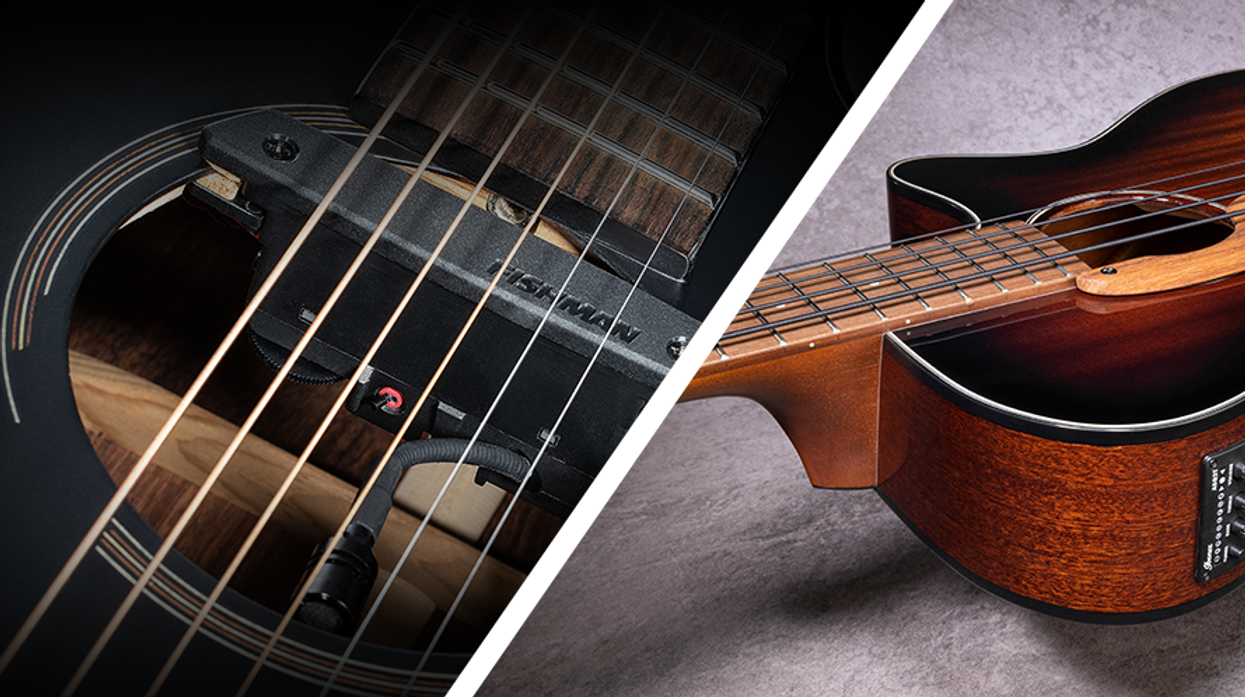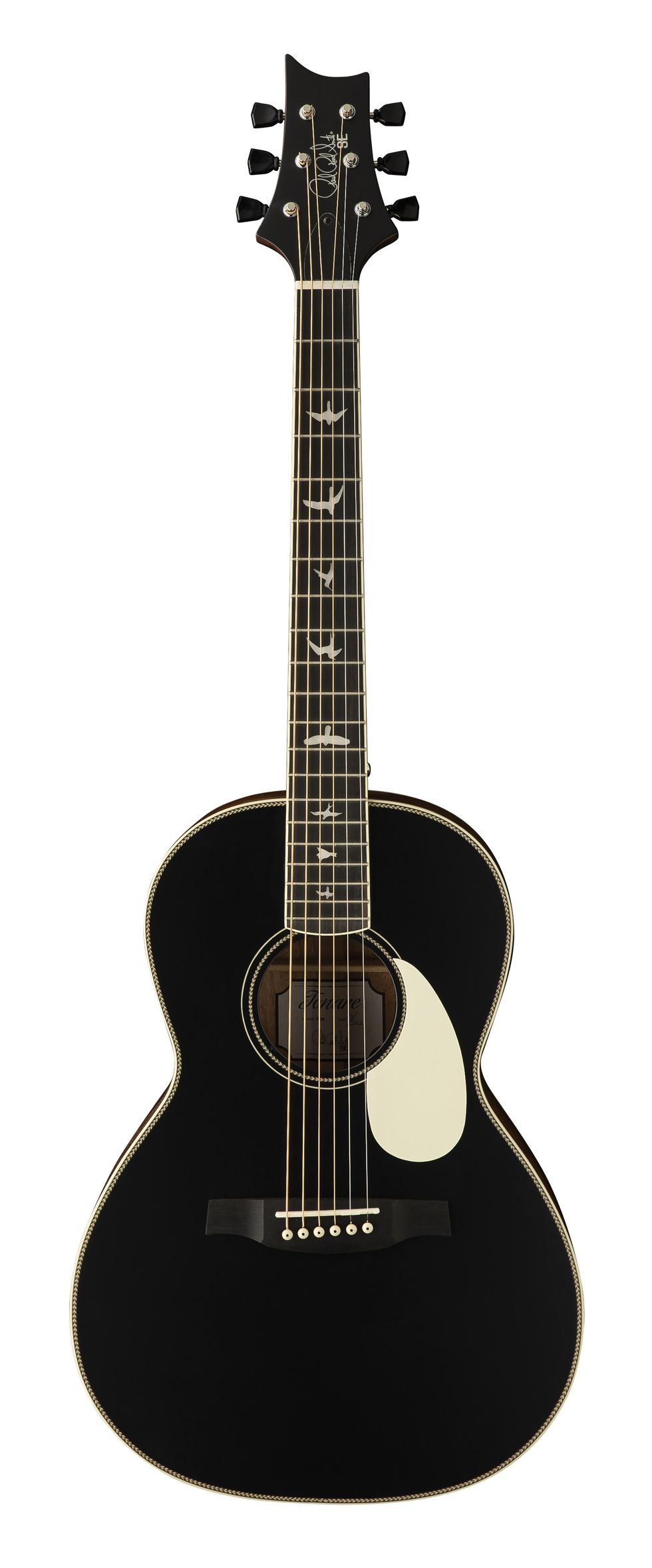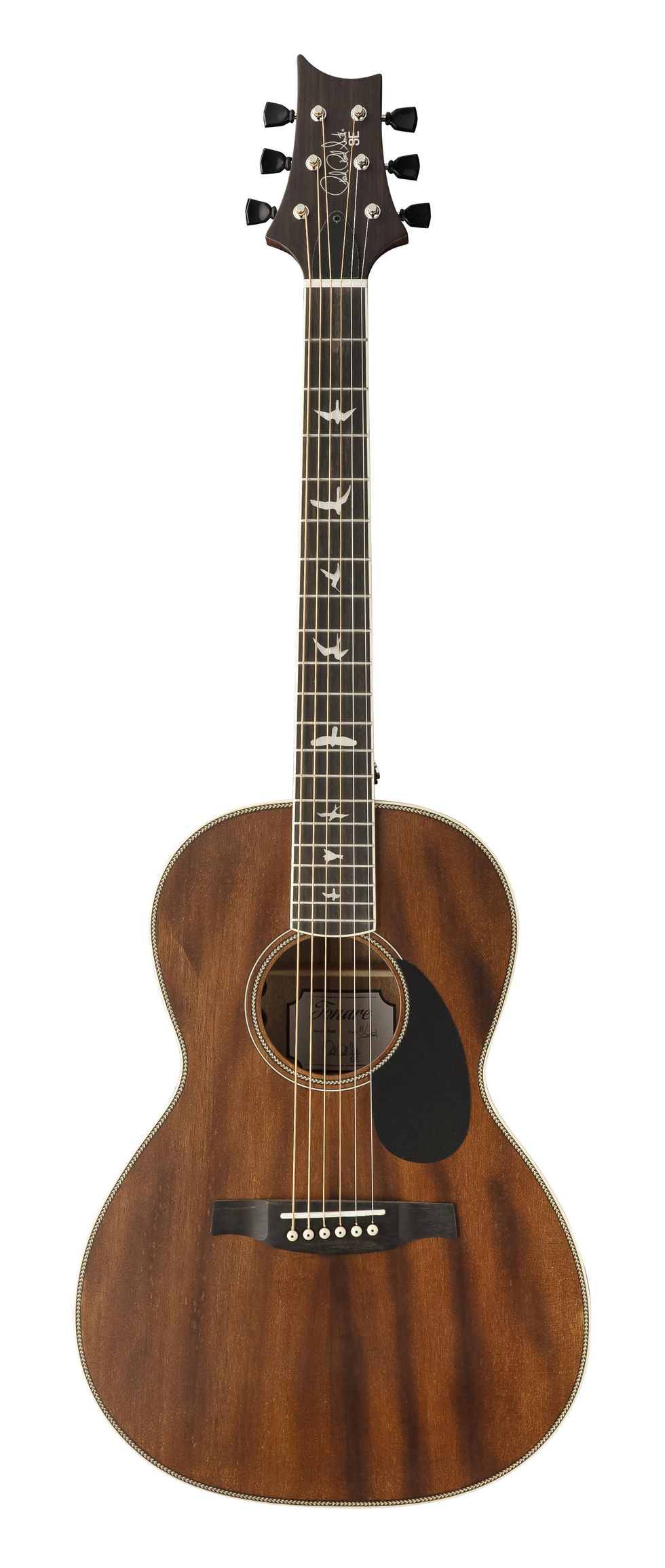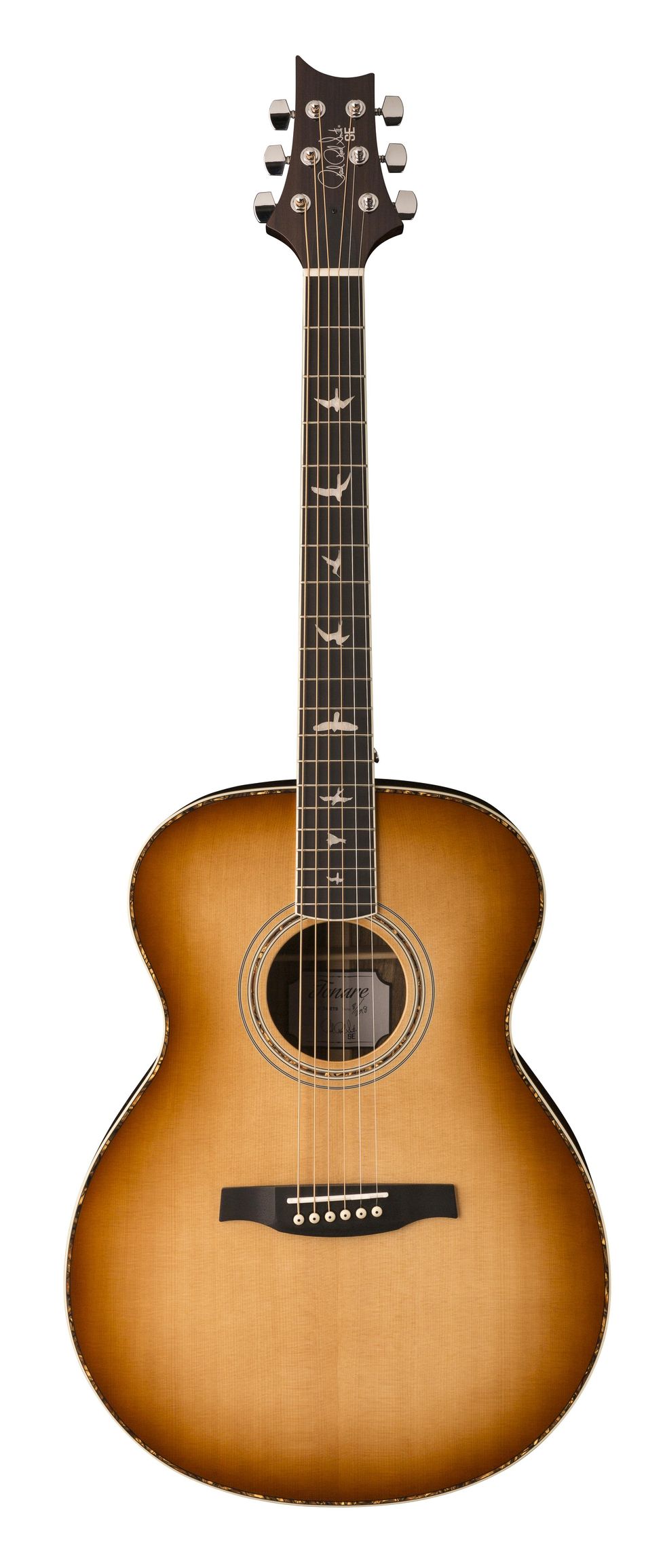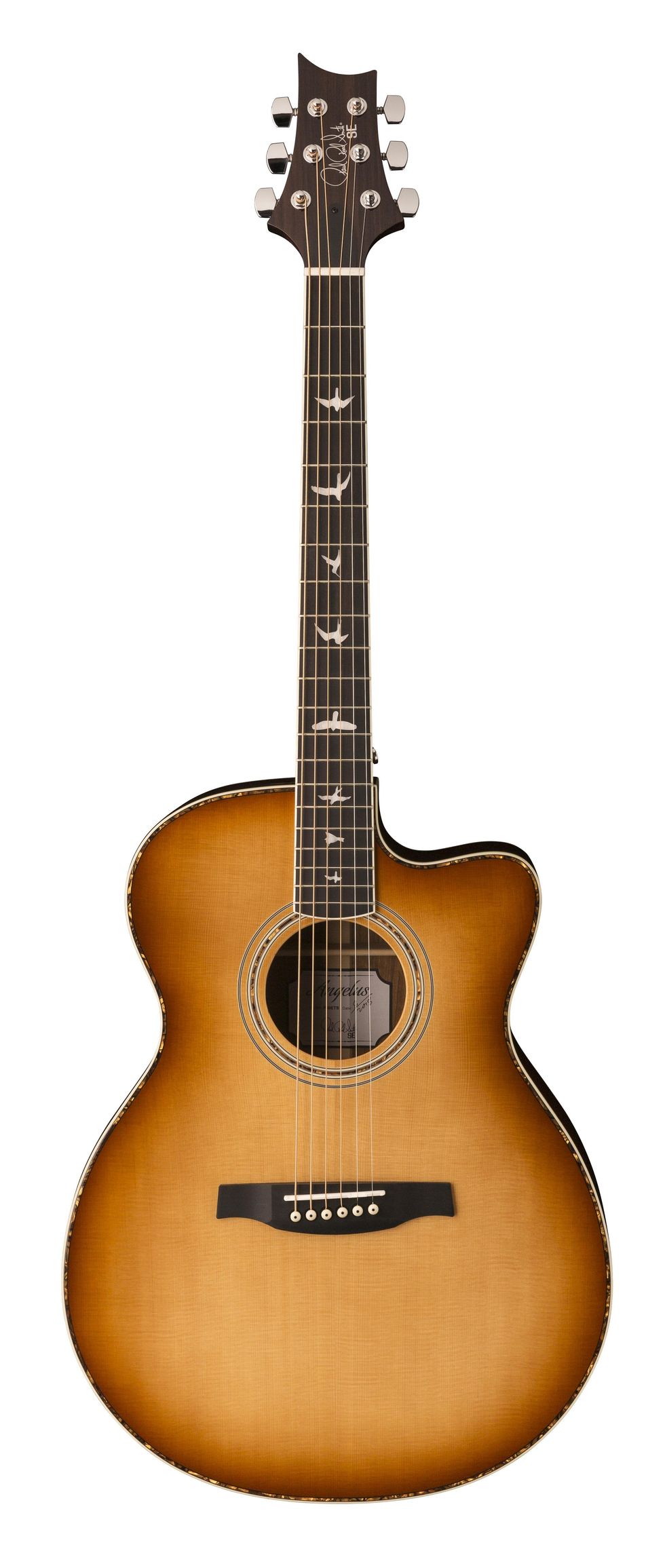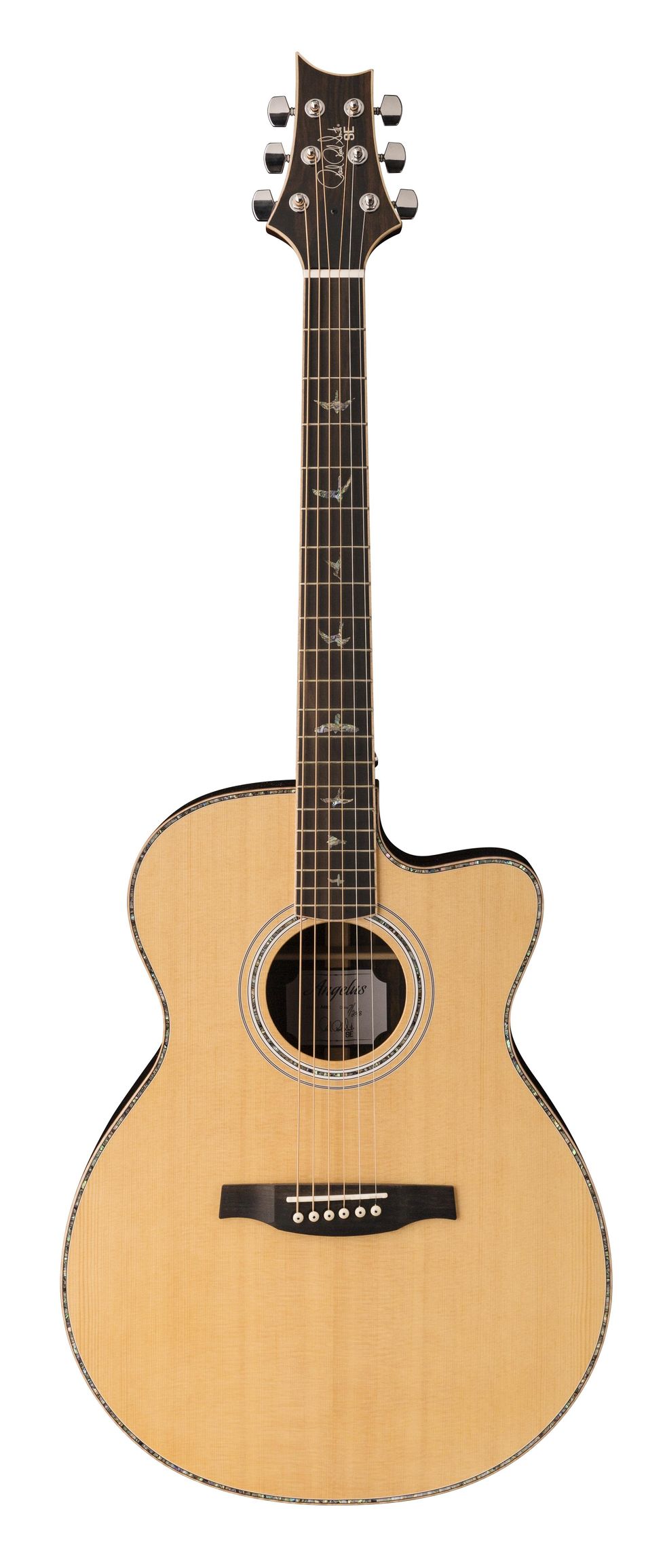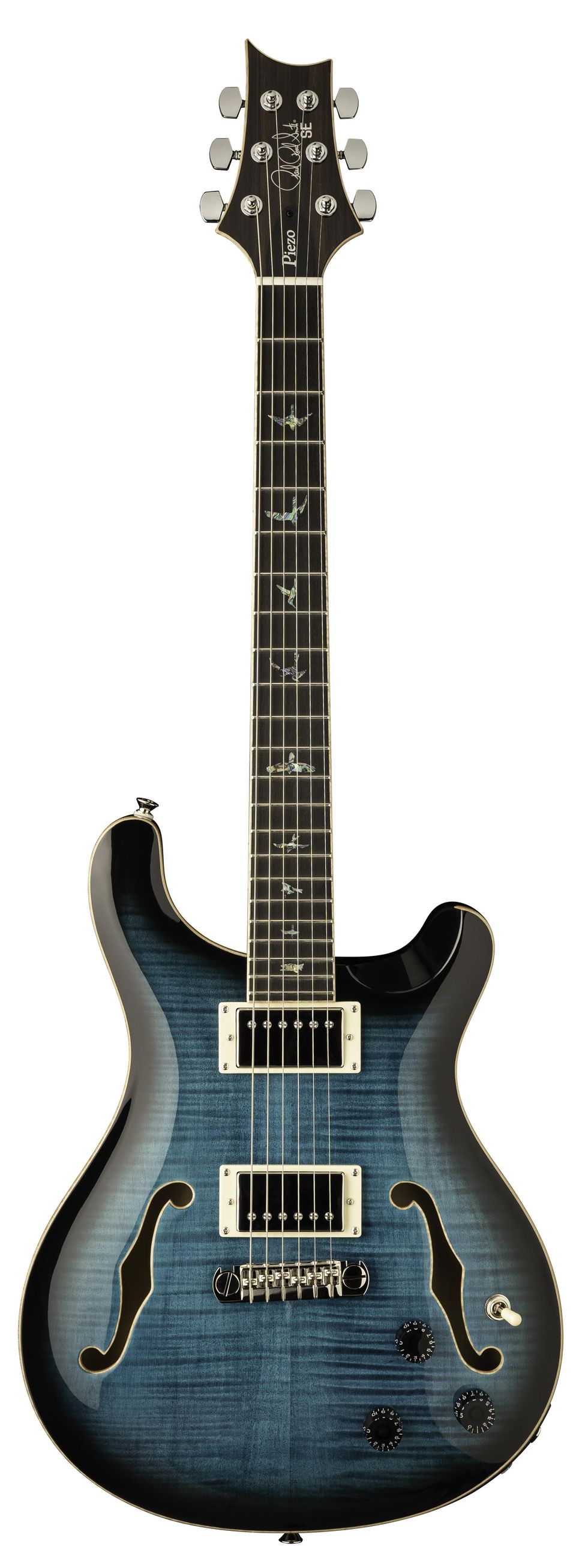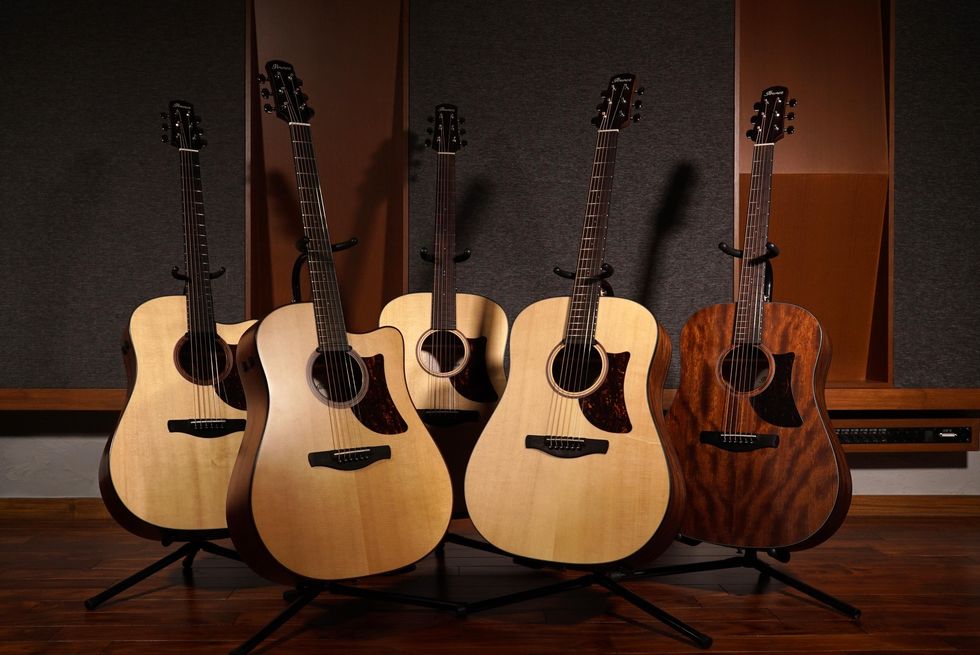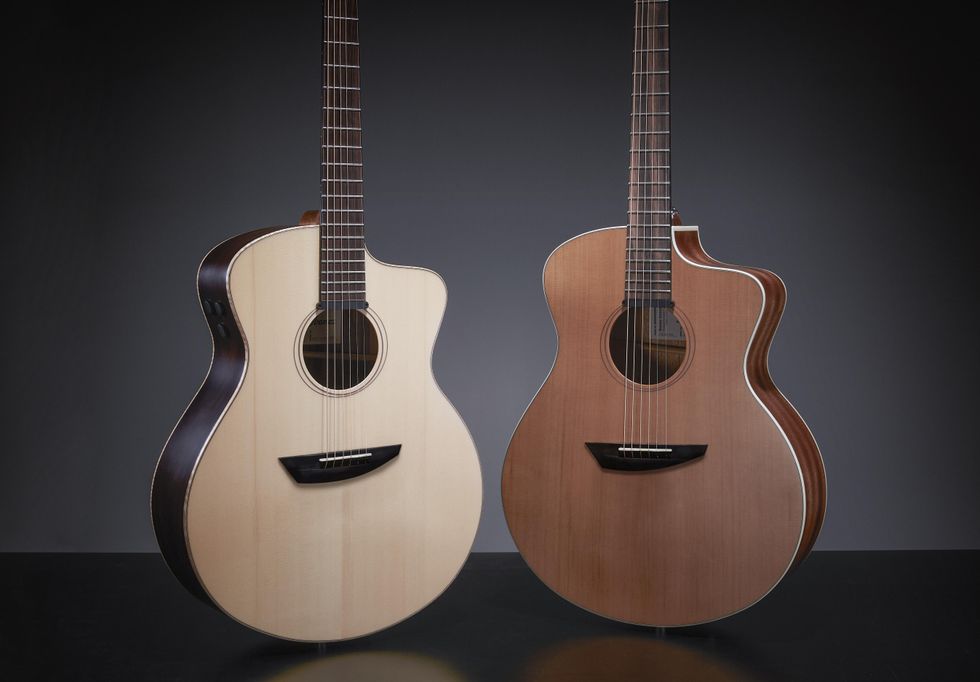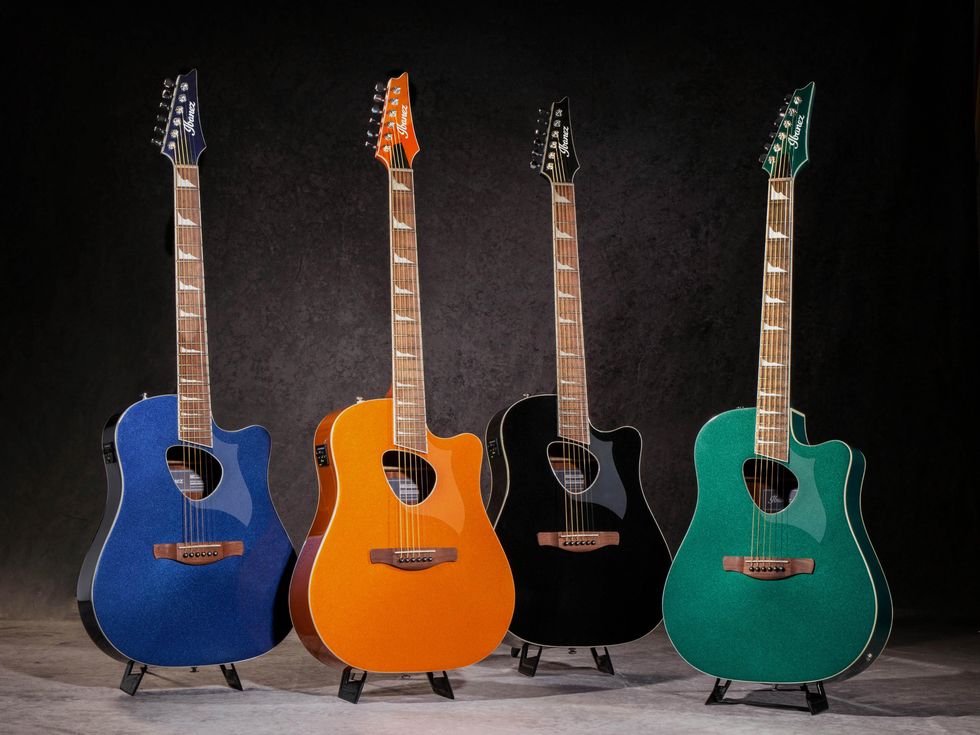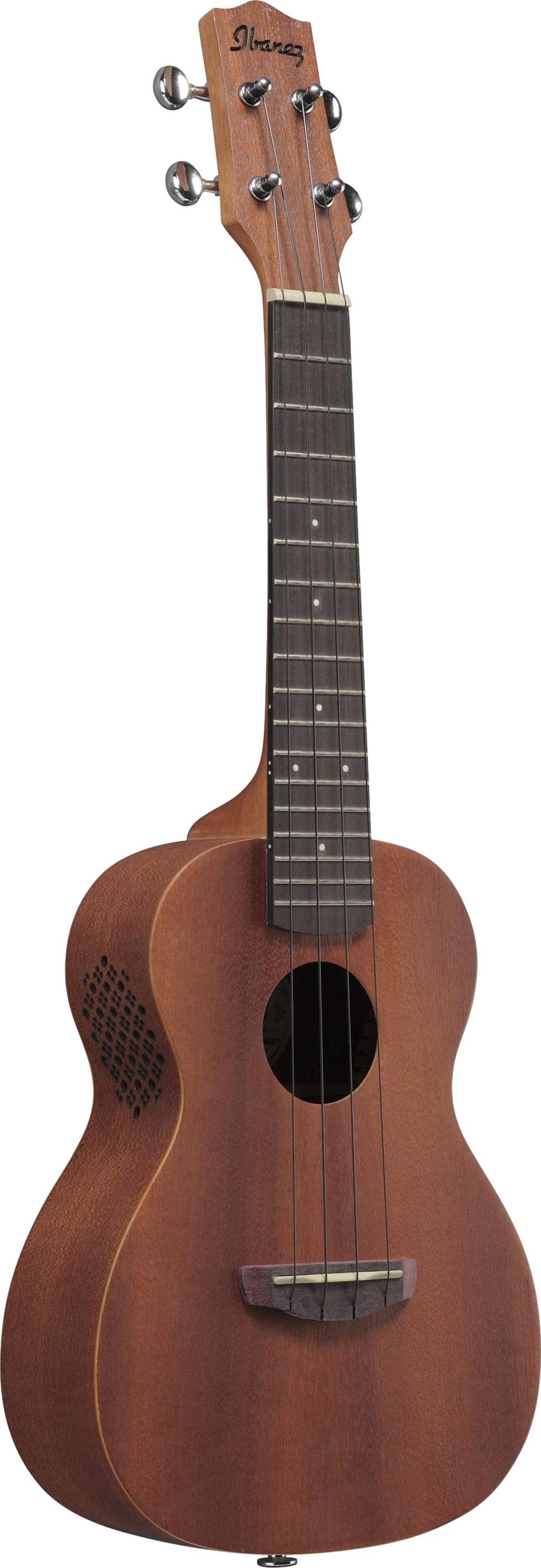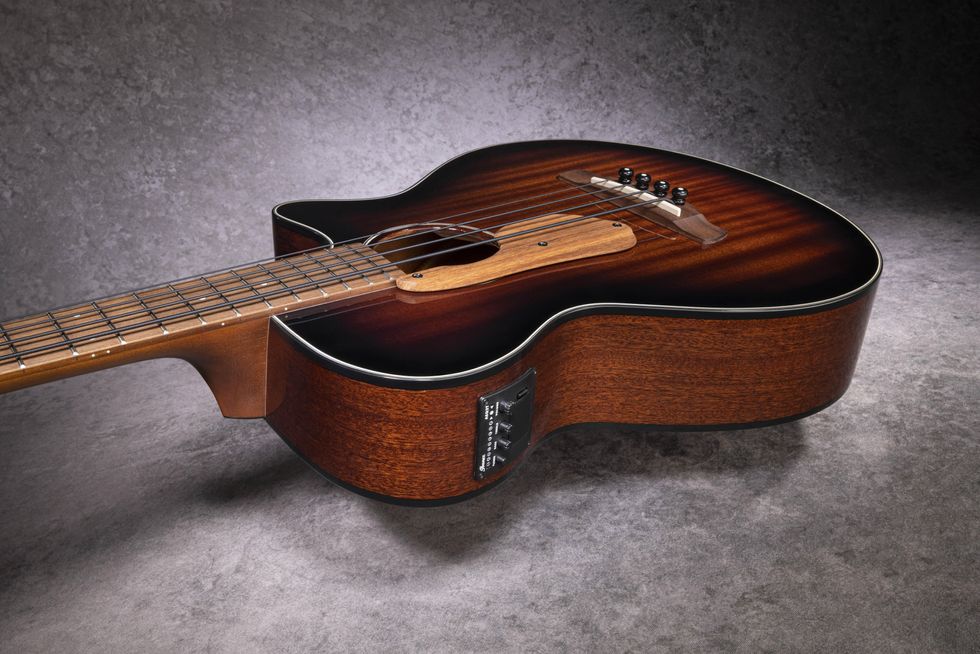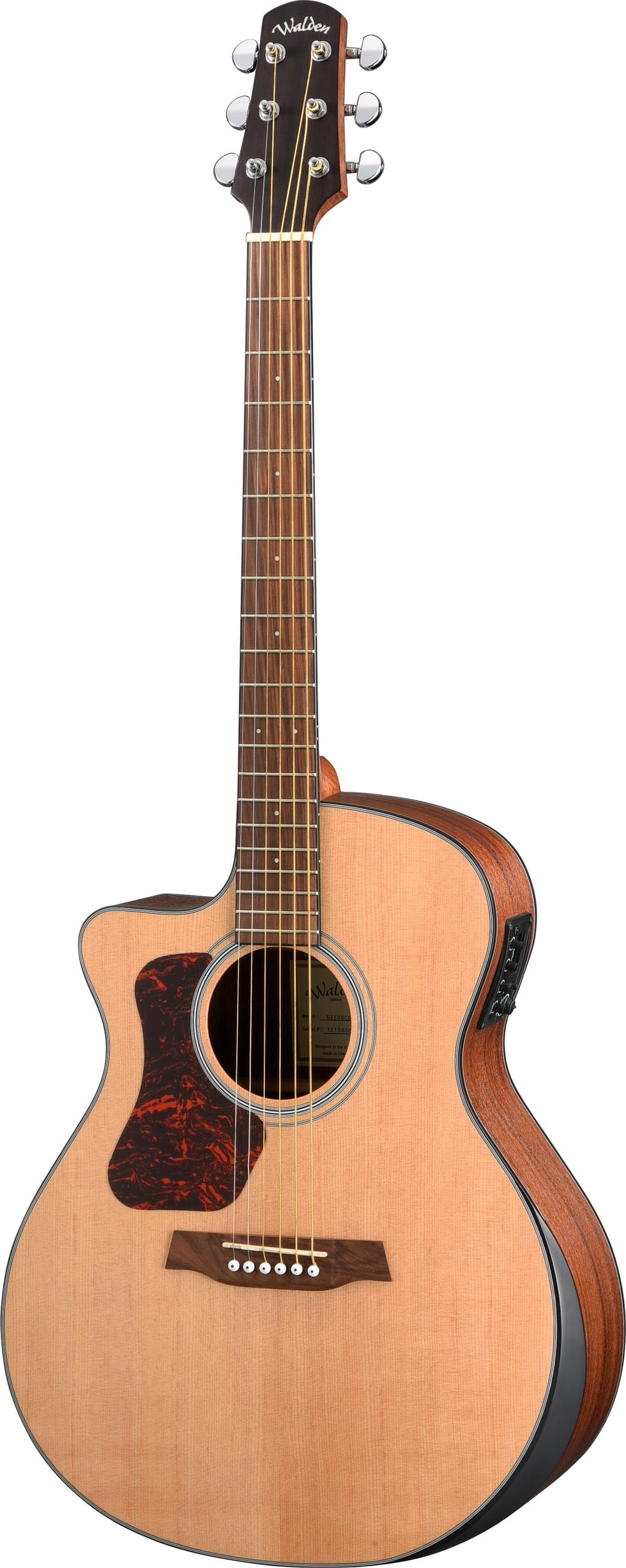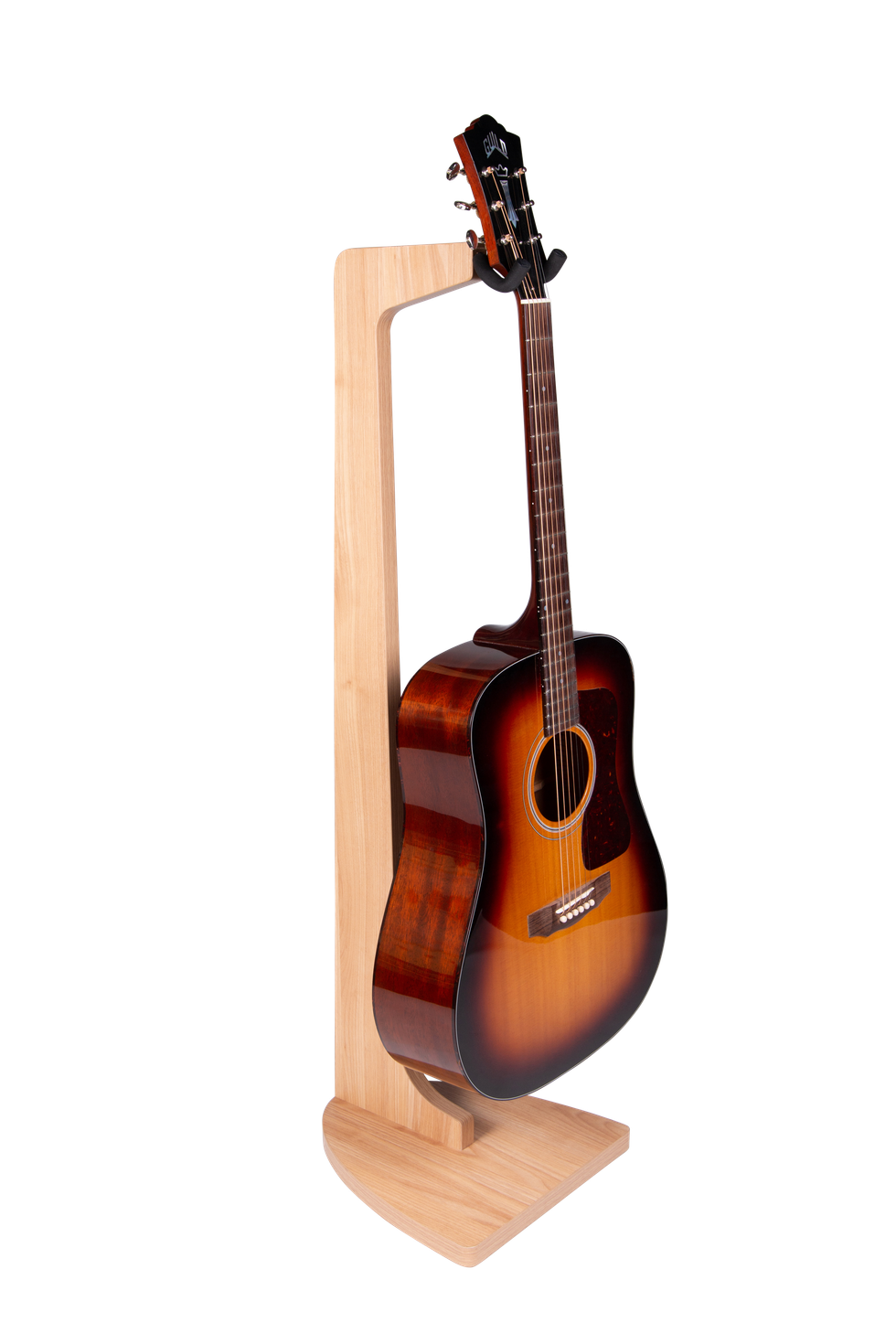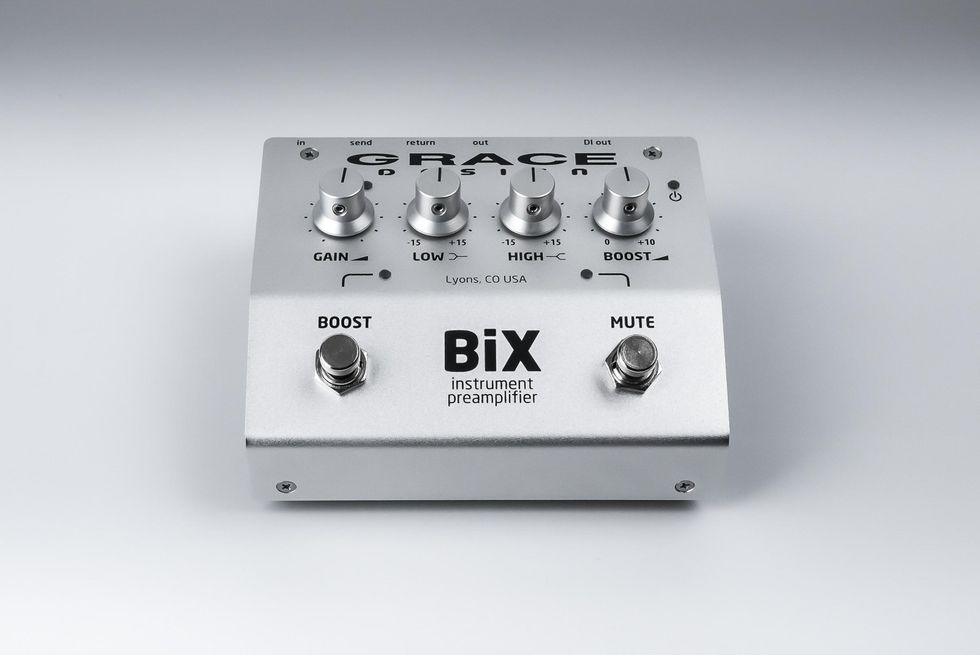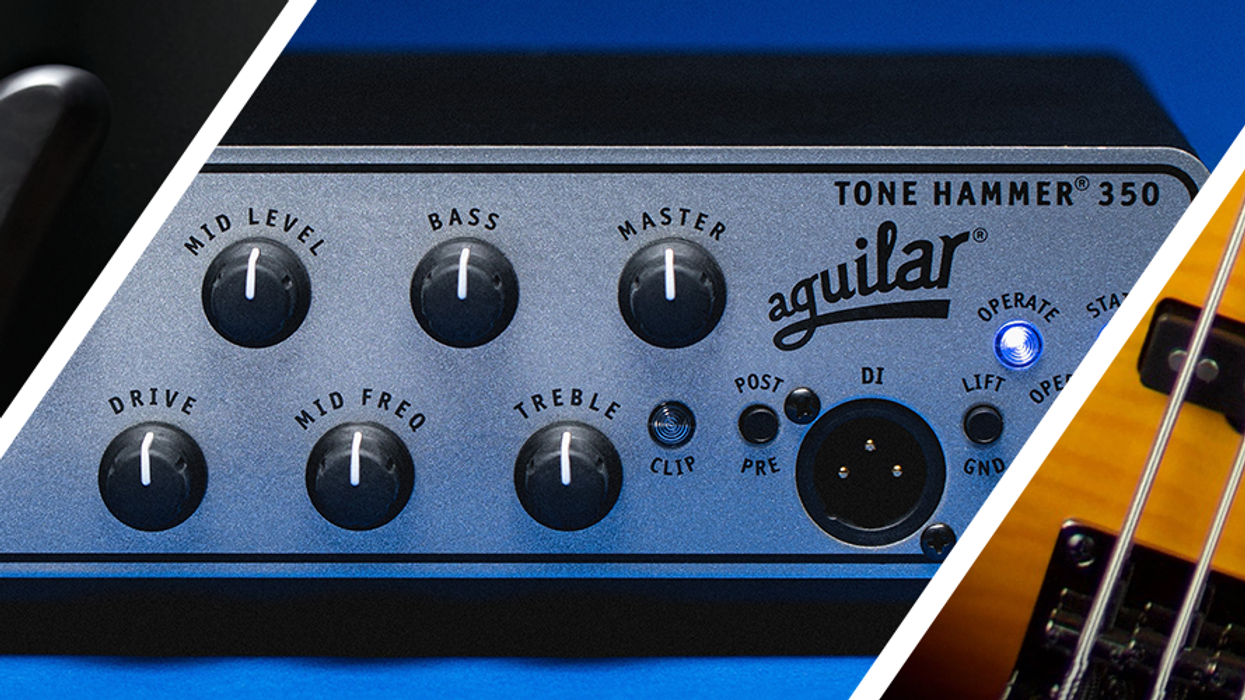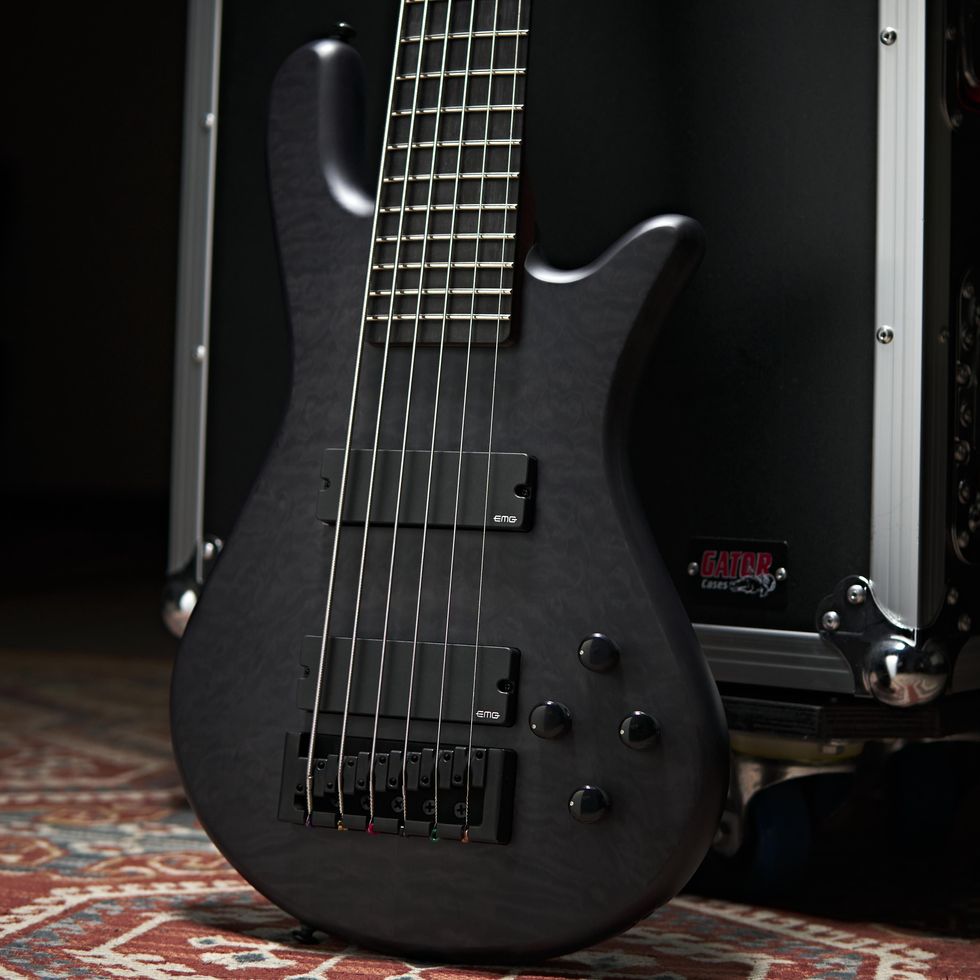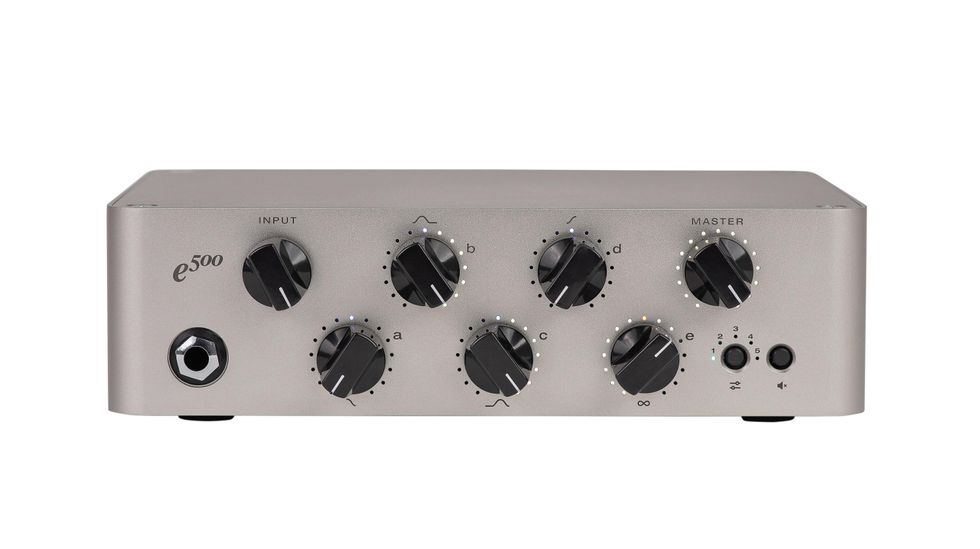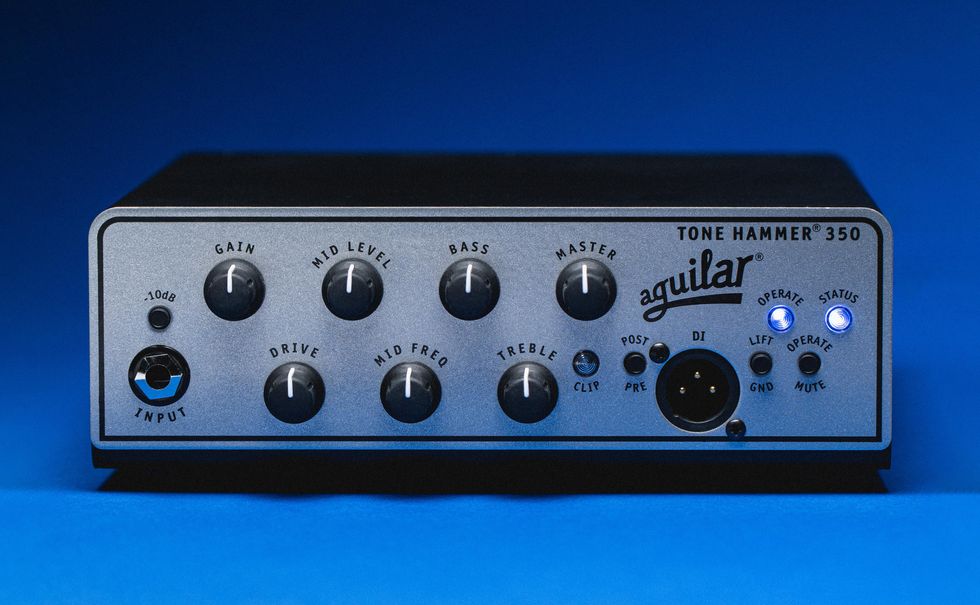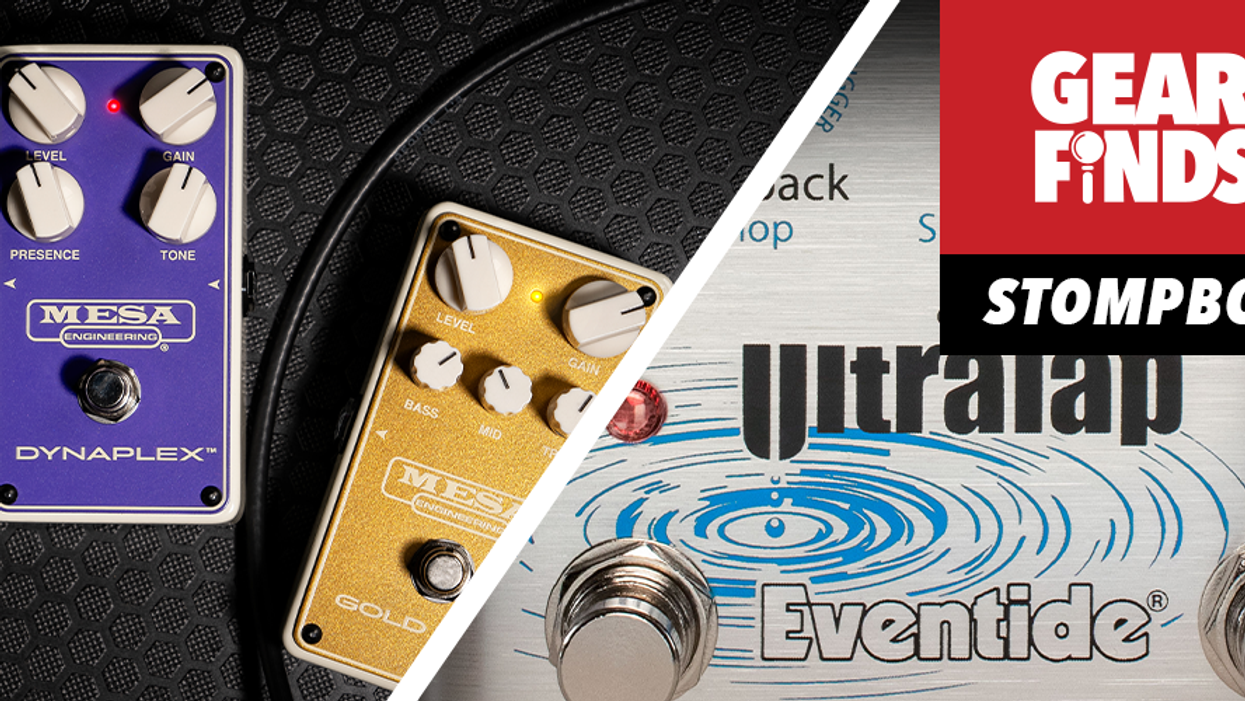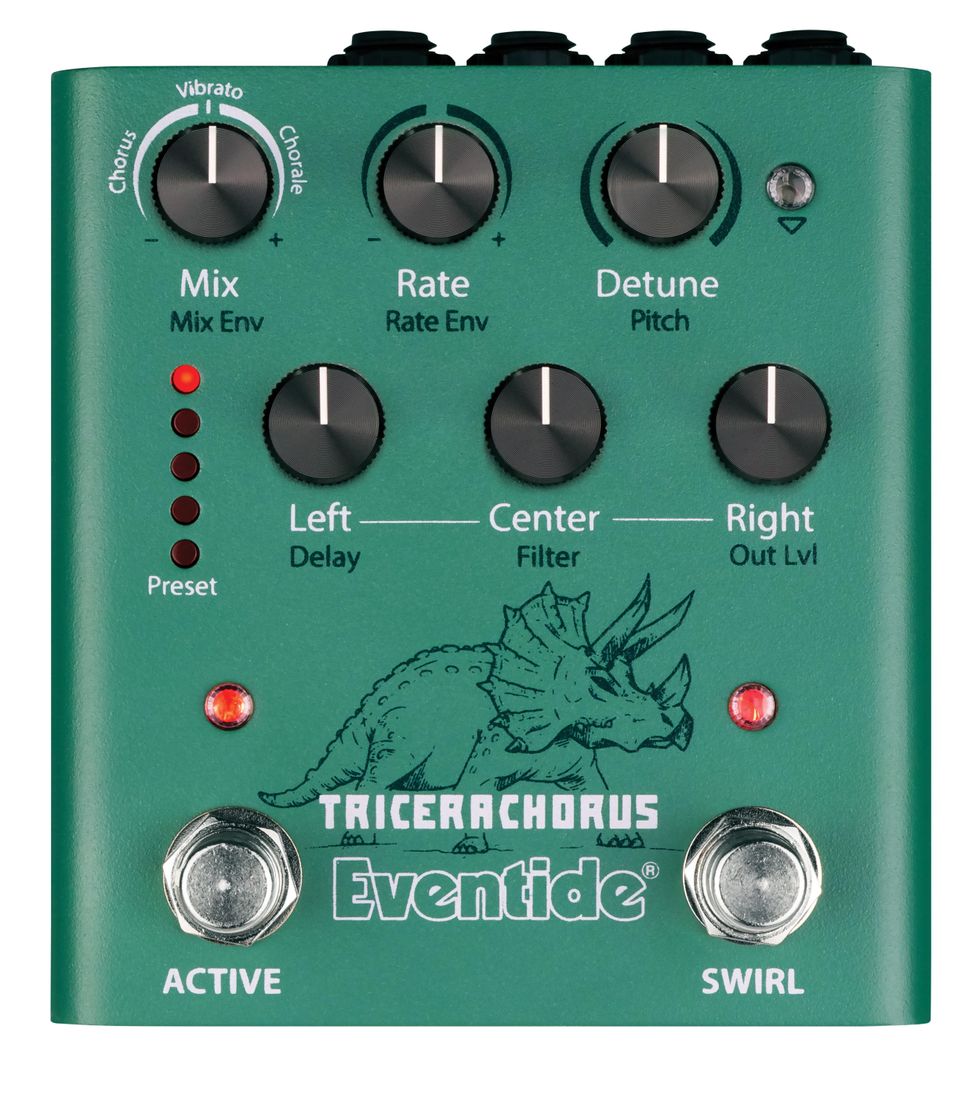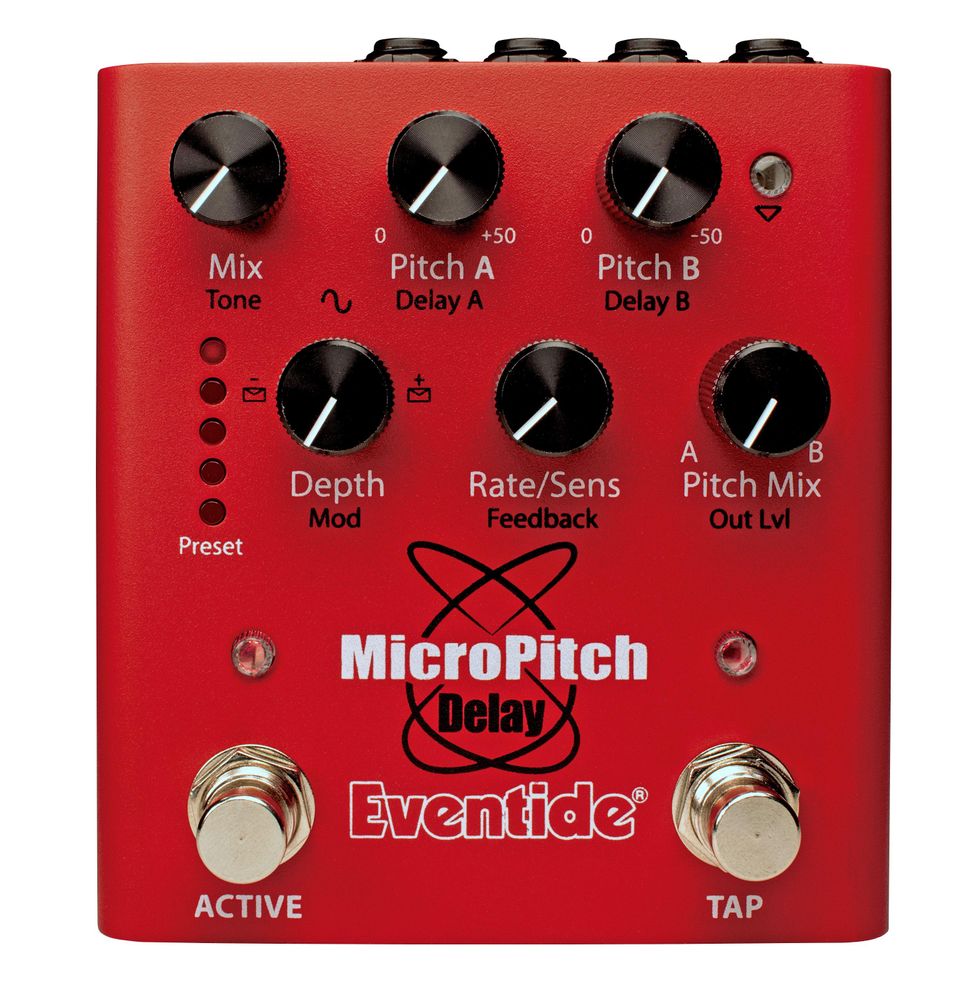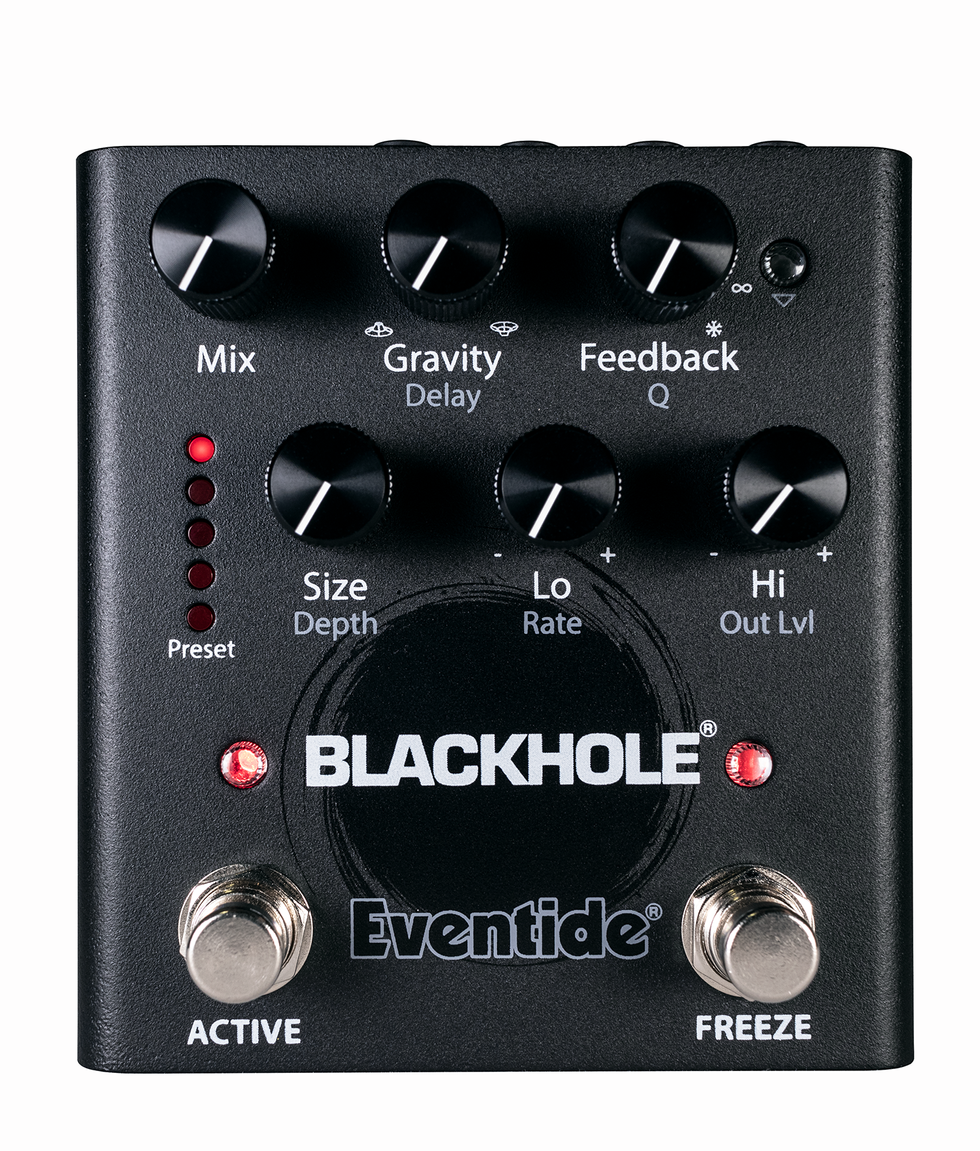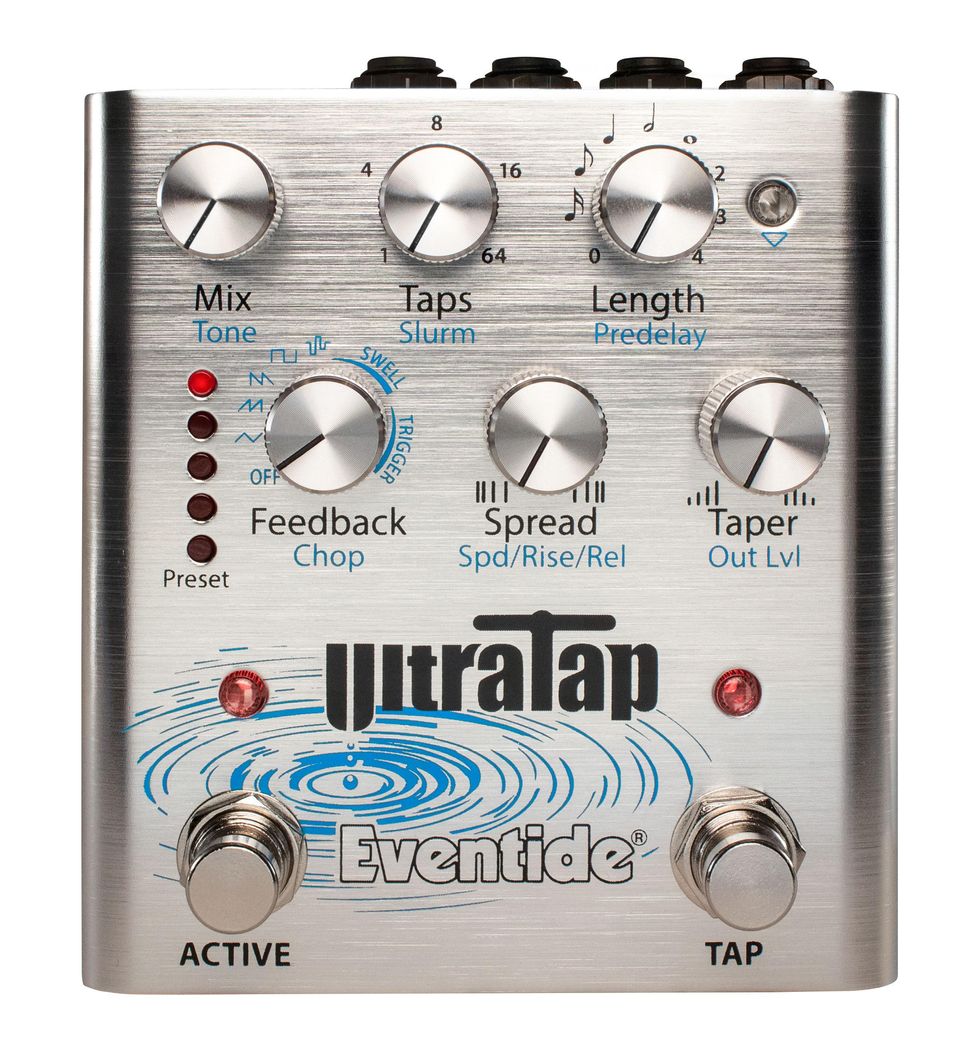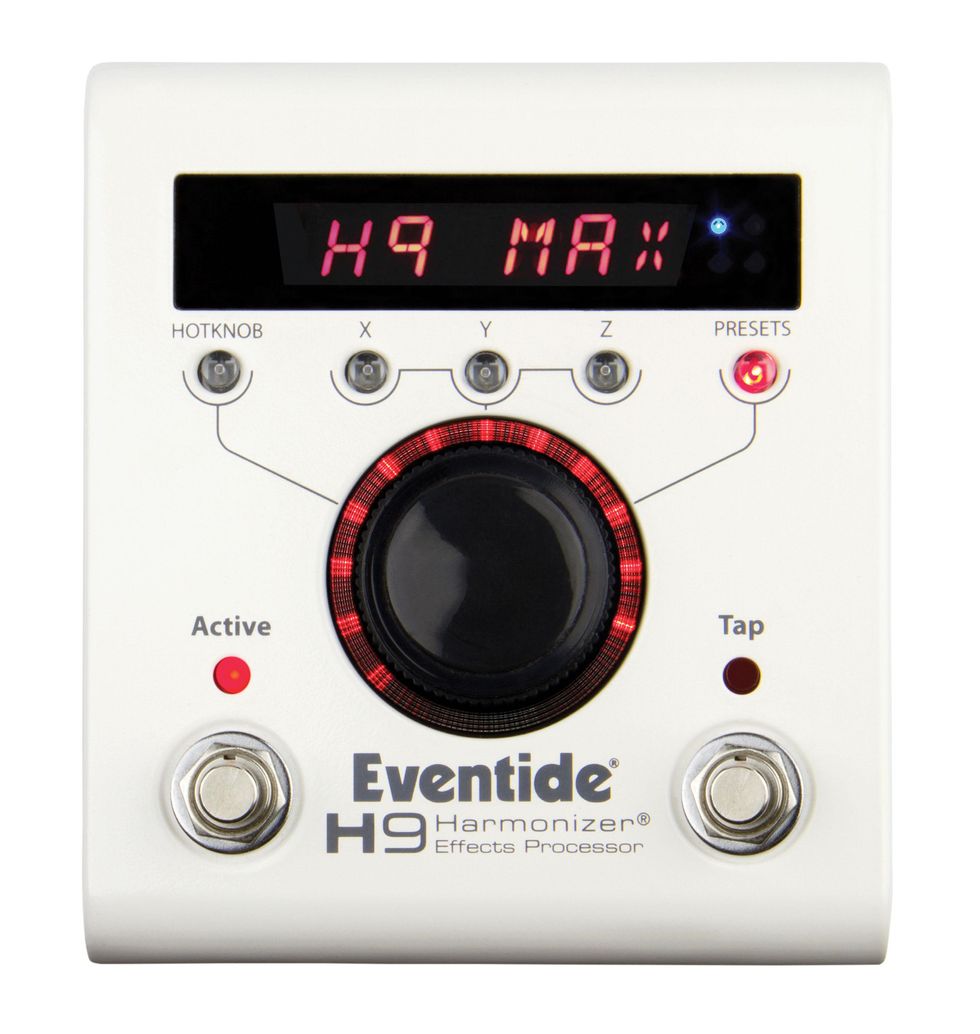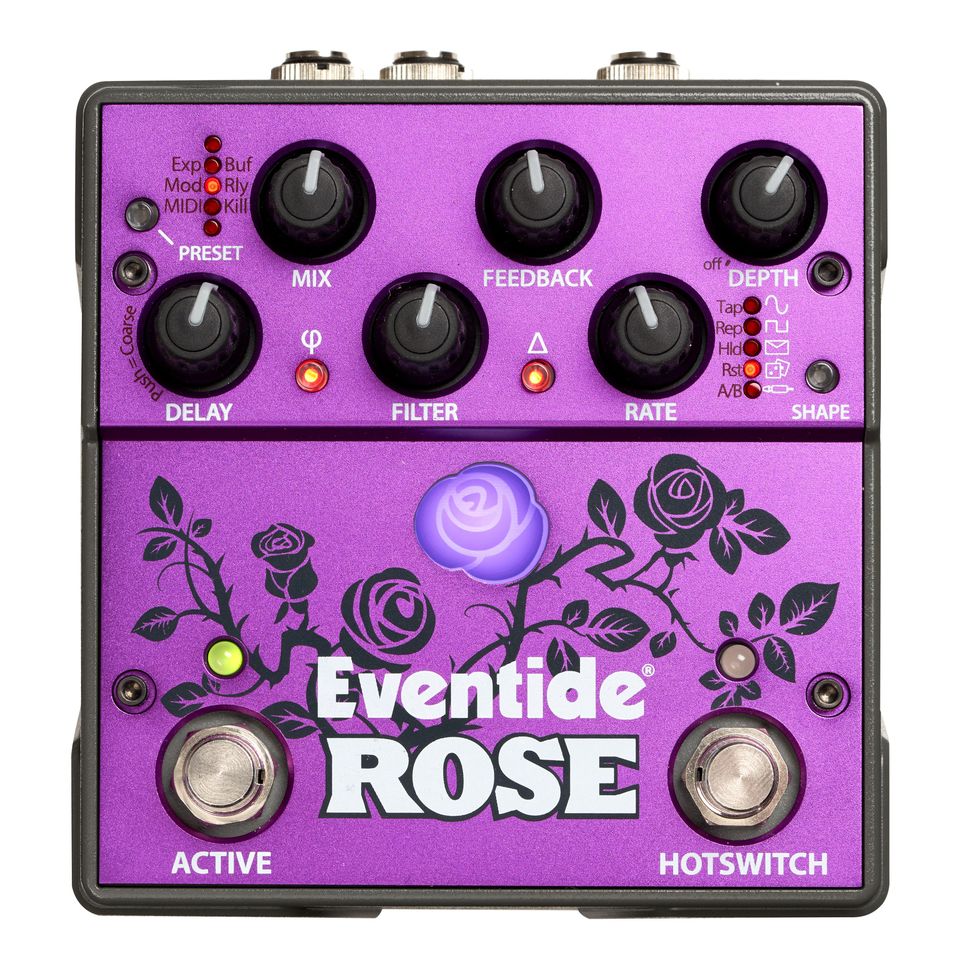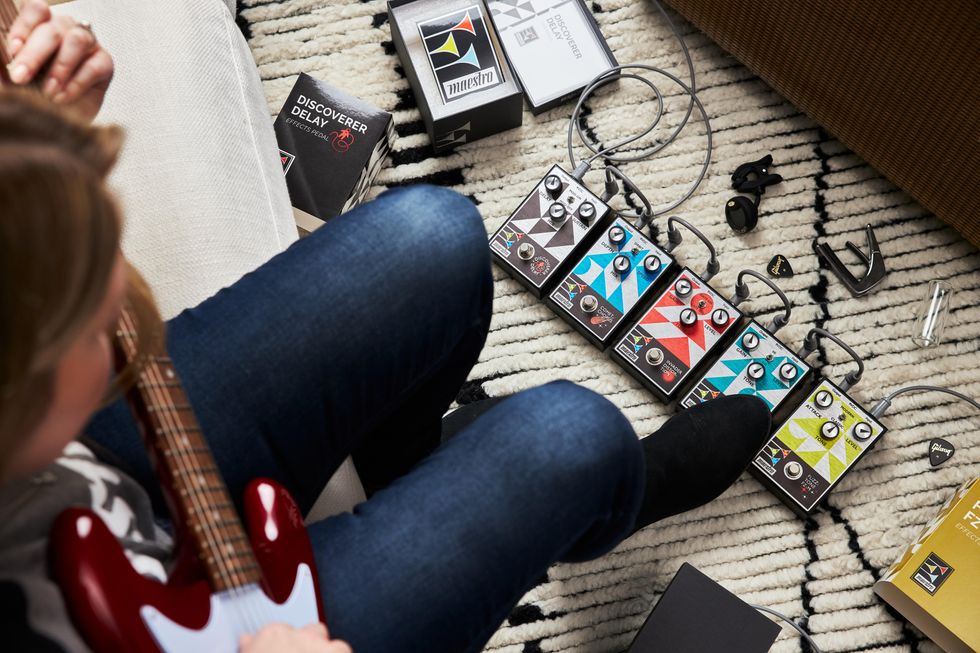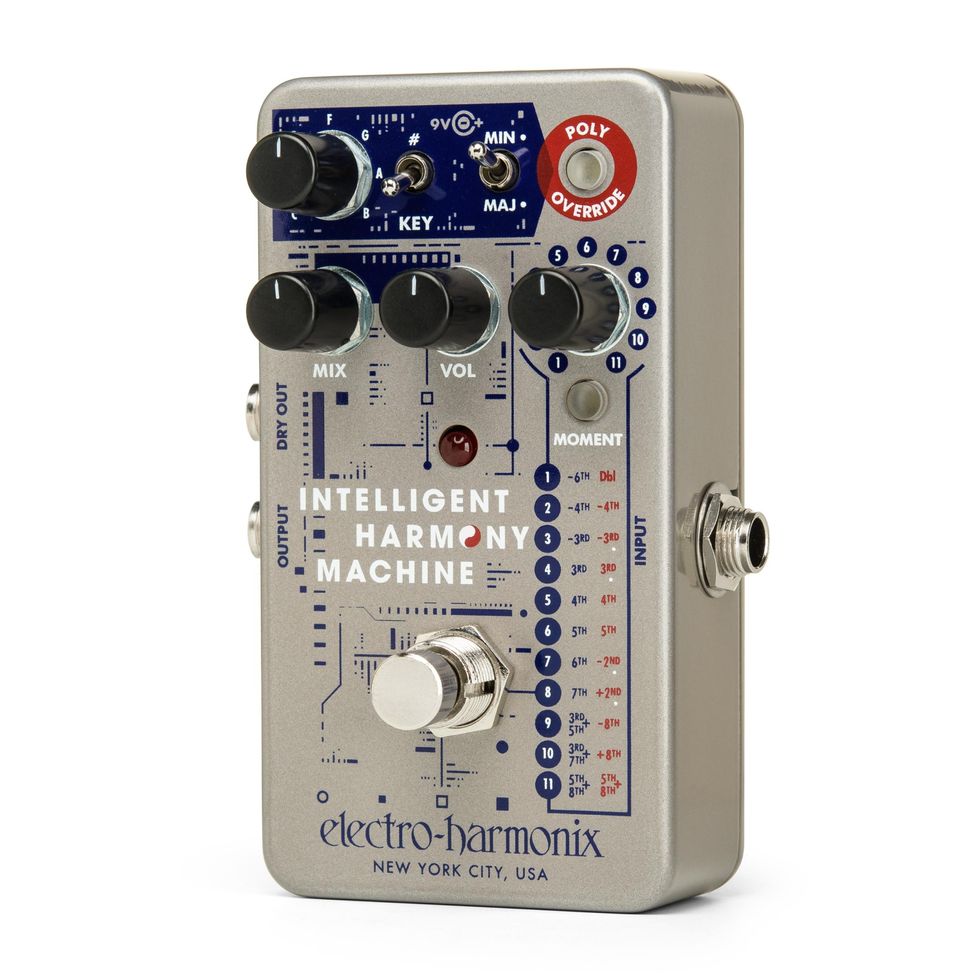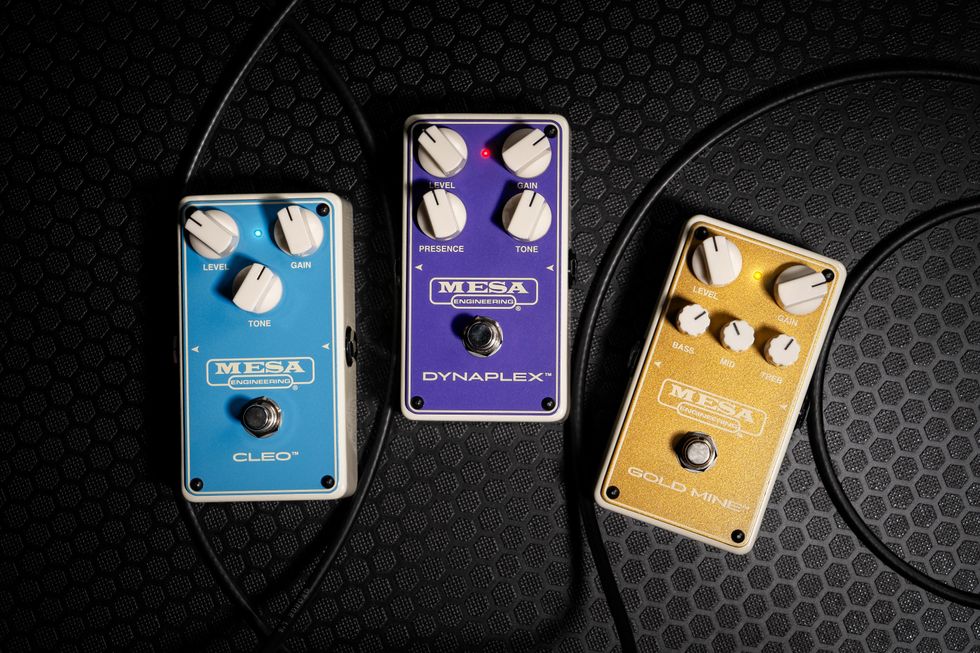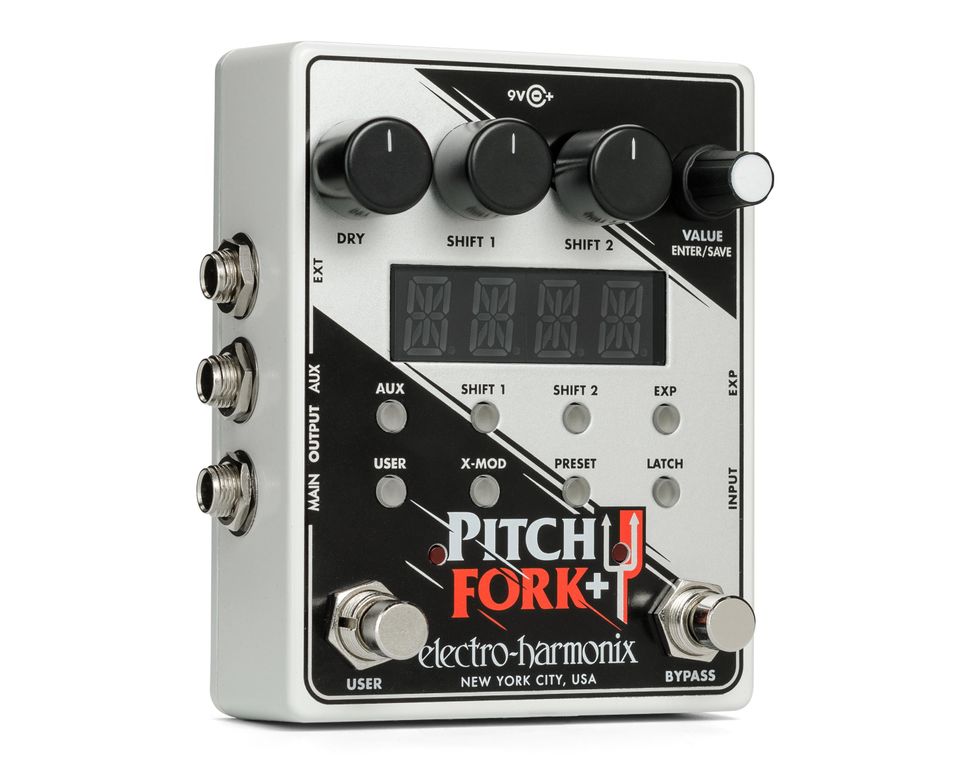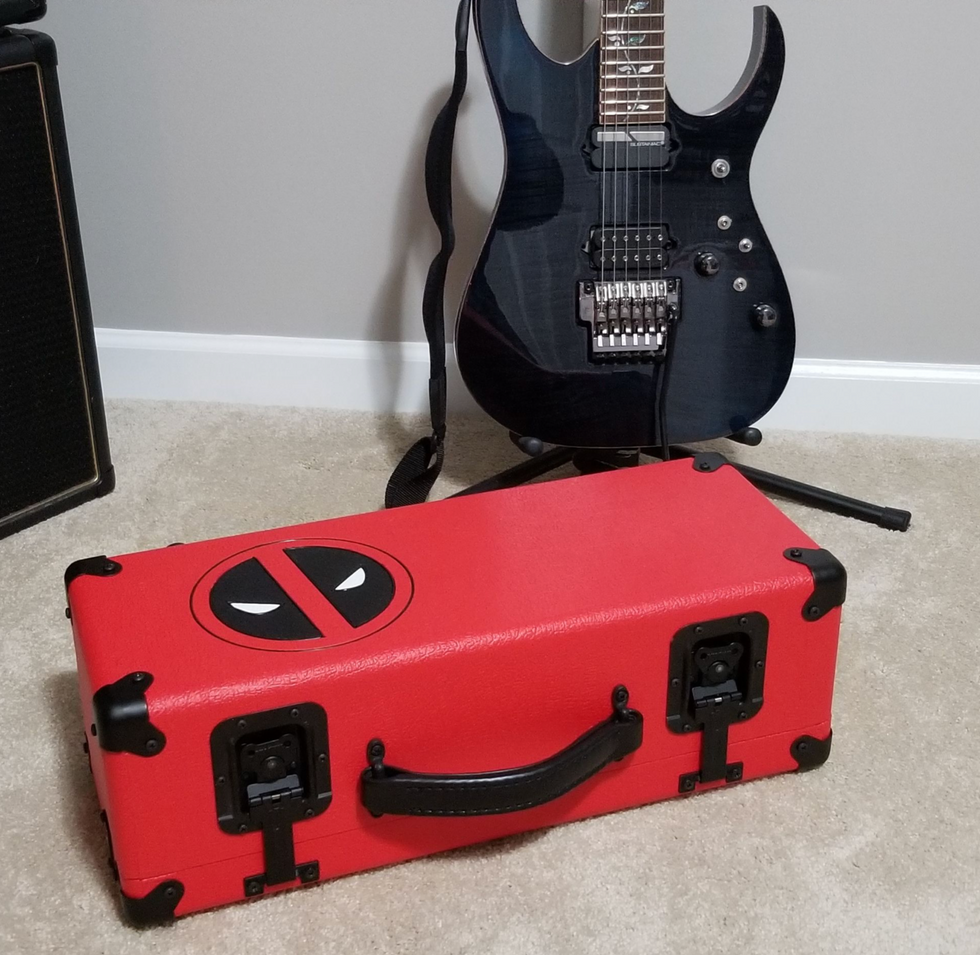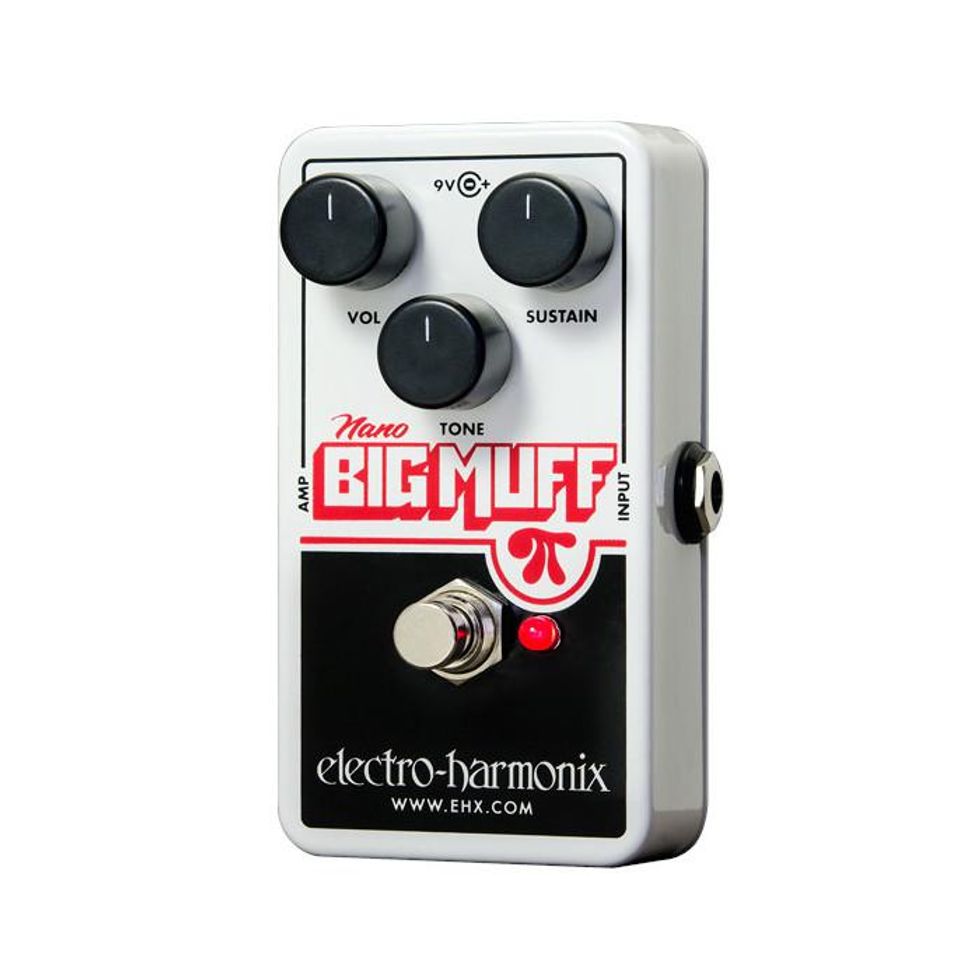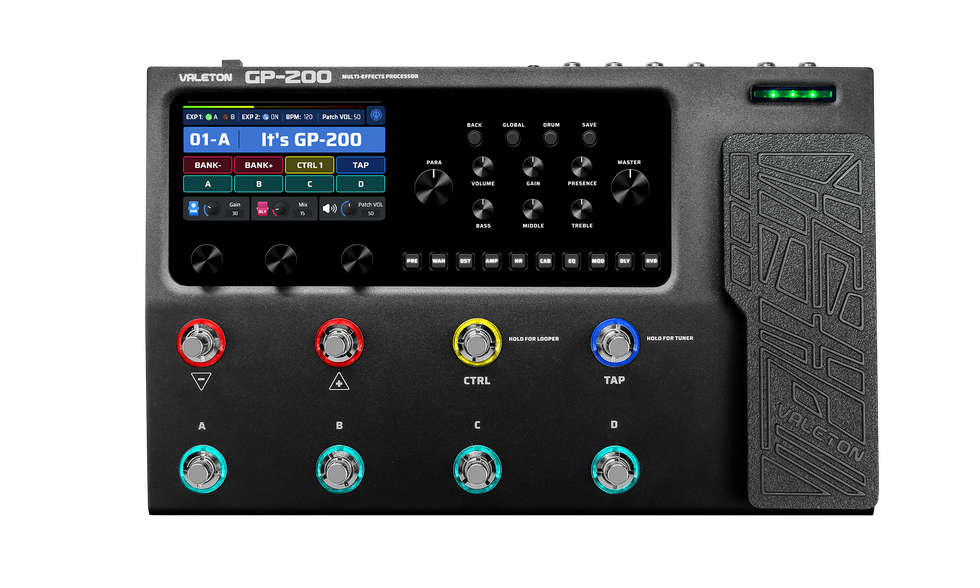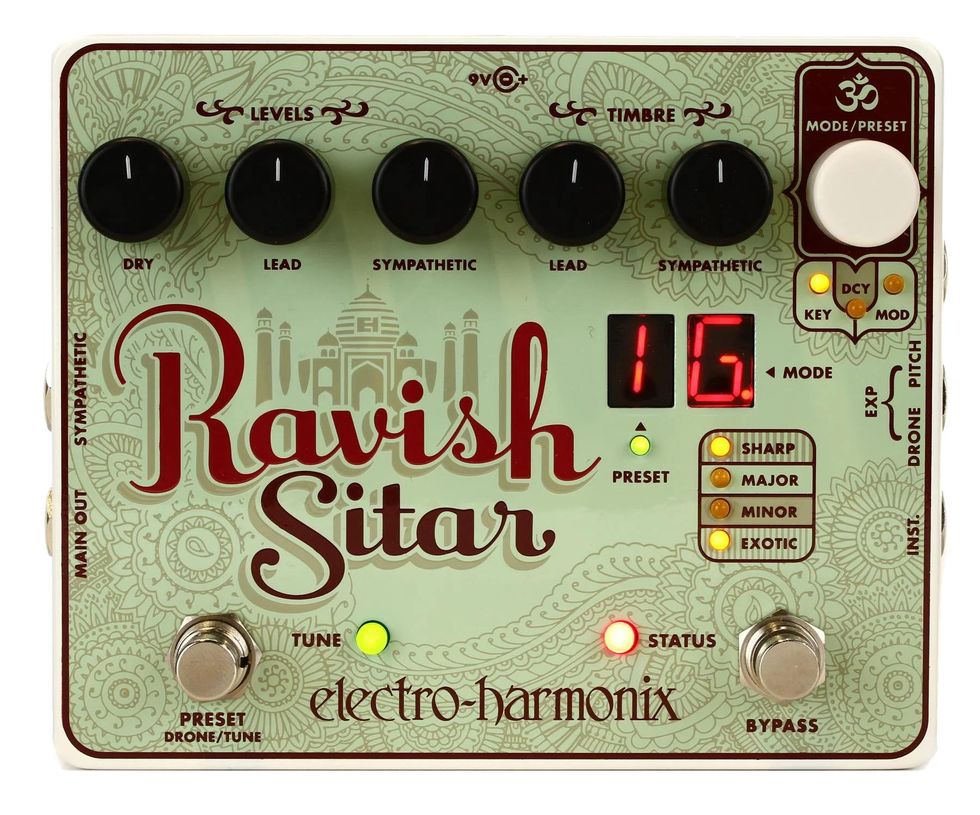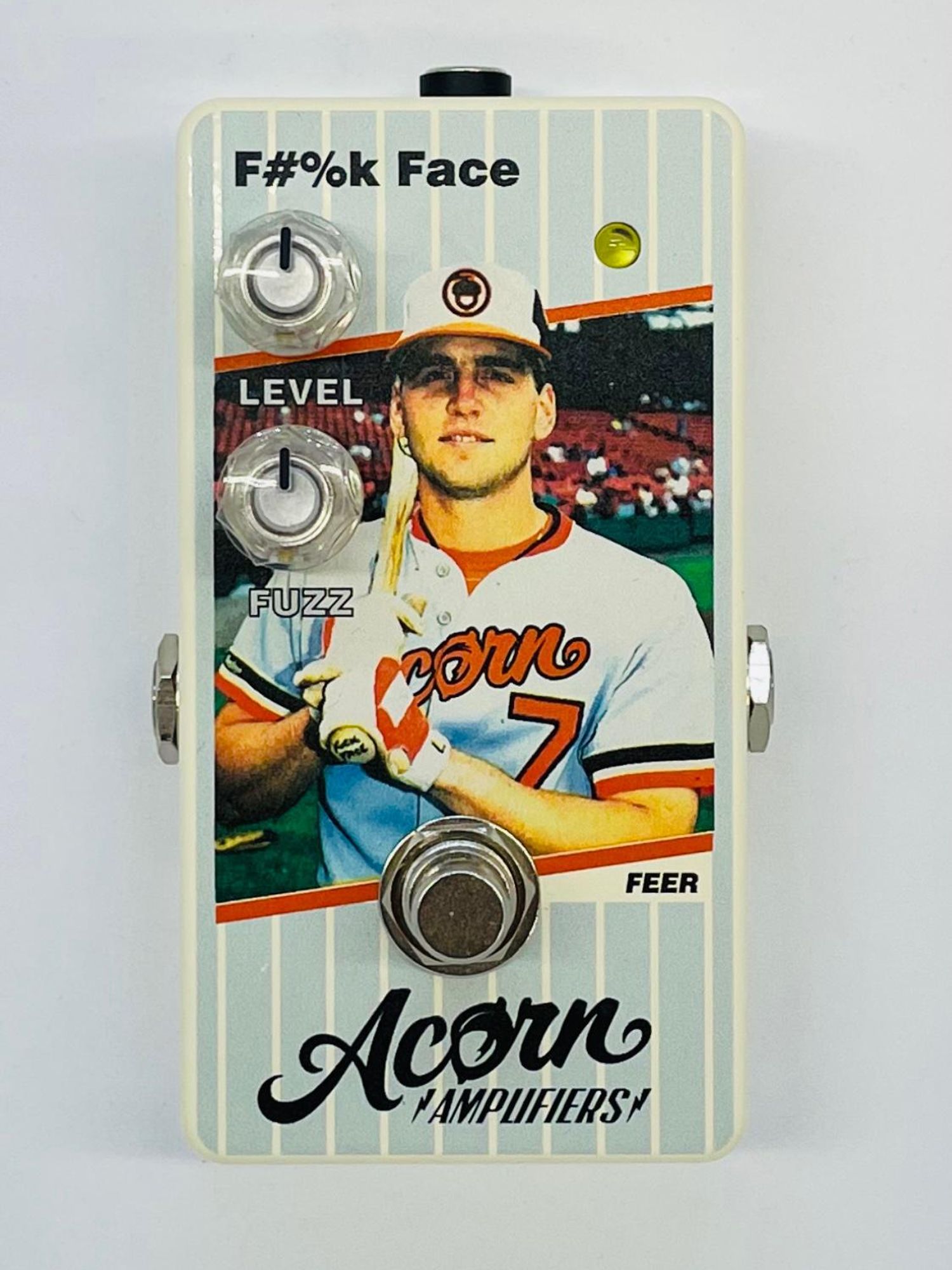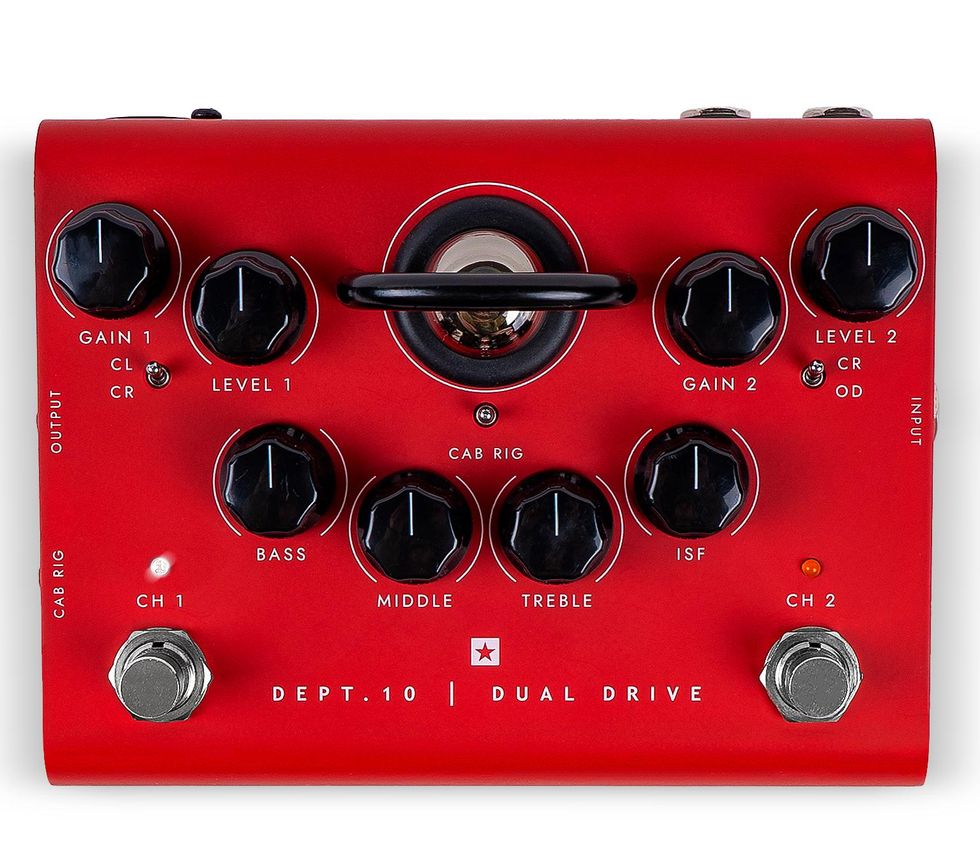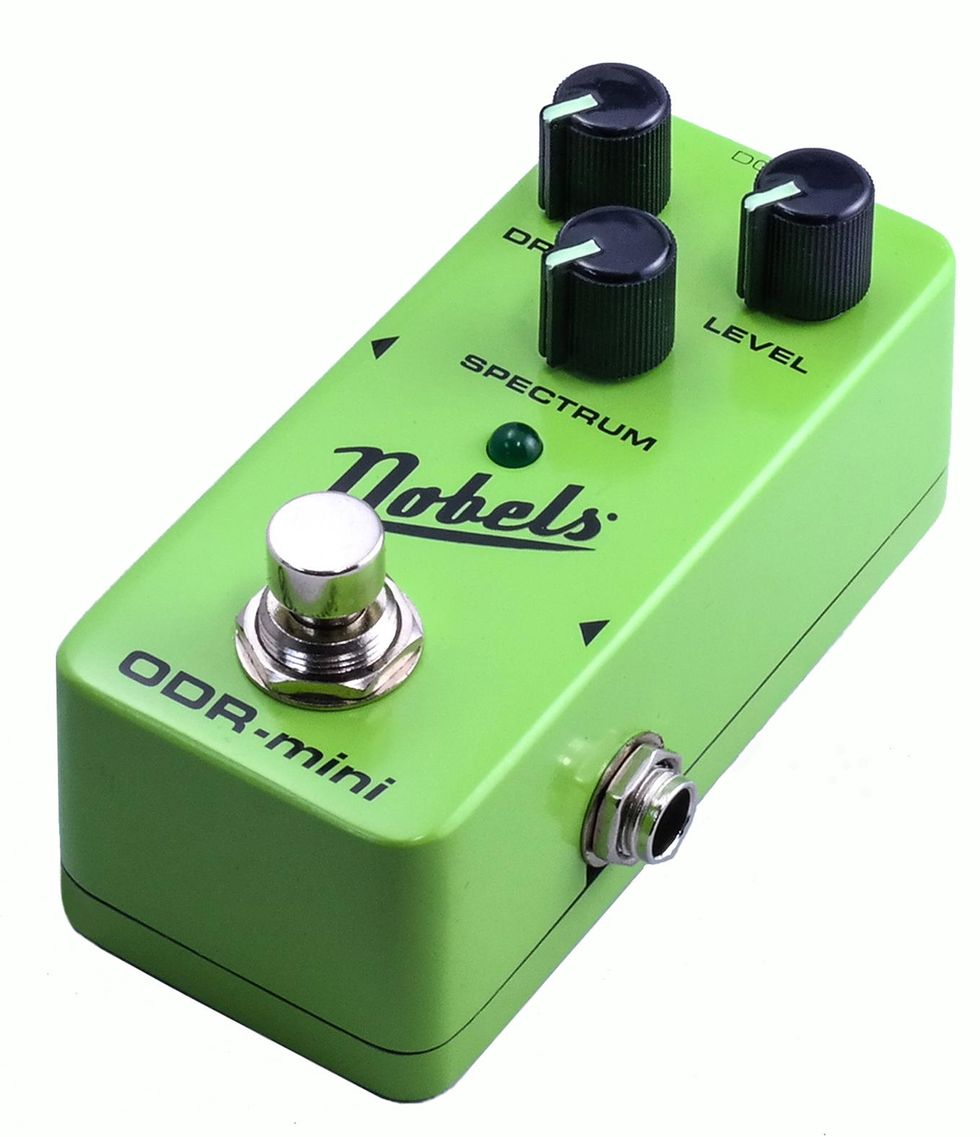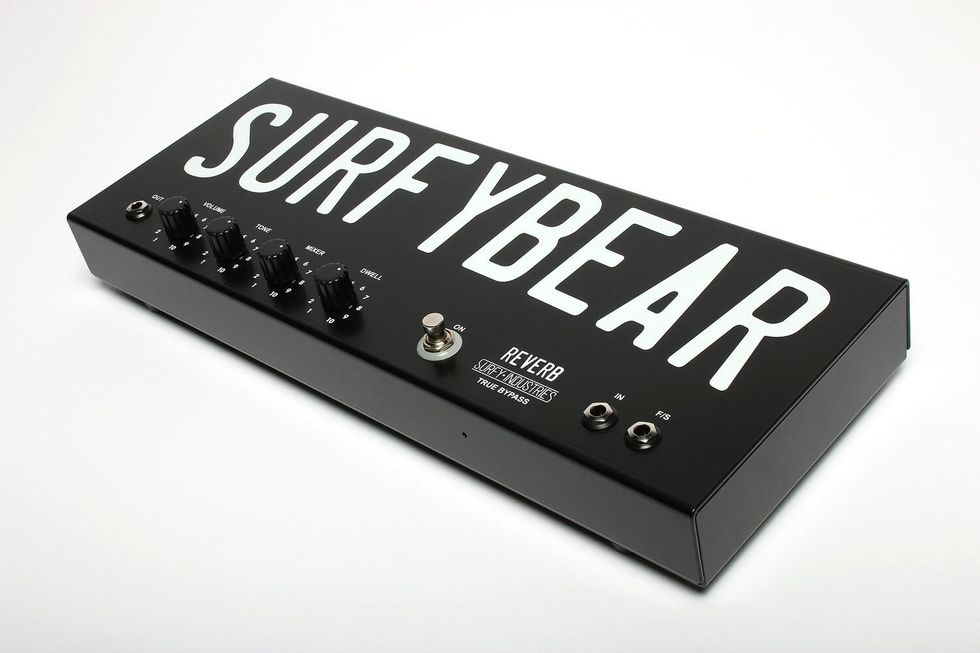Looking for more great gear for the guitar player in your life (yourself included!)? Check out this year's Holiday Gear Finds!
Maestro Orbit Phaser
The Maestro Orbit Phaser is a descendent of the very first phaser pedal ever produced - the legendary Maestro PS-1. This classic effect has been re-engineered and tailored to the needs of today’s players. The Maestro Orbit Phaser is designed to optimize all the character and vibe you expect from an all-analog phaser. Warm and smooth, the Maestro Orbit Phaser offers all the versatility needed to dial in the tastiest of phaser effects. Its two-position Mode switch gives you a choice of 4 or 6-stage phasing. The intuitive 3-knob control layout lets you quickly set the desired Width (the intensity of the phaser effect), Feedback (emphasizing the amount of vocal phase effect), and adjust the Rate (speed) of the phasing effect. The true bypass footswitch triggers the LED lights in the bugles in the Maestro logo when it’s on, so you’ll always know when the effect is active.
SE Standard 24-08
The PRS SE Standard 24-08 is a mahogany-body workhorse guitar with powerful humbucking and true single-coil tones in one instrument. Its PRS TCI “S” pickups are paired with a 3-way toggle switch and two mini-toggle coil split switches that individually split the humbuckers into true single coils for a total of eight pickup configurations. Players can enjoy two full octaves thanks to the 24-fret, 25” scale length rosewood fretboard and wide thin maple neck, and the PRS patented, molded tremolo gives players added flexibility and control over their playing. With sonic range and rock-solid reliability, the PRS SE Standard 24-08 will keep you playing without compromise.
Kaepo
Explore new guitar voicings and open tunings with the new Kaepo™, Gruv Gear's creative tuning guitar capo! Removable fretting pads can be set to any combination for nearly unlimited possibilities. Move the Kaepo quickly up and down the fretboard like a regular capo, without any tedious clamping or setup. Adjust the 7 individual fretting pads without any tools. Kaepo is also compatible with Gruv Gear's new Twistune™ rechargeable color tuner, for quick and convenient tuning on-the-fly. Works with most 6- and 7-string acoustic and electric guitars.
The Gruv Gear Kaepo is available on its own or bundled with the new Twistune tuner. Combine two or more Kaepos to open up even more tuning creativity!
MONO FlyBy Ultra Backpack
The FlyBy Ultra comes packed with sleek upgrades while keeping the break-away laptop bag design of the original FlyBy. New features include an ultra-tough 1680D Ballistic Nylon exterior, reflective trim for visibility, waterproof zipper tape and new, larger compartments. The FlyBy Ultra also brings ergonomics to the next level with a luggage pass-through, and upgraded straps.
This is the tour pack that DJs and digital creators around the world carry and swear by. Get ready for the ultimate creator experience.
JBL 3 Series Studio Monitors
JBL 3 Series MKII powered studio monitors make JBL performance available to every studio. The JBL Image Control Waveguide and refined transducers offer stunning detail, precise imaging, a wide sweet-spot and dynamic range that enhances the capabilities of any workspace. Featuring patented technologies derived from the JBL 7 Series and M2 Master Reference Monitors and, sporting a sleek, modern design, JBL 3 Series delivers outstanding performance and an enjoyable mix experience at an accessible price. Special sale pricing begins Thanksgiving day with the 305PMKII at $109 EA, 306PMKII at $149 EA, 308PMKII at $199 EA, and the LSR310S subwoofer at $299.
Guitar Tech Screwdriver Set
Oh no! Stripped a tiny screw on your favorite guitar? Or even worse, scratched your guitar when the wrong screwdriver slipped? Never have that awful feeling again. StewMac has put together the ULTIMATE screwdriver set for every guitar owner. They tracked down all of those tiny specialty and hard to find bits—and we added a few of their favorite problem solvers. The StewMac Guitar Tech Screwdriver Set replaces a whole drawer full of bulky tools with exactly what you need. The set includes 36 essential bits for guitars, basses, and more, plus an easy-grip handle and extender. The included compact hard case is spill-proof and easily fits in your toolbox or guitar case (it’s a must-have for gigs). You won't find this at any hardware store—it’s only at StewMac.
Xvive U2, U3 and U4 Wireless Systems
Xvive’s U2, U3 and U4 wireless systems make going wireless easy, reliable and affordable, all with high-fidelity 24-bit/48kHz sound! They all recharge with any 5V USB power source, broadcast over a range of up to 90 feet, and have an imperceptible 5 ms of latency.
U2 Guitar Wireless System is the go-to plug-and-play solution for guitarists and bassists, giving you five hours of trouble-free wireless freedom on a single charge.
The U3 Microphone Wireless System turns any dynamic microphone into a wireless mic, in seconds. It can also be used to replace an XLR cable in other applications—for example between a mixer and a powered speaker cabinet!
The U4 In-Ear Monitor Wireless System gives you a beltpack receiver for your in-ears or earphones and a transmitter to connect to the mixer; up to six musicians can use the system at a time, even with separate monitor mixes.
For more info on these and other Xvive products, visit www.xvive.com and Play Free!
Elixir® Strings Acoustic Phosphor Bronze with NANOWEB® Coating
Engineered for great tone and long life, our proprietary, featherweight coating keeps strings sounding and feeling new for longer. Tone-killing elements like corrosion, dirt, oil, and sweat are no match for Elixir® Strings.
Our Phosphor Bronze with NANOWEB® Coating is rich and full-bodied with sparkling high-end clarity and a smooth feel.
See a line up of all of our acoustic guitar strings here - https://www.elixirstrings.com/guitar-strings#acoustic
Elephant Foot Risers and Frames
Revolutionary Design and Features:
Optimize your pedalboard layout with durable, snug fitting, strong and lightweight risers. Tailor your pedalboard to fit your stompbox collection and your style of playing!
Space Saving, Easy Wire Routing:
Our riser footprint is virtually the same as the pedal for which it was designed. Whether it's Boss, Wampler, Strymon, MXR, Ibanez, Electro Harmonix, Walrus, Earthquaker Devices, TC Electronic, JHS or any of the popular pedals, our risers take up no more space than the pedal itself. An added benefit of the Elephant Foot design is the ease with which you can route signal and power cables. There's plenty of space under each riser and multiple attachment points for tie-wraps.
Unique Features of Elephant Foot Risers
• Strong yet lightweight
• Versatile
• Cables route easily underneath
• Anchor point for tie wraps
• Hidden screw holes for a super-strong connection to either wood or metal pedalboards
• Works with hook & loop, cloth cable ties or tie wraps
• Unique Pedal "Frames" for your first row of pedals
• Risers can be customized
• 3D printed from eco-friendly PLA
Available in seven standard colors and custom colors available on request.
Benefits of Elephant Foot Risers
• No more accidental pedal stomps
• No annoying pedal wobble when stomping
• No more sloppy pedalboards
• Optimized Pedalboard layouts
• Easy, neat cable routing
• Custom riser sizes available in multiple colors
• Preserve resale value of pedals
D'Addario XPND Pedalboard
XPND is the pedalboard that adapts to you. With XPND's patented telescoping technology, you can easily adjust the length of the board to add, subtract, and rearrange pedals how you want, when you want.
Cloudlifter CL-1
The original Cloudlifter® Mic Activator® adds tons of ultra-clean gain to dynamic and ribbon microphones and are the perfect stocking-friendly gift for any musician (or yourself)! Made in the USA. Get Lifted. Get Gifted!
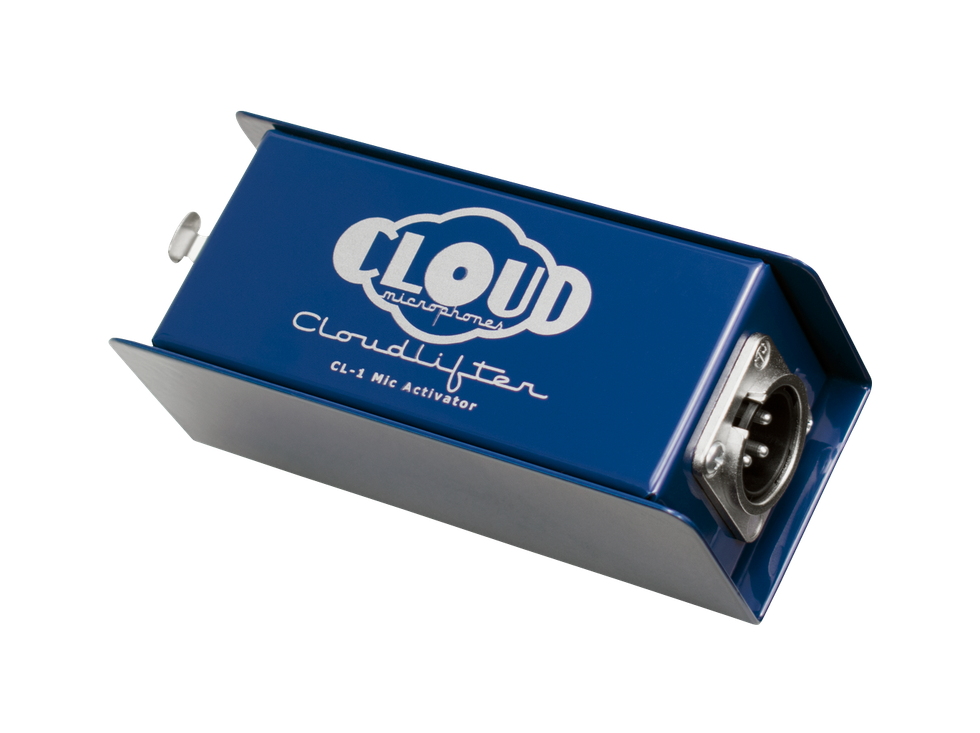
Caparison Horus-WB-FX MF
The Horus-WB-FX is the latest model to be developed within the popular Caparison Horus range.
This newly designed fixed bridge version features a carefully considered body construction featuring a Walnut top and an Australian Blackwood back. This unique fusion produces a full rounded tone with a sweet emphasis on the upper mids ensuring clarity, focus and a distinct separation of notes, even with the most extreme gain-saturated down tunings.
When combined with an upgraded Caparison designed, sustain rich, high mass bridge (which effortlessly copes with a myriad of acute tunings and string gauges) Jescar jumbo stainless steel Frets and a specifically designed set of Caparison pickups, the Horus-WB-FX is more than capable of producing arena filling rock tones or creating more subdued, distinctively rich and bell like cleans.
The Horus-WB-FX plays like an absolute dream and features all of the beautiful aesthetic qualities that you have come to expect from Caparison Guitars. The striking body design is complimented by three stunning new finishes and also comes with a choice of either an Ebony or Maple fret board..
The Woman Tone
The Woman Tone is Aclam’s tribute to Eric Clapton’s amazing sound during his Cream era. The sound that turned him into a god. An accurate approach to the unique tone he attained with a simple yet effective combination of a P.A.F equipped Gibson and 100W Marshall stacks all the way up.
- Eric Clapton's Cream Sound in a box:
Aclam has distilled and bottled in a stompbox the key elements that shaped Eric’s rig. Reproduce his unique rhythmic and solo tones, fine-tuned using both live and studio recordings of Cream.
- Artwork by The Fool's Guitar artist: Marijke koger:
Responsible for the psychedelic decoration of Clapton’s Gibson SG nicknamed “The Fool”, Marijke has created a unique artistic interpretation of the Woman Tone that looks stunning!
- Custom humbucker pickup simulation circuit & tone control:
A pickup simulation circuit emulating the tonal characteristics of a P.A.F style pickup has been incorporated to reproduce the “Woman Tone”. With its buffered input, the guitar signal won’t be affected. Use compressors, fuzzes or whatever effect you want in front of the Woman Tone, and it will retain its tonal characteristics.
- Touch sensitive plexi-inspired overdrive using discrete components:
Inspired by Clapton’s 100W full stacks it results in a powerful overdrive with a great British character! Designed having blues-rock in mind, it will perfectly suit any guitar player seeking a vintage tone!
Templo Devices Holiday Specials
A hot new gear company from Canada, Templo Devices jumped on the scene with their flagship lithium-battery powered amp aimed at electric guitarists.
Focused on creating problem-solving products with tonal excellence, they've since released several small-batch pedals with wide appeal. Including SPLYCE, a versatile mini-mixer for using a microphone with a guitar rig, the atmospheric TRIPLO modulation pedal and the REEL DEAL tape preamp, as well as their exciting upcoming release, the Pocket Studio Compressor. There is always something exciting coming from this northern innovator.
With plenty of great deals for the holiday season, they have a little something for everyone.
Taylors Guitars GS Mini
Meet the Taylor GS Mini, one of the world's most popular acoustic guitars: a smaller body and a compact feel with a big, bold tone that punches far above its size. Based on a scaled-down version of our Grand Symphony body shape, GS Mini guitars boast solid tops and a variety of tonewood options serving up different flavors of vibrant acoustic tone. The GS Mini family is also home to the GS Mini Bass, a super-compact four-string acoustic bass with a slinky feel and a punchy response. Whether you're looking for a campfire guitar, a songwriting tool or just a great-sounding acoustic that's up for anything, the GS Mini has you covered.
DR-05X Stereo Handheld Recorder
The TASCAM DR-05X stereo handheld recorder is a great-sounding portable recording solution with helpful workflow options. Use the TASCAM DR-05X's built-in omnidirectional condenser microphones to capture vibrant stereo recordings anywhere, anytime. Use Auto Recording mode to automatically engage recording when audio signals reach a certain level. Use the Overwrite function to make easy punch-in audio replacements. Or use the TASCAM DR-05X as a 2-input/2-output USB audio interface with your Mac or PC. Whatever your portable 2-channel recording needs are, the TASCAM DR-05X has you covered. It's a fantastic and easy way to record your ideas, rehearsals, or gigs. Simply remove the SD card and pop it into your computer and send your song ideas to bandmates or collaborators. It's small enough to take with you everywhere and fits easily in a guitar case or small bag.
Sennheiser MD 421
Jaclyn Slimm
MD 421-II
The cardioid MD 421 has been one of Sennheiser’s most popular dynamic microphones for decades. The large-diaphragm, dynamic capsule handles high sound pressure levels, making it a natural for recording guitars and drums. The MD 421's full-bodied cardioid pattern and five-position bass control make it an excellent choice for most instruments, as well as group vocals or radio broadcast announcers. One listen and you'll know why it’s a classic.
EARTHBOARD Pedalboard
Every once in a while, a product comes out that makes you go “Wait… WHAT?!?!”. Well, those words are music to our ears! This game-changing pedalboard allows you to power all your pedals, including pedals that need isolation and different voltages, with a single power source. Yep, either our rechargeable battery or AC adapter fires up all your pedals without additional power bricks. No more Velcro carpet to rip pedals off! You can literally change pedals on the fly. But the flexibility of EARTHBOARD doesn’t end there – Our Lifeline Tether carries power off the board to connect a WAH, or daisy-chain multiple EARTHBOARDs together. EARTHBOARD comes in 2 sizes: double row (holds 12 standard size pedals) and single row (holds 6 standard size pedals). They are available as Complete Pedalboard Systems (includes all necessary components to play) or as a Build-a-Board and "ala cart" accessories!
See video: https://www.youtube.com/watch?v=S3iwDgLnN6w&t=8s
Nobels ODR-1(bc)
The Nobels ODR-1(bc) has bass cut, 9-18 volt input, and glow-in-the-dark knobs. The ODR-1 is rated the best overdrive by Nashville studio guitarists and creates a natural, tube-amp style overdrive that is versatile, amp-like, and affordable. The ODR-1 has been on the market for over 30 years and remains the number one choice. Creates crunchy rock and blues sounds or extra boost for soloing without smothering the natural character of your guitar's tone. The Spectrum controls optimizes tones from single coil chime to powerful humbucker rock. When adjusting the Spectrum control up or down the circuit ensures you have plenty of clarity and full dynamic range.
Features
Bass cut switch
Spectrum Control
Glow-in-the-dark knobs
Solid metal chassis
Nobel's remote control jack switching system
German Engineering. Made in China.
Click here for Audio Clips
Orangewood Guitars Oliver Jr.
Modeled after Orangewood’s full-size Oliver guitar, the Oliver Jr. is a scaled-down version of Orangewood’s best-selling grand concert model. But don’t let the small body fool you. Sporting a beautiful, woodsy solid mahogany top, this junior guitar sings a bold and bright tone that’s easy to love. Whether you’re looking for your new travel companion or simply want a compact guitar to live near your couch, you can’t go wrong with this perfect-sized guitar.
Prefer a full-size model? This holiday season, every Orangewood guitar includes a professional set up and free shipping right to your door with a premium gig bag included. Plus, get extended holiday returns until January 31st. That’s over 60 days of commitment-free playing, so you can gift a guitar that they’re sure to love.
Marshall CODE 50 Digital Combo Amp
Jump straight in and explore 100 presets, the CODE50 has all you need to start performing and recording with. 50W of power that’s portable enough for you to practice at home or in the garage. Sync with your phone or online so it’s always with you for those creative moments. This fully digital amp is loaded with 14 MST preamps, 4 MST power amps and 8 MST speaker cabinets for you to create sounds that suit you. Using the Gateway App you can connect via Bluetooth to control CODE and stream music from your iOS or Android device. MyMarshall has a global library of user presets that you can upload to and download.
Line 6 Catalyst 100
Catalyst® 100 is a 100-watt, dual-channel 1x12 combo amplifier that performs like a traditional guitar amp—while providing the increased versatility of a modern amp. Catalyst 100 offers six Original Amp Designs—ranging from pristine clean to modern high-gain—crafted using our renowned HX® sound design techniques to ensure exceptional tone and feel. Ideal for stage or studio.
• 100-watt, dual-channel 1x12 combo amp (with optional LFS2 footswitch)
• Catalyst 100 operates like a traditional amp—but provides increased versatility
• 6 Original Amp Designs—pristine clean to modern high-gain
• Dedicated Boost and Reverb sections (6 reverb types), 18 Effects (3 types)
• Power attenuator (half power, 0.5 watts, Mute) for reduced volume
• XLR line output for pro connection to P.A. or recording devices
• Effects loop and Power Amp input for integrating external devices
• MIDI In via DIN connector
LR Baggs Venue DI
Every Tool You Need in One Acoustic Pedal
We created the Venue DI so you can travel light, set up fast, and sound incredible anywhere you plug in. The Venue DI gives you complete control by combining a full-isolation DI output, 5-band EQ with adjustable low & hi-mid bands, variable clean boost, and chromatic tuner all in one acoustic pedal. With its all-discrete signal path, hi-graded semiconductors, and exclusive use of audiophile grade film capacitors, the Venue DI is on par with the world’s elite preamps and provides a studio quality sound for the stage.
Kali Audio LP-6 V2
The LP-6 V2 is Kali's best-selling studio monitor, and it's made its mark in studios across the globe ranging from humble home setups to state-of-the-art recording facilities.
Kali's innovative 3-D imaging waveguides create a crystal-clear stereo image, and also help the speakers to perform their best in challenging acoustic spaces. Kali-programmed boundary EQs take this a step further, tailoring the sound of the speaker for its placement on stands, on a desk, or close to walls.
With accuracy and translation at the forefront, the LP-6 delivers transparent, full sound that gives you a complete picture of your mix. Whatever you mix on the LP-6, you can be sure that it will translate nicely to other speakers, earbuds and headphones, car systems, or whatever else your listeners are using for playback.
Eventide H90 Harmonizer®
The H90 Harmonizer® is Eventide's next-generation multi-effects pedal. Whether you want high-quality bread and butter effects or experimental sounds unheard, the H90 has everything you need to inspire your creativity with an intuitive UI designed with players in mind. Discover why top artists and producers have chosen Eventide through the years with 62 effect algorithms and hundreds of Program combinations curated for a variety of instruments and genres. With its comprehensive I/O and flexible routing options, the H90 is designed to be the heart of your rig.
Wilkinson R Series Trev Wilkinson Signature Pickups
Wilkinson's R series range of pickups are the result of Trev Wilkinson's years of creating and listening to thousands of pickups. Time spent with legendary and iconic individuals such as Seth Lover and Leo Fender, with whom Trev questioned about all aspects of sound, construction materials and production methods. All this combined knowledge has been the template for the R Series range of pickups, a pickup range Trev is proud to place his signature on, and say " These are the finest pickups Wilkinson has produced in the history of the company".
Featuring Single Coil's for both S and T style guitars, P90 and Humbucker models, the R Series has era specific models to capture the tone and vibe of the time and the players that influenced generations of players and Hybrid designs to influence future players.
Hercules Stands Five-Piece Guitar Rack with Two Free Expansion Packs
For a limited time only, get two FREE expansion packs with the purchase of a five-piece guitar rack. Showcase your collection while safely and securely storing seven to ten guitars. The Hercules GS525BP-HA205 is covered with Specially Formulated Foam rubber at all contact points and features a one-piece design that sets up and tears down easily. The guitar yoke is designed for acoustic, electric, and bass guitars with four pick slots on each yoke. This special pack comes with a total of seven guitar yokes leaving room to expand to ten. Available while supplies last.
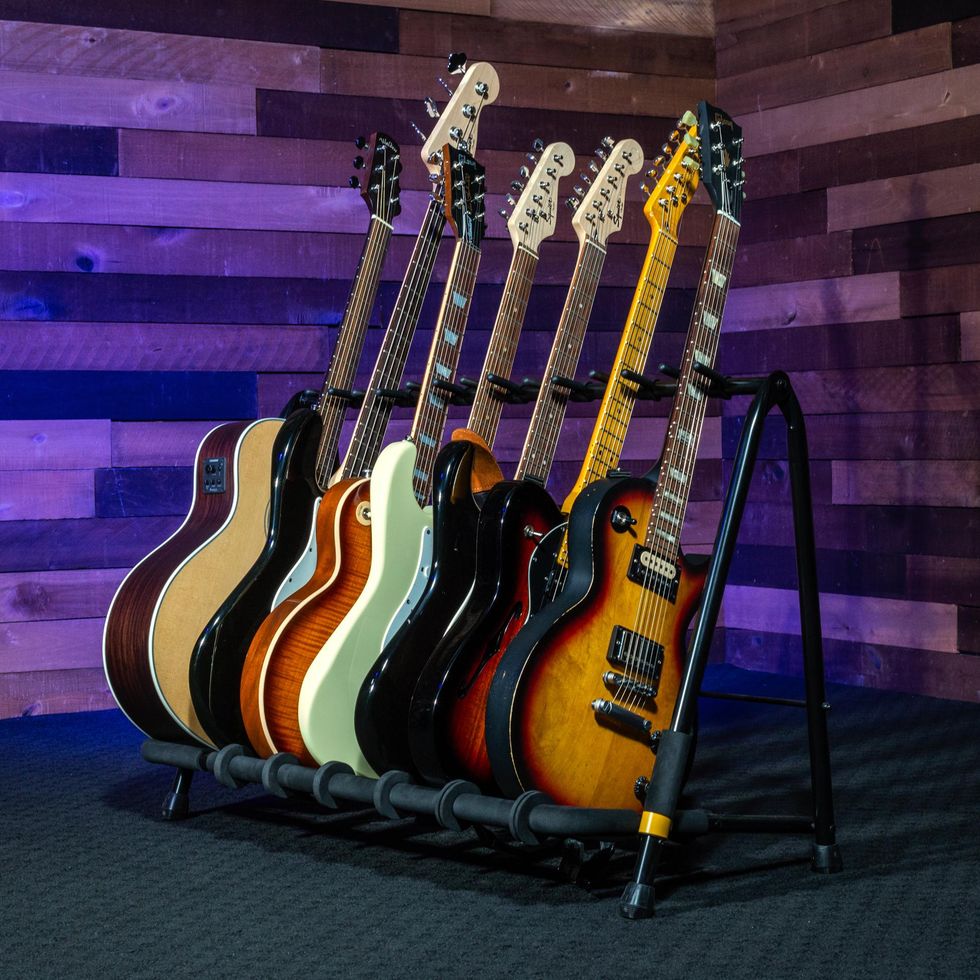
ISP Hum Extractor Pedal
Ultimate DSP 2 channel noise reduction pedal. Patented technology that will remove the 50Hz or 60Hz and all associated hum harmonic components with total transparency. Combined with the patented Decimator G technology and dynamic sliding low pass filter, the Hum Extractor is the pinnacle of noise reduction technology. The Hum Extractor technology is dynamic in operation which compares the level of the audio signal to the hum harmonic components. Dynamically removes hum components when they become dominant. Made in the USA.
Click here for video
LAVA ME 3
With the multi-touch display integrated with HILAVA OS, the LAVA ME 3 provides easy access to play and customize tons of built-in effects and loops.
Wampler Metaverse
Comprising eleven of Brian Wampler’s favorite delays, the Wampler Metaverse is a full-featured, small-footprint multi delay stomp box that is fully programmable, preset capable, has stereo inputs and outputs, allows full MIDI control, and has an expression input that you can assign to ANY of the parameters. The Metaverse also comes with a software version of the pedal via a set of 11 AU and VST3 plugins compatible with most popular DAWs - FREE to all customers that register their Metaverse online.
• Studio quality conversion 48 kHz Sampling rate with 24-bit audio
• Full 20Hz to 20kHz frequency response
• 11 Studio-quality vintage and modern delay effects
• Simple user interface
• All parameters controllable via an outboard expression pedal
• 8 onboard preset locations to save your favorite patches, 128 total via MIDI
• Full MIDI control with CC and PC commands
• Stereo or Mono I/O
Gator Cases Transit Guitar Gig Bags
Gator's Transit Series acoustic gig bags provide rugged case-like protection without sacrificing the lightweight portability of a bag. The red soft-lined interior and thick foam padding safeguard your guitar from drops and bumps, just like a regular case. A weather-resistant blended fabric exterior protects against the elements and features backpack straps, each with a concealable zipper pocket to switch between backpacking and briefcase carry modes. So for the gear you love the most, Guard it with Gator.
Fralin'Tron
Experience exceptional clarity and articulation in a Filter’Tron format with Lindy’s unique Fralin’Tron design. Featuring a focused single-coil vibe with a rich, warm midrange and crisp attack, you’ll wonder where this pickup has been all your life. When Lindy started designing the Fralin’Tron, he did so with a particular goal: to get as much clarity and articulation as possible out of this design.We’re thrilled with the result! Our Fralin’Tron features a scooped midrange and defined bass and highs. In addition, you can expect more nuance out of the wound strings, unlike the original design. Furthermore, the treble strings have a round, warm quality, making our Fralin’Tron perfect for all styles of music – from clean to dirty. Lastly, this pickup features a dynamic and punchy attack that gives you back what you put into it.
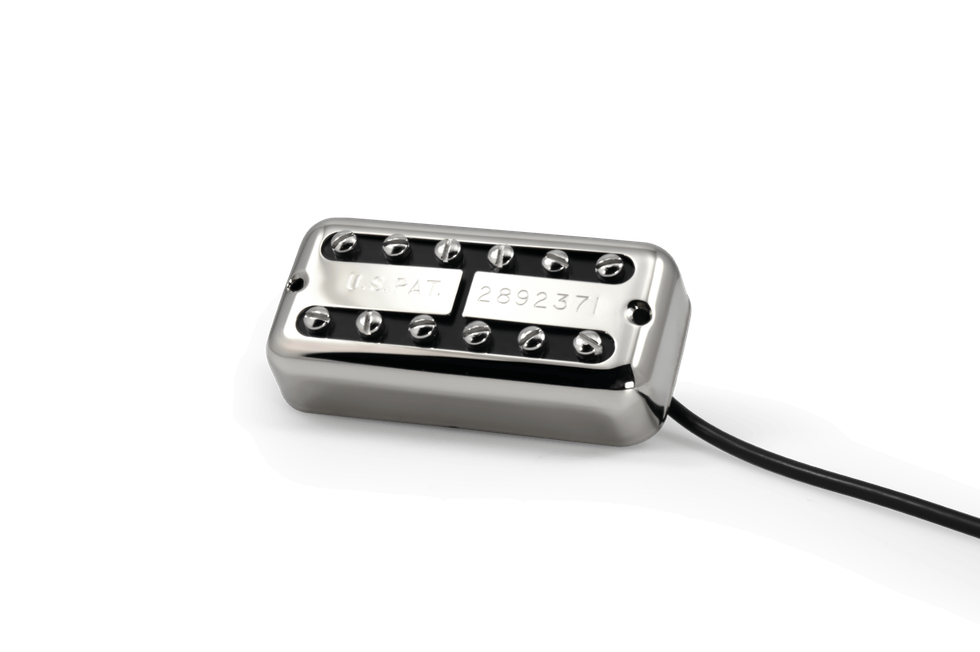
DeLoach Guitars DL-225
The DL-225 is handcrafted exclusively from all mahogany, producing a warm and brilliant sound. The soundboard of the DL-225 features a vintage bracing pattern resulting in outstanding projection and tone with brilliant highs, strong midrange and subtle but full bass. The DL-225 has an extremely bright and dynamic sound. This guitar has the sound of a large body guitar. In a fingerpicking demonstration comparison we did with a name brand dreadnought the DL-225 was +3 dB louder.
Its smaller size and depth make the DL-225 a very comfortable guitar to play.
Click here for video and audio examples
Wampler Pedals Ratsbane
If you are looking for a single pedal solution with multiple degrees of gain from light overdrive to full out saturated fuzz tones, then you’ll surely love the Ratsbane. The Ratsbane is based on a true benchmark sound amongst guitarists that has been heard on thousands of famous recordings.
In typical Wampler fashion, Brian improved the circuit’s flexibility by adding two new switches. The Gain switch offers three distinct choices. In the middle gives you the “stock” gain for this pedal. The left position offers a firm, yet smooth boost in gain, whereas the right delivers an insane level of creamy distortion. The Voice switch subtly alters the compression and clipping of this pedal. It tightens the distortion to be more manageable with greater levels of gain, while rolling back some of the fuzz qualities, to deliver a modern, high gain distortion.
Click here for video clips
